Abstract
This report describes the activities of 168 chemicals tested in a standard transformation assay using A-31-1-13 BALB/c-3T3 cells. The data set includes 84 carcinogens, 77 noncarcinogens, and 7 research chemicals. Carcinogens included 49 mutagens and 35 nonmutagens; noncarcinogens included 24 mutagens and 53 nonmutagens. The transformation assay did not use an exogenous activation system, thus, all chemical responses depended on the inherent target cell metabolic capacity where metabolic activation was required. The upper dose limit was 100 milli-osmolar because the assay could not discriminate active and inactive chemicals tested above this concentration. Certain physicochemical properties resulted in technical problems that affected chemical biological activity. For example, chemicals that reacted with plastic were usually nonmutagenic carcinogens. Similarly, chemicals that were insoluble in medium, or bound metals, were usually nonmutagenic and nontransforming. Multifactorial data analyses revealed that the transformation assay discriminated between nonmutagenic carcinogens and noncarcinogens; it detected 64% of the carcinogens and only 26% of the noncarcinogens. In contrast, the transformation assay detected most mutagenic chemicals, including 94% of the mutagenic carcinogens and 70% of the mutagenic noncarcinogens. Thus, transformation or Salmonella typuimurium mutagenicity assays could not discriminate mutagenic carcinogens from mutagenic noncarcinogens. Data analyses also revealed that mutagenic chemicals were more cytotoxic than nonmutagenic chemicals; 88% of the mutagens had an LD50 < 5 mM, whereas half of the nonmutagens had an LD50 > 5 mM. Binary data analyses of the same data set revealed that the transformation assay and rodent bioassay had a concordance of 71%, a sensitivity for carcinogens of 80.0%, and a specificity for detecting noncarcinogens of 60%. In contrast, Salmonella mutagenicity assays and rodent bioassays had a concordance of 63%, a sensitivity of 58%, and a specificity of 69%. The transformation assay complemented the Salmonella mutagenesis assay in the identification of nonmutagenic carcinogens; thus, the two assays had a combined 83% sensitivity for all carcinogens and a 75% specificity for nonmutagenic noncarcinogens.
Full text
PDF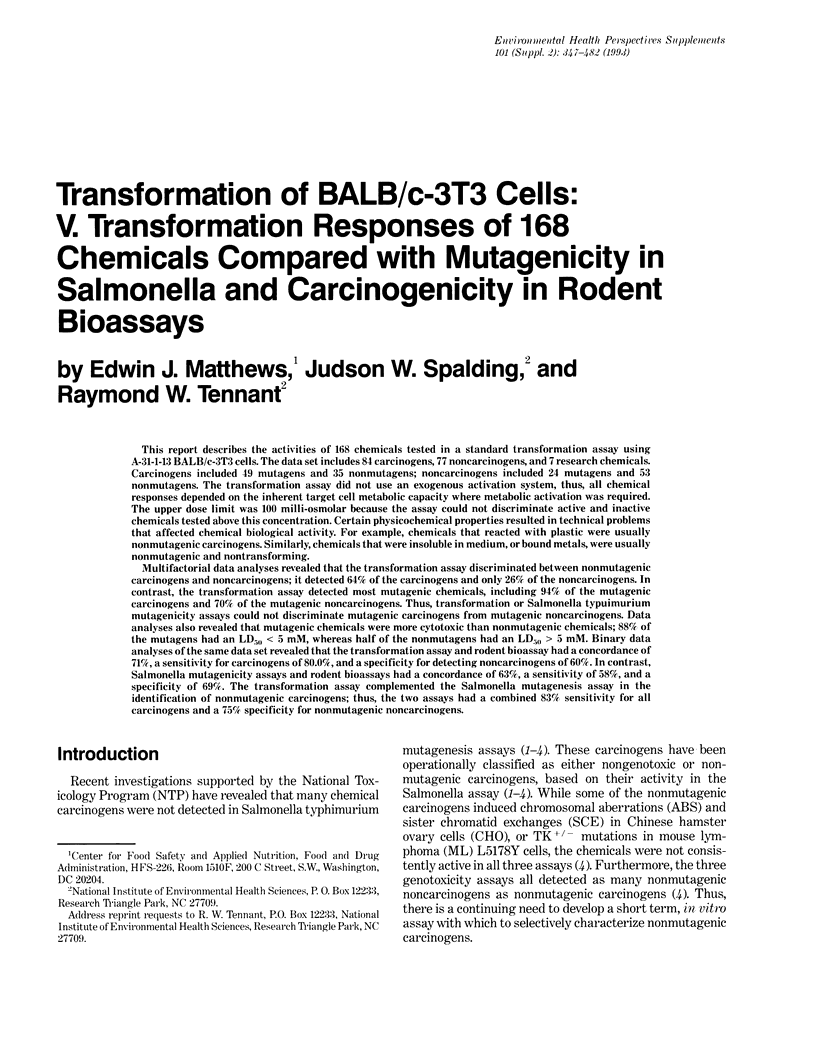
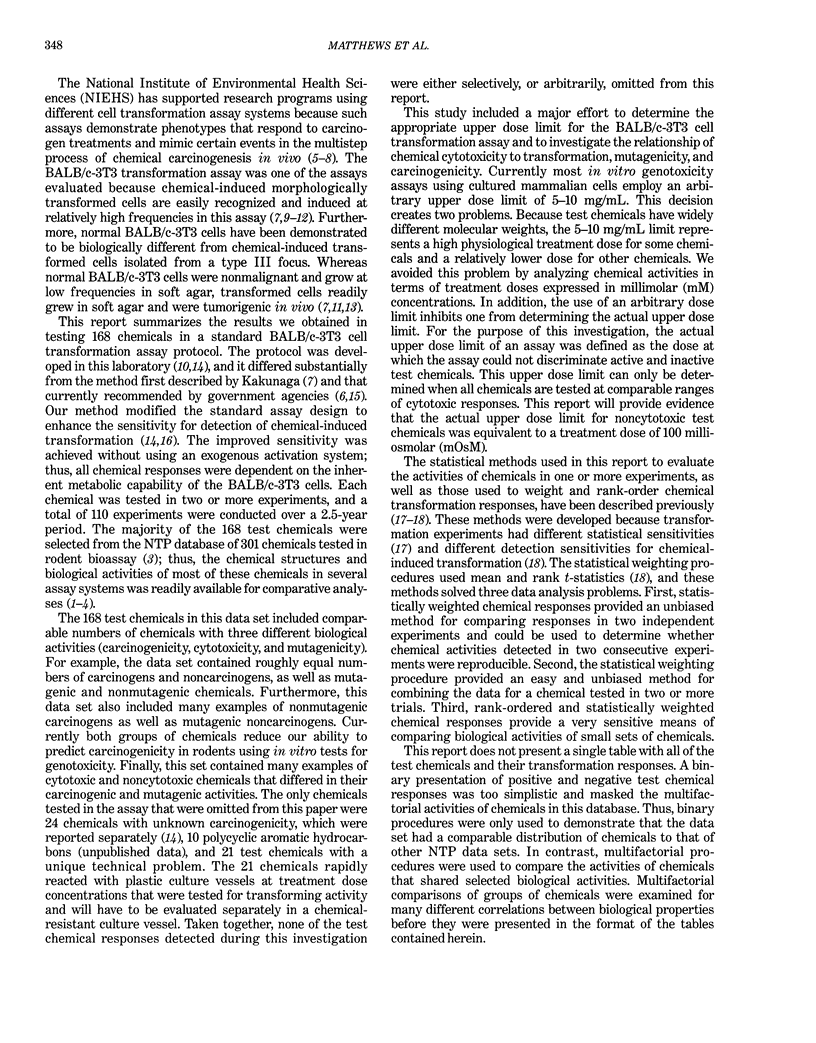
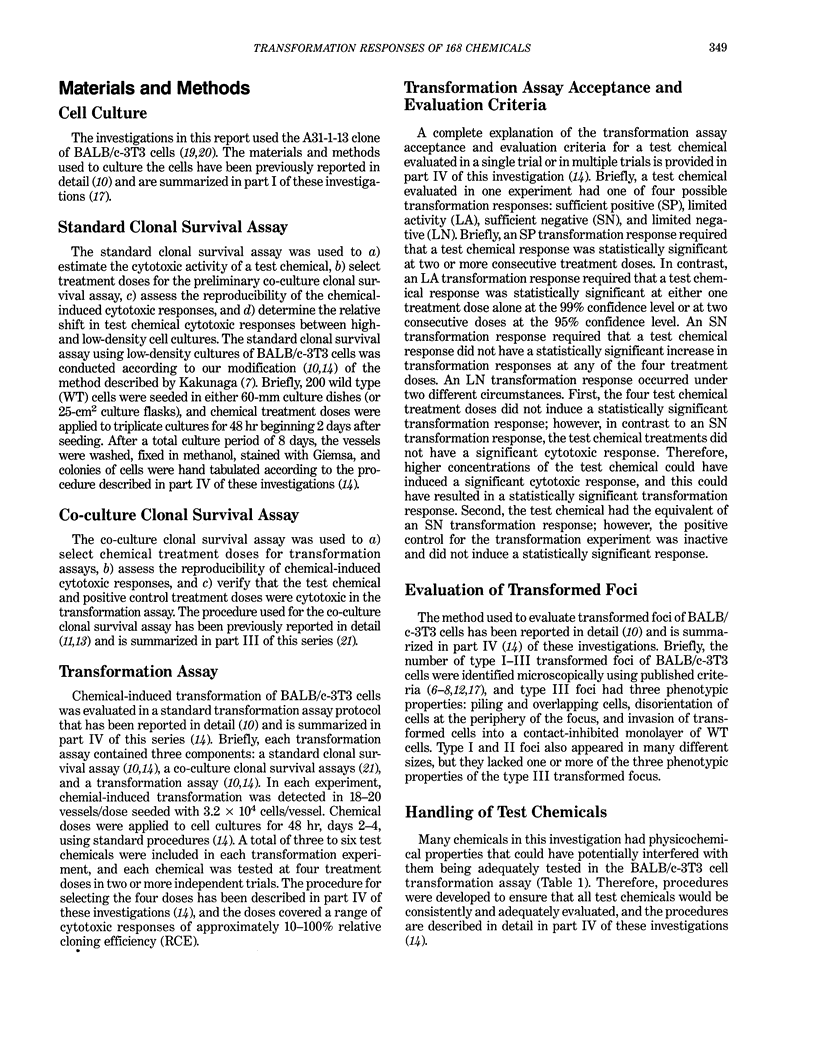
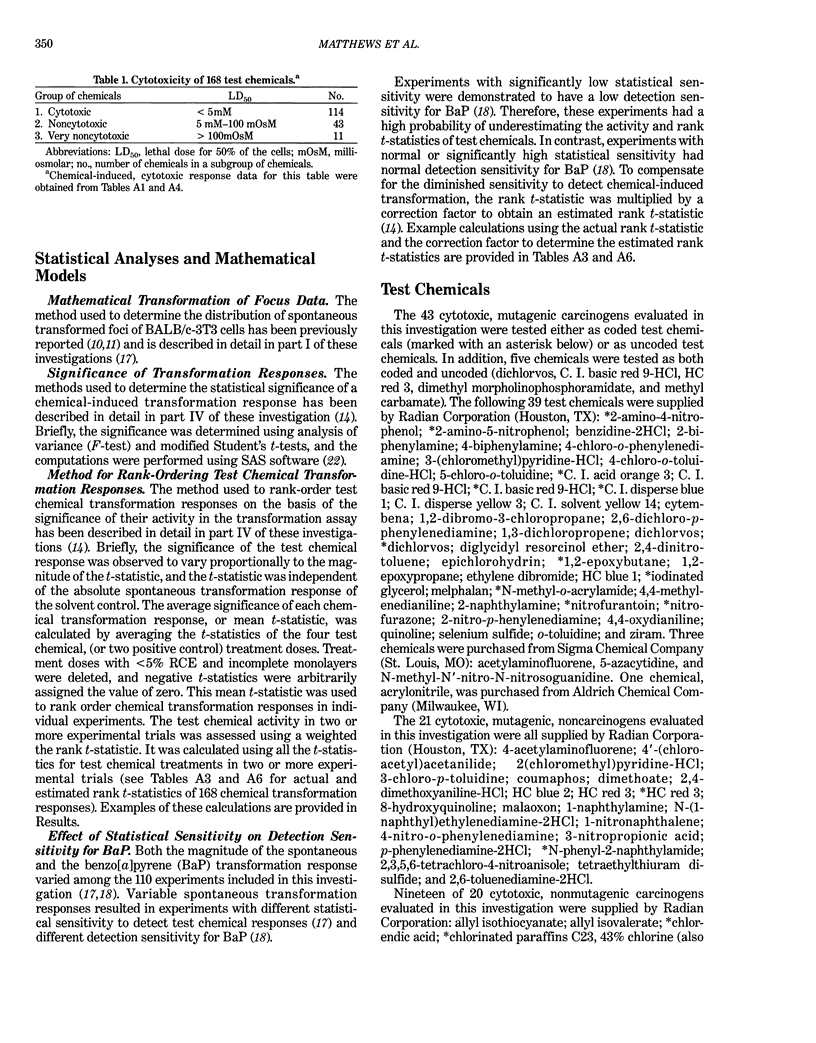
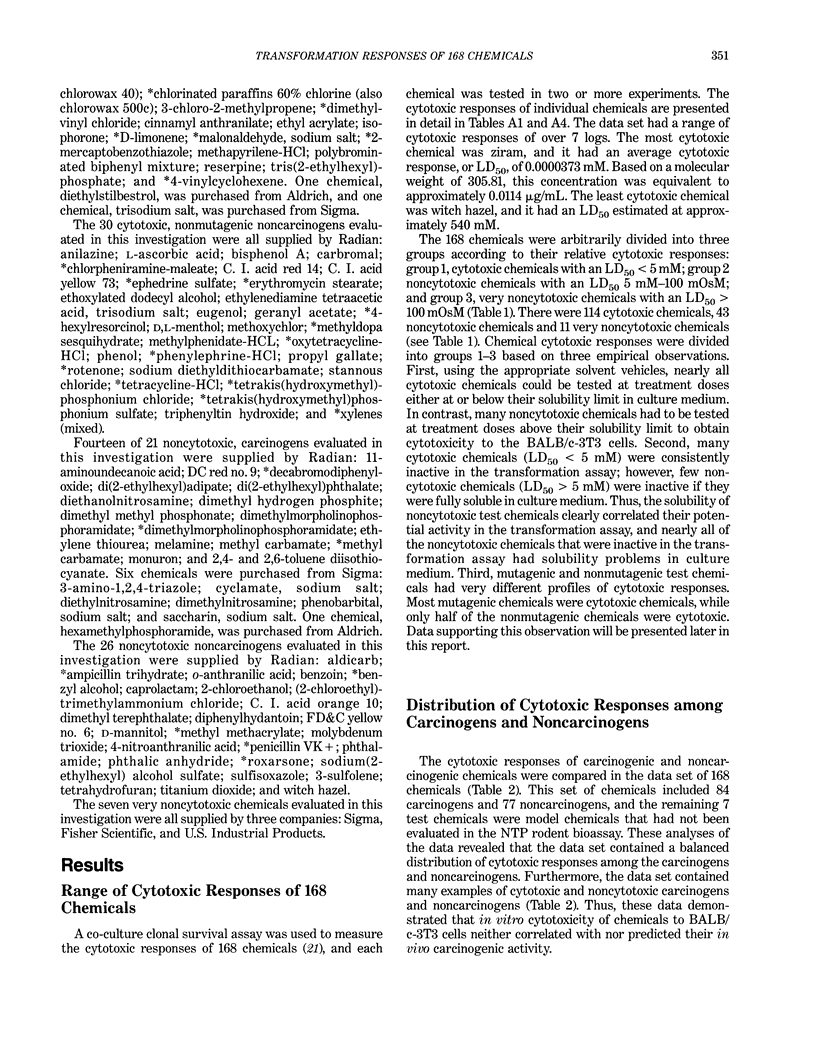
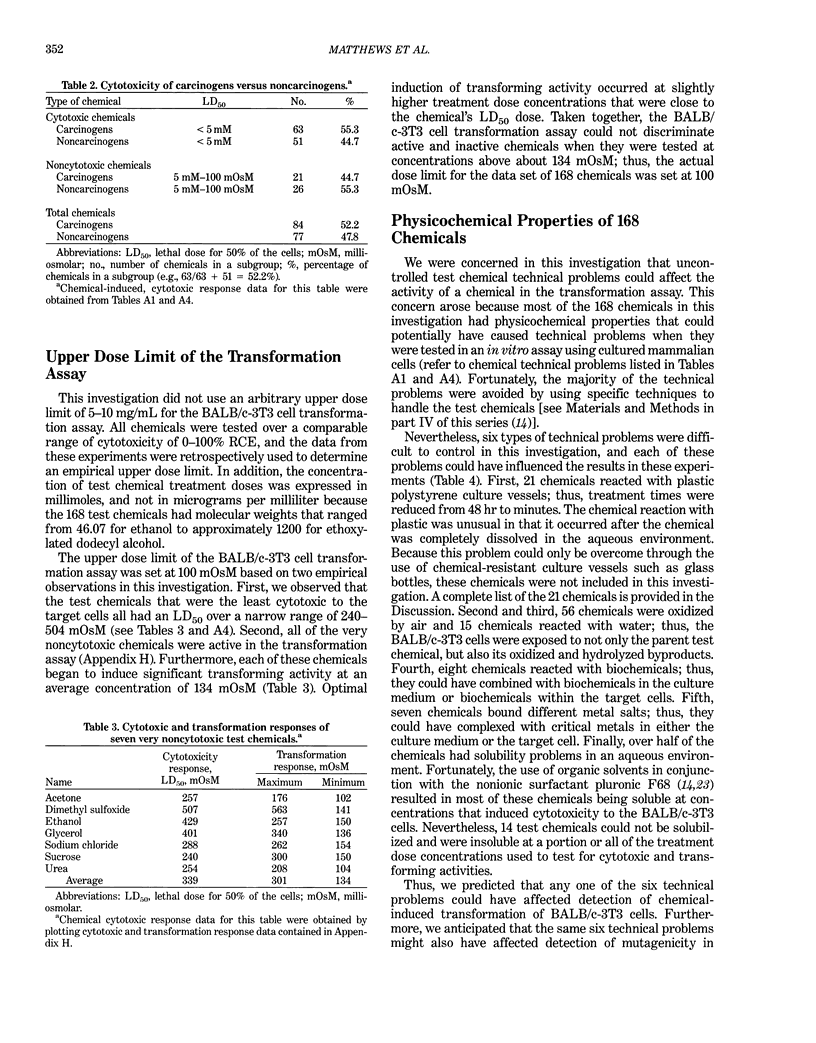
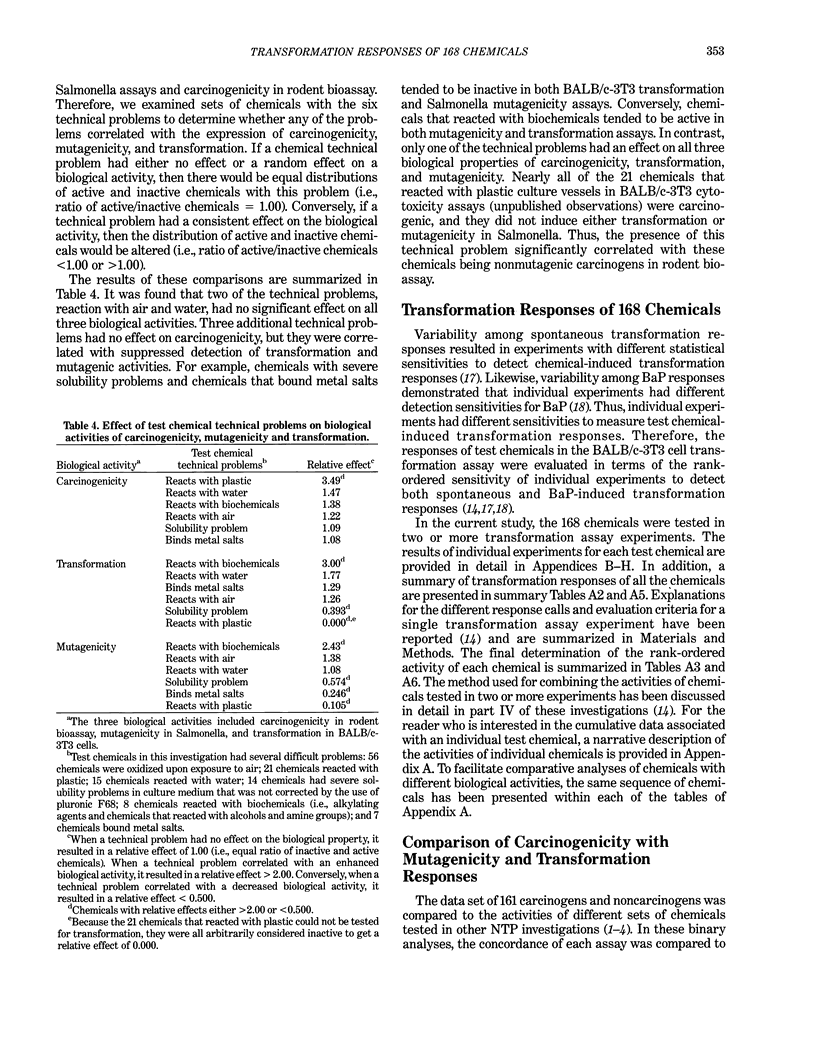
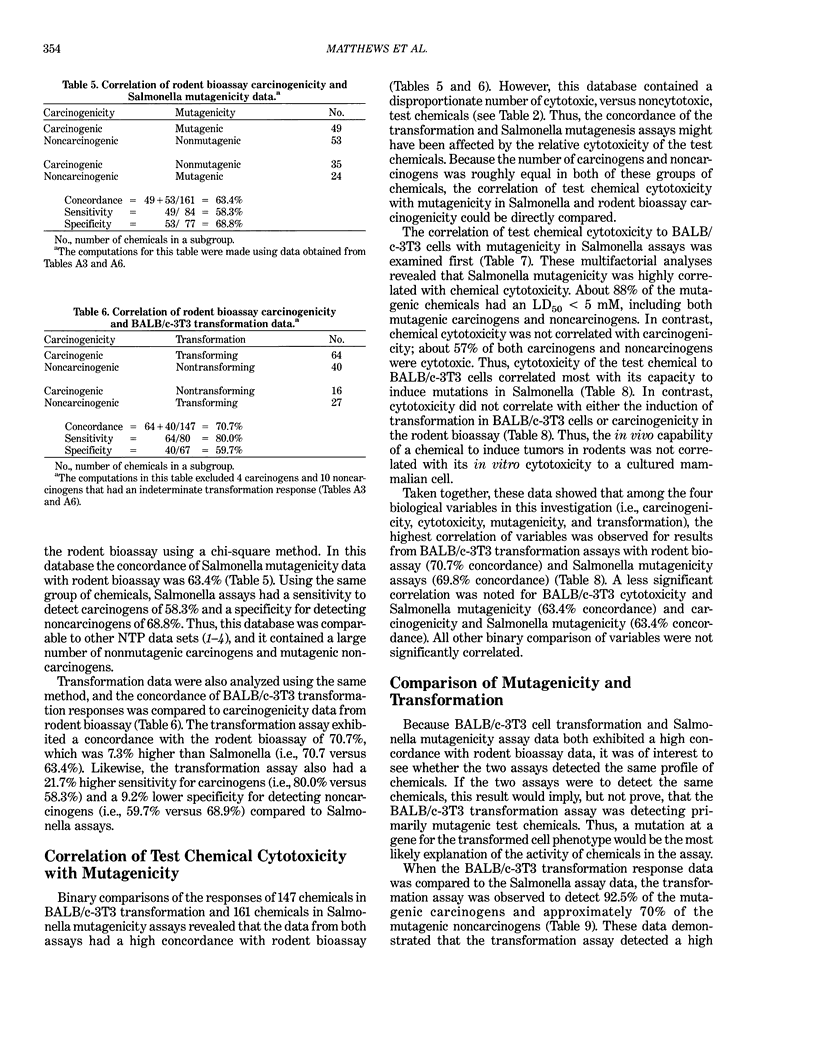
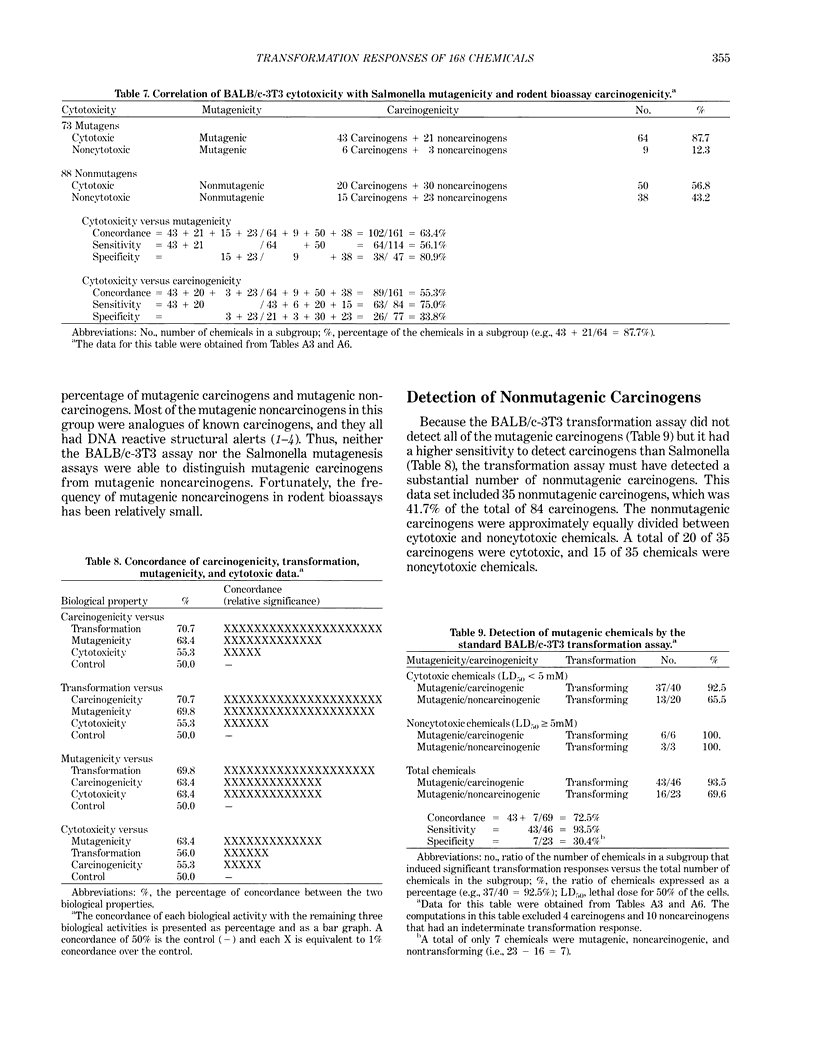
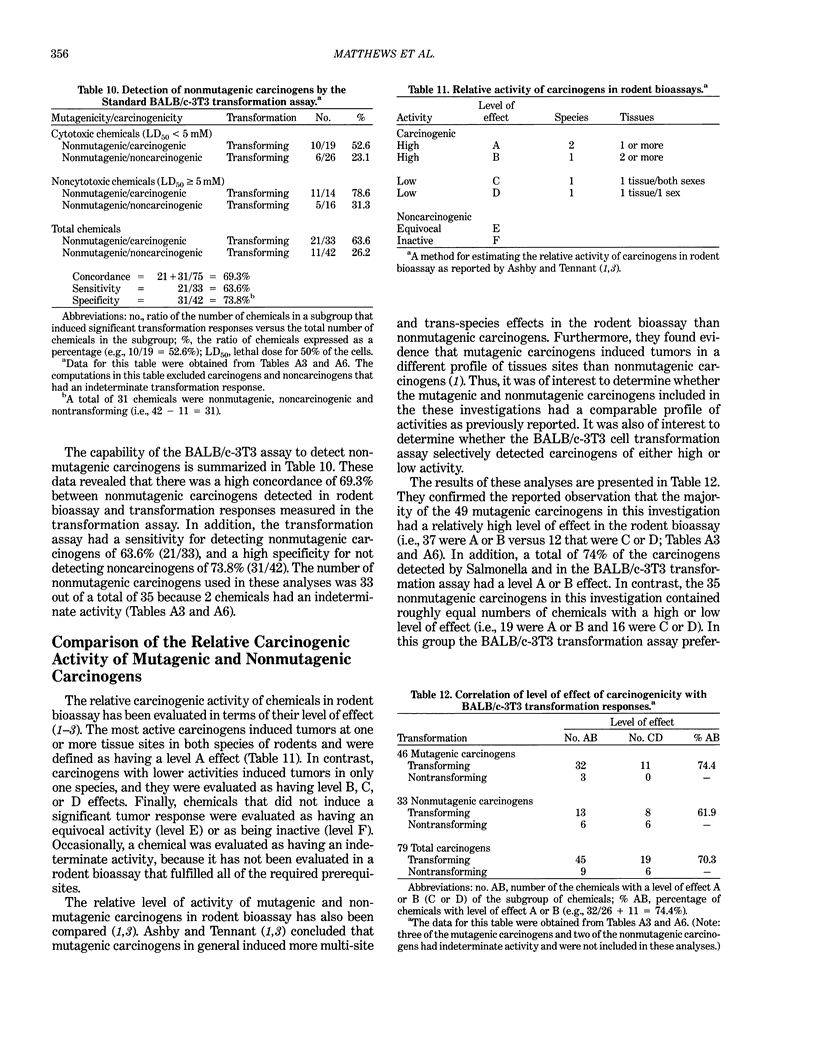
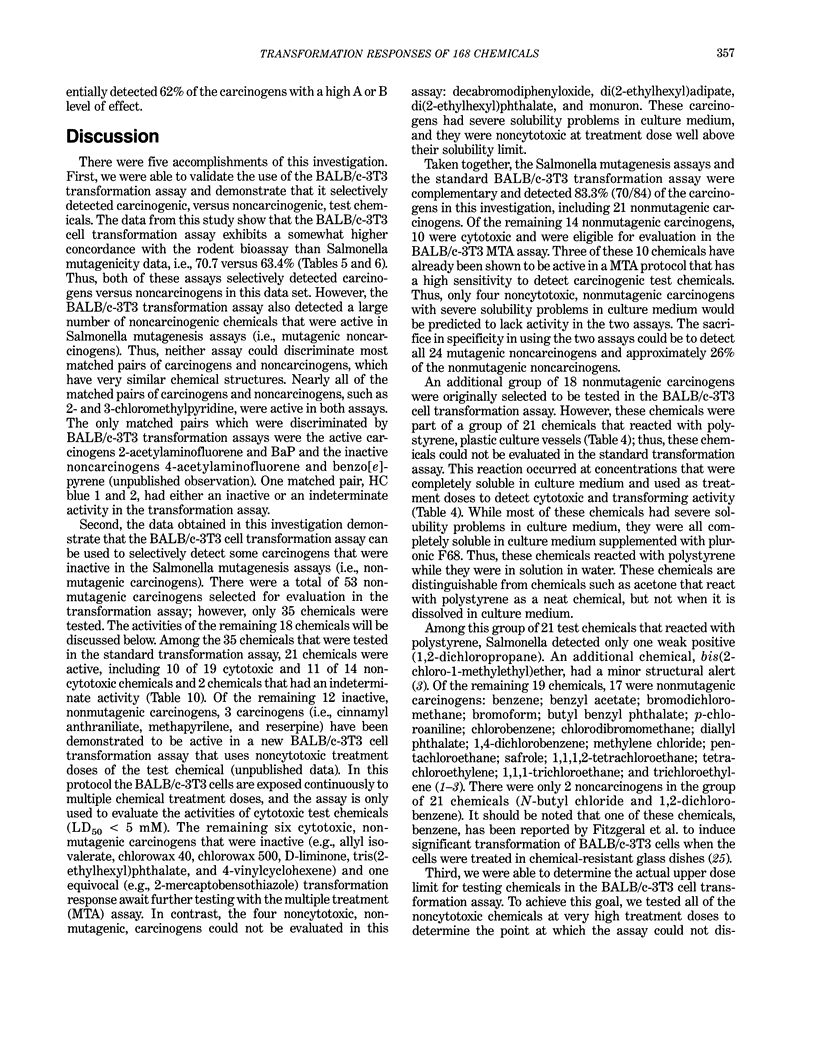
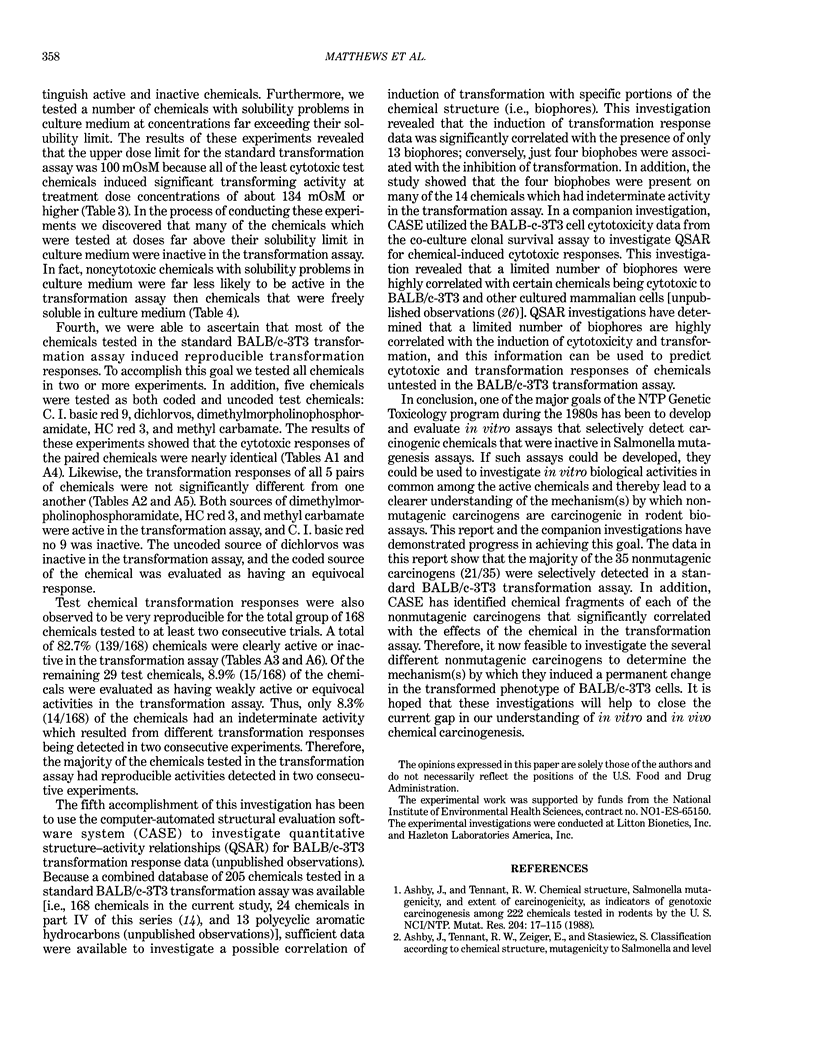
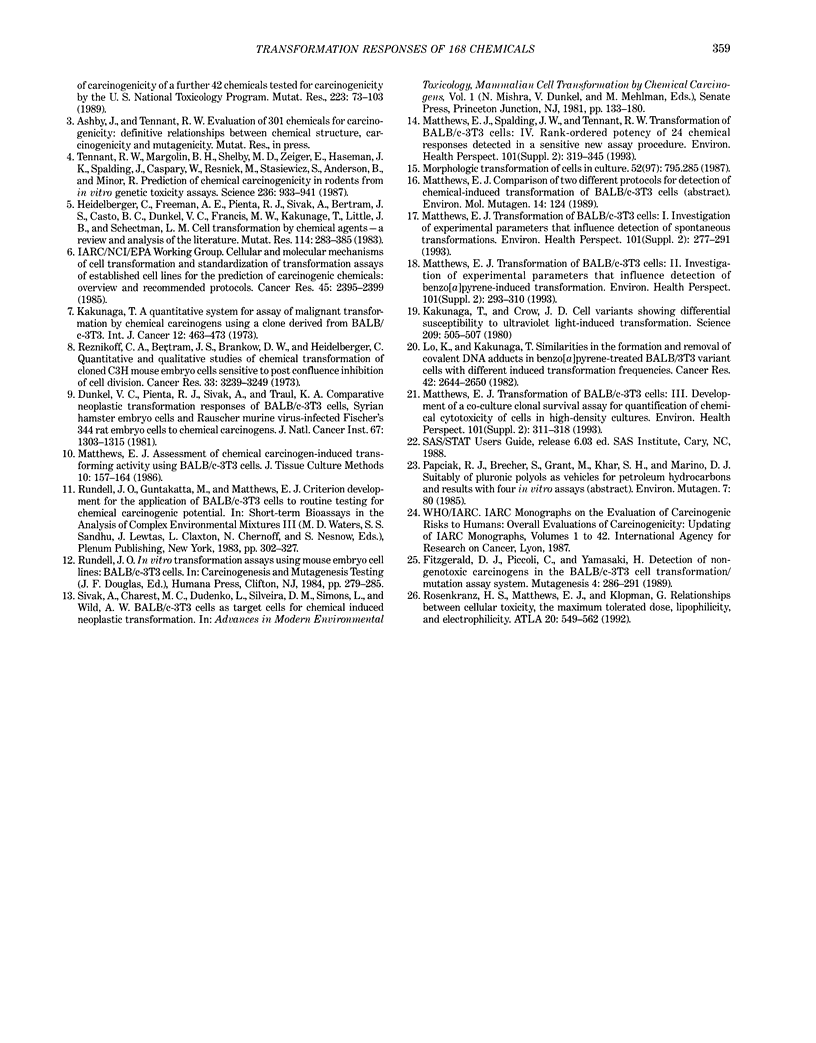

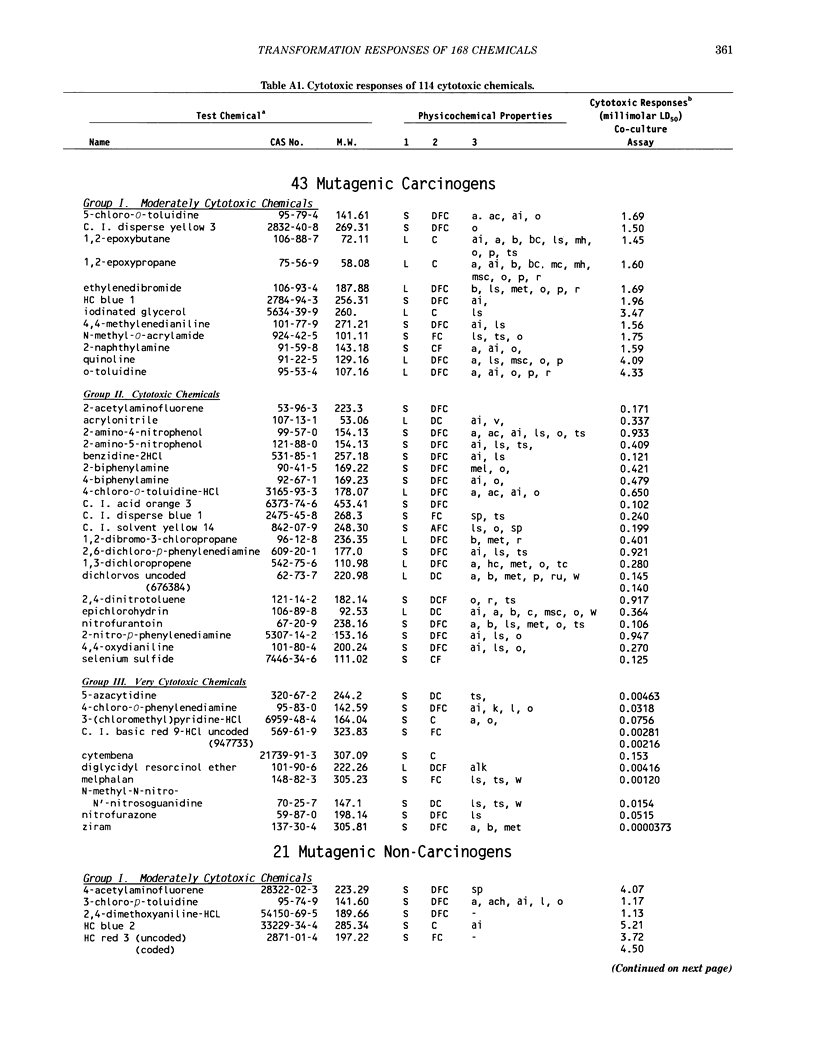
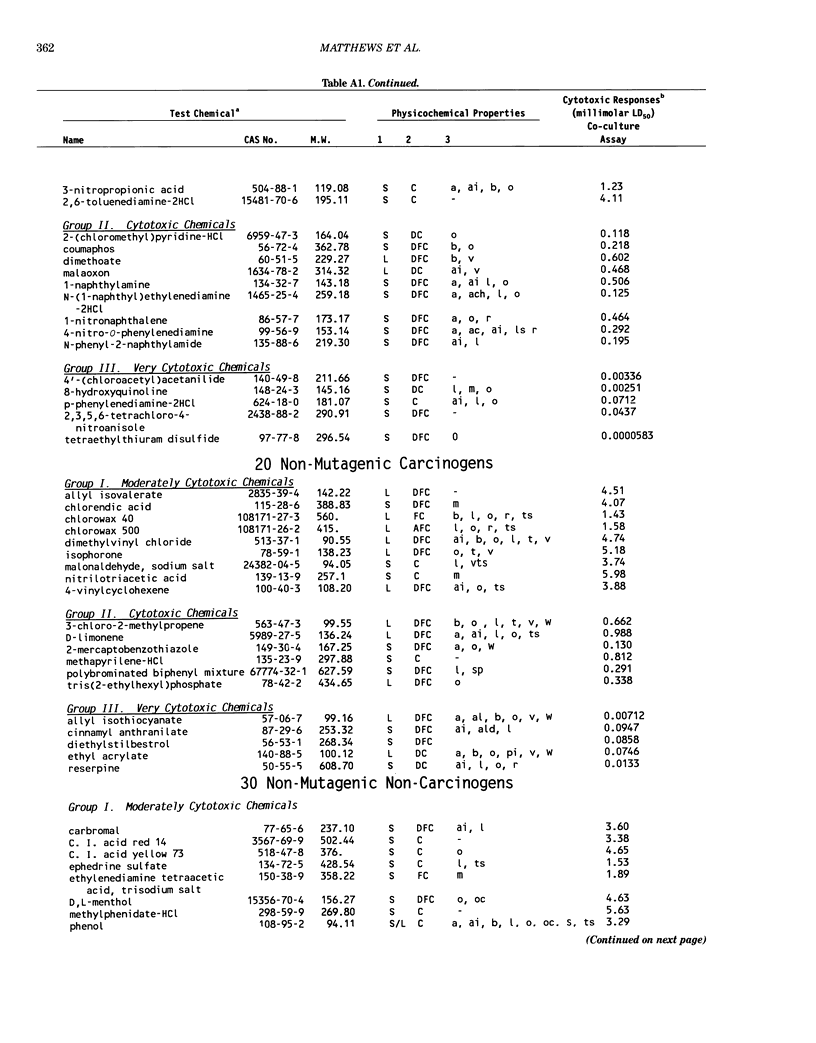
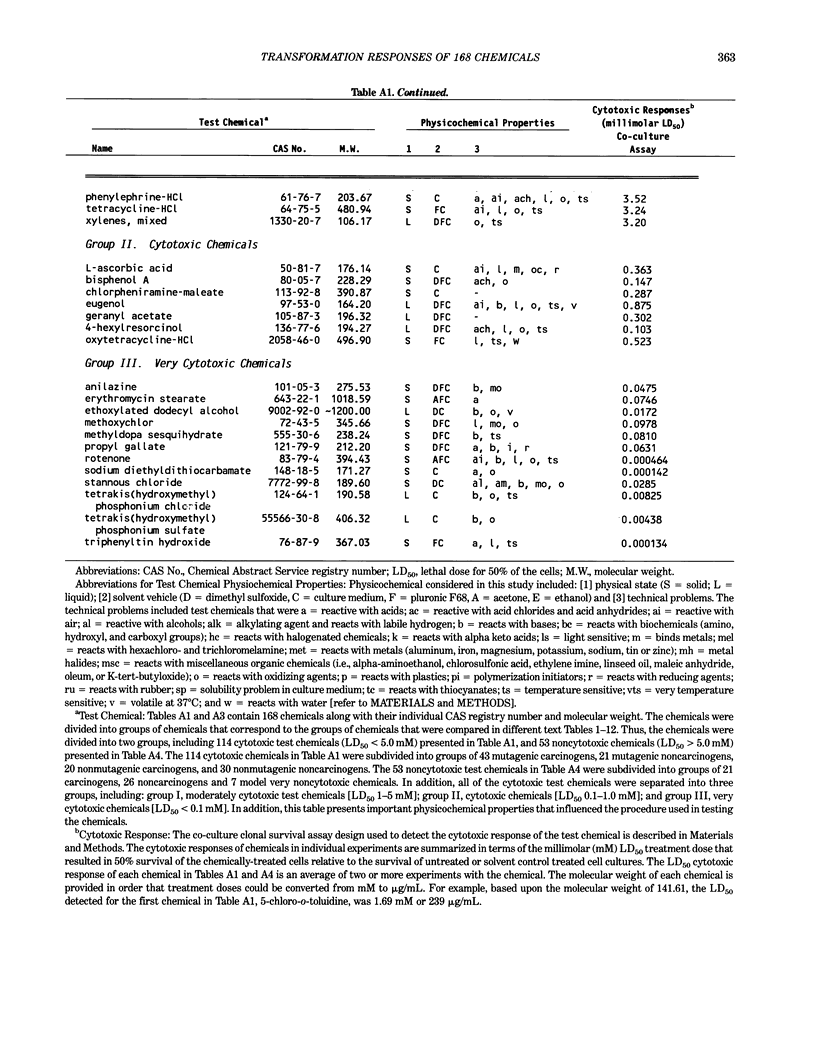
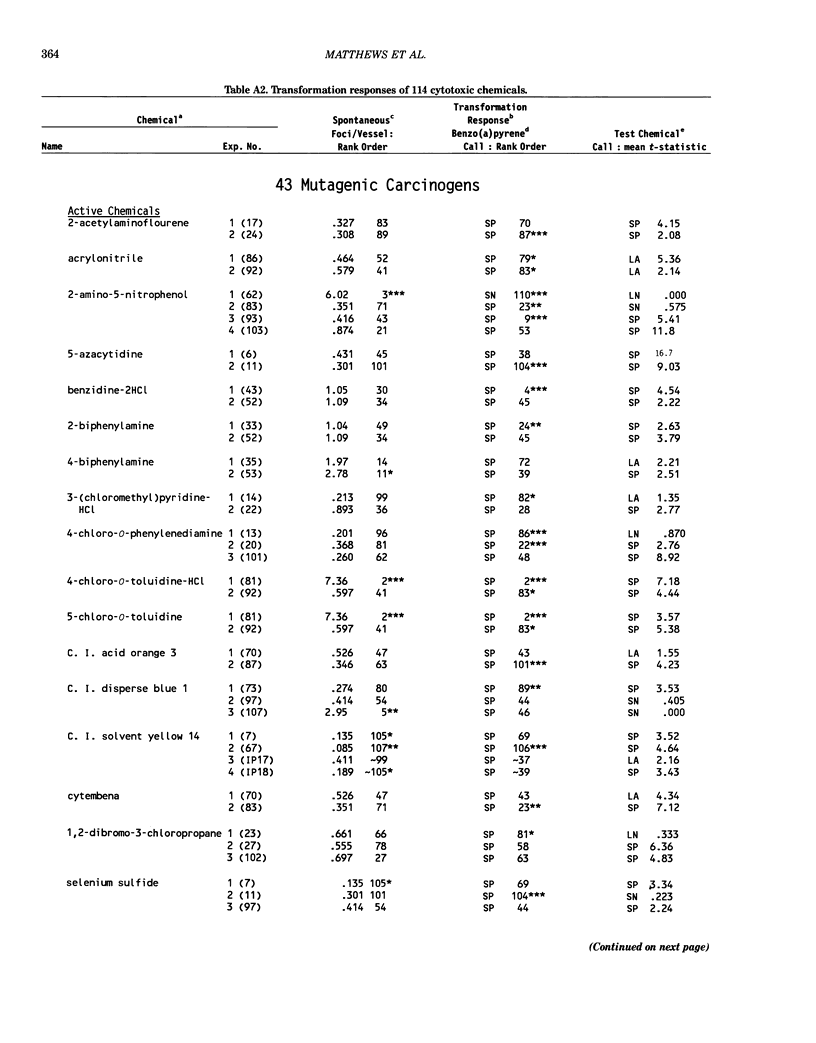
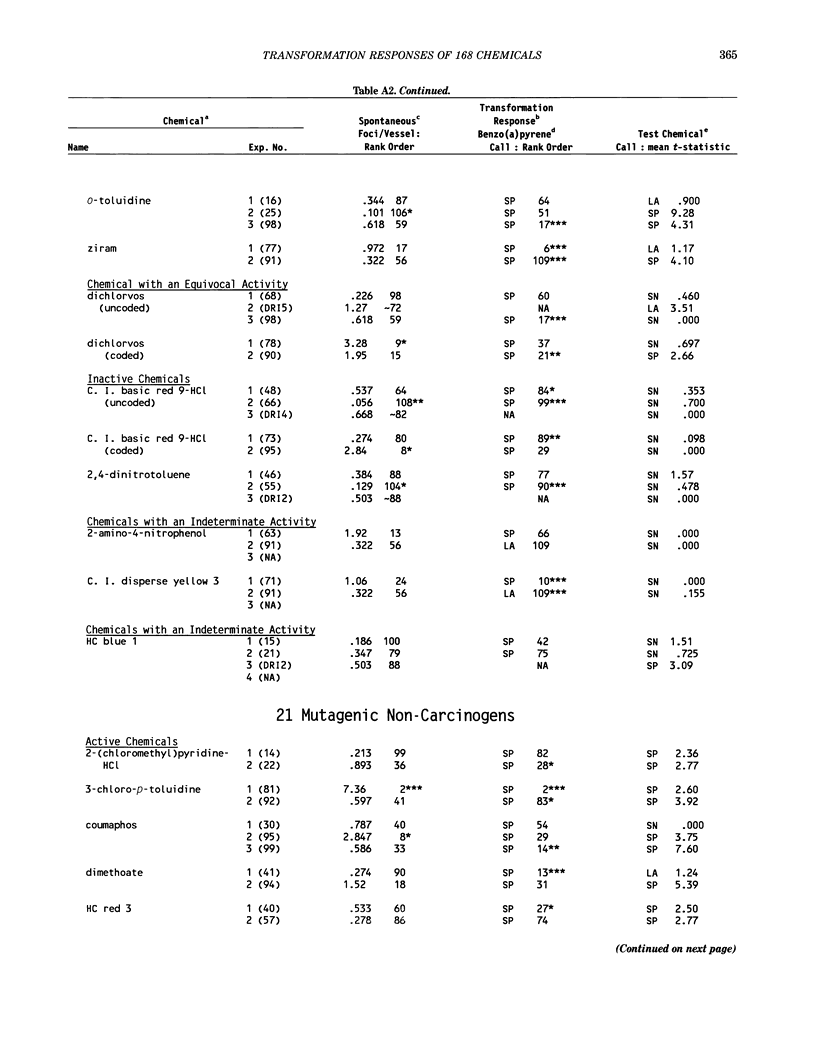
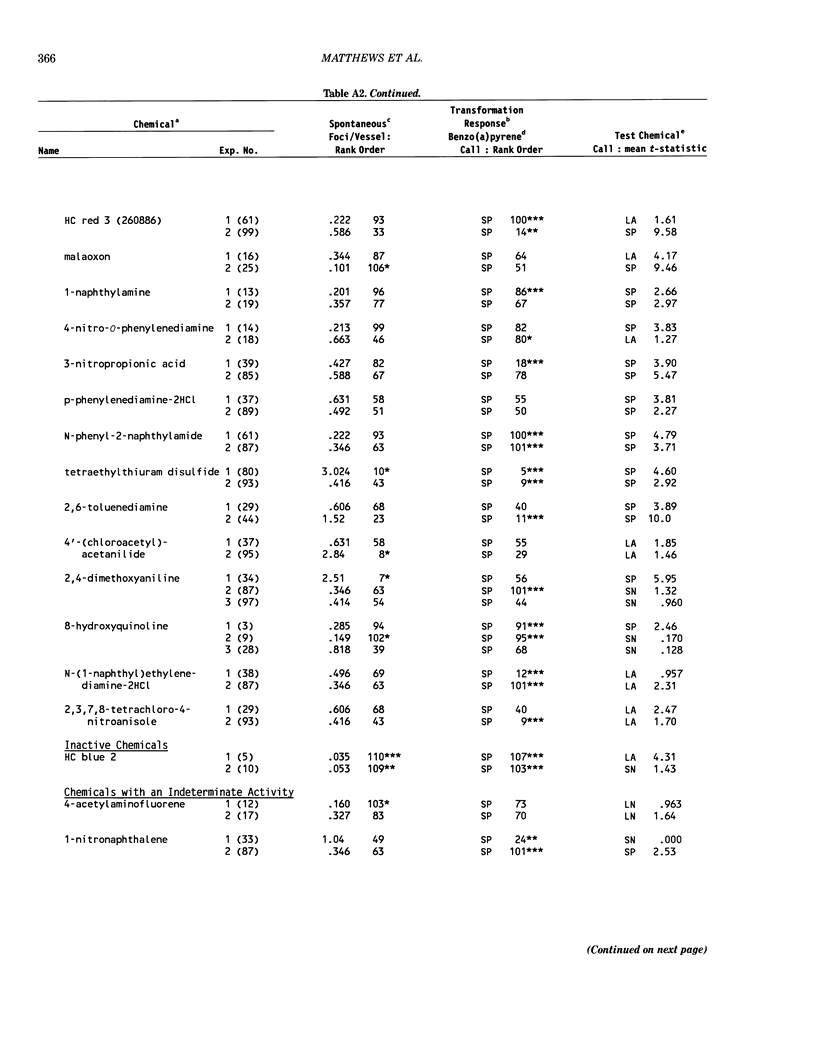
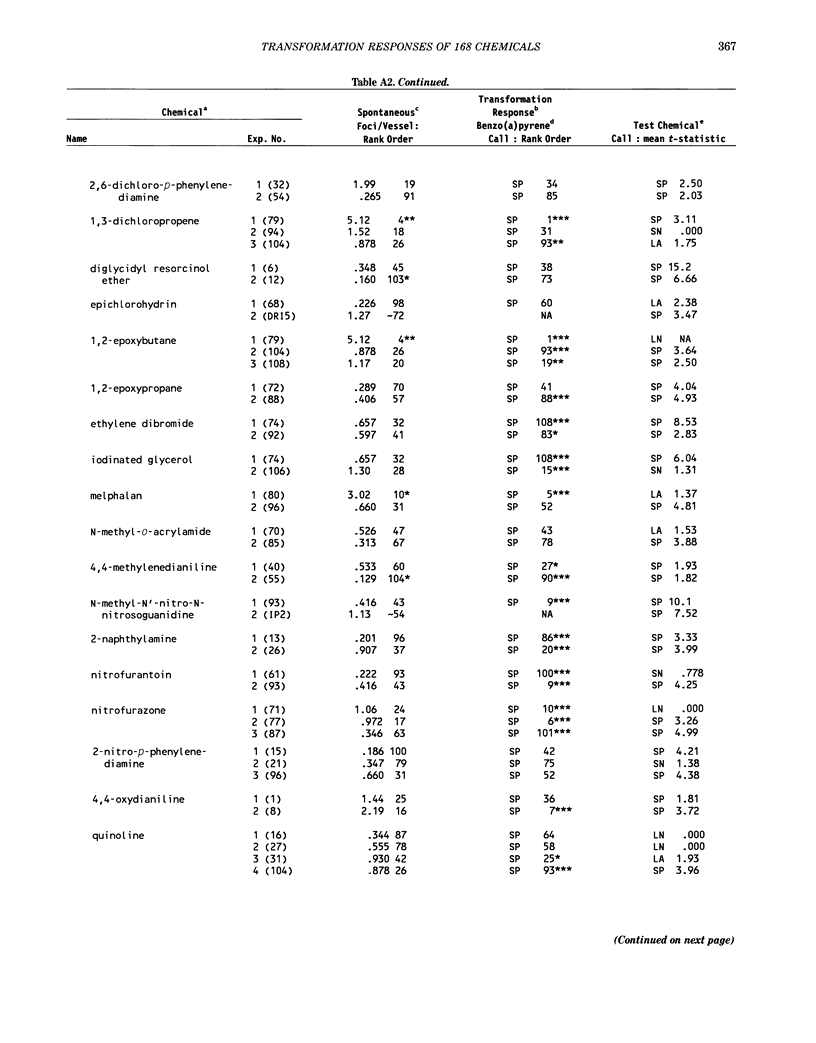
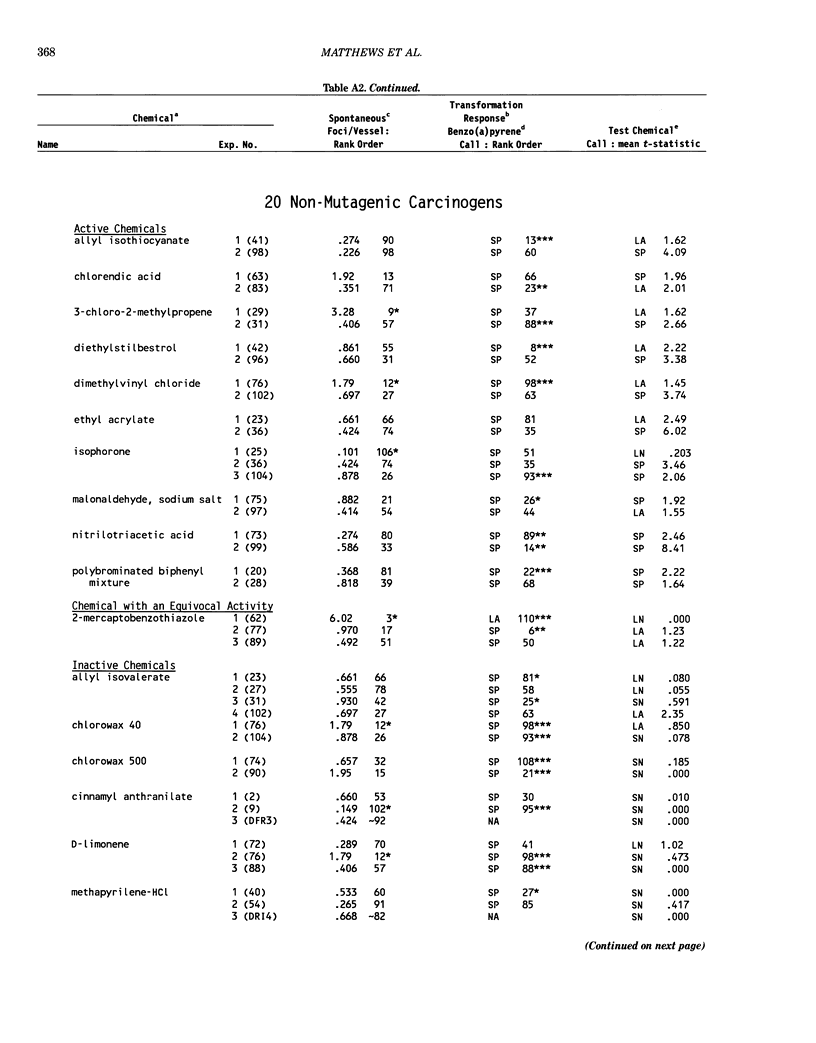
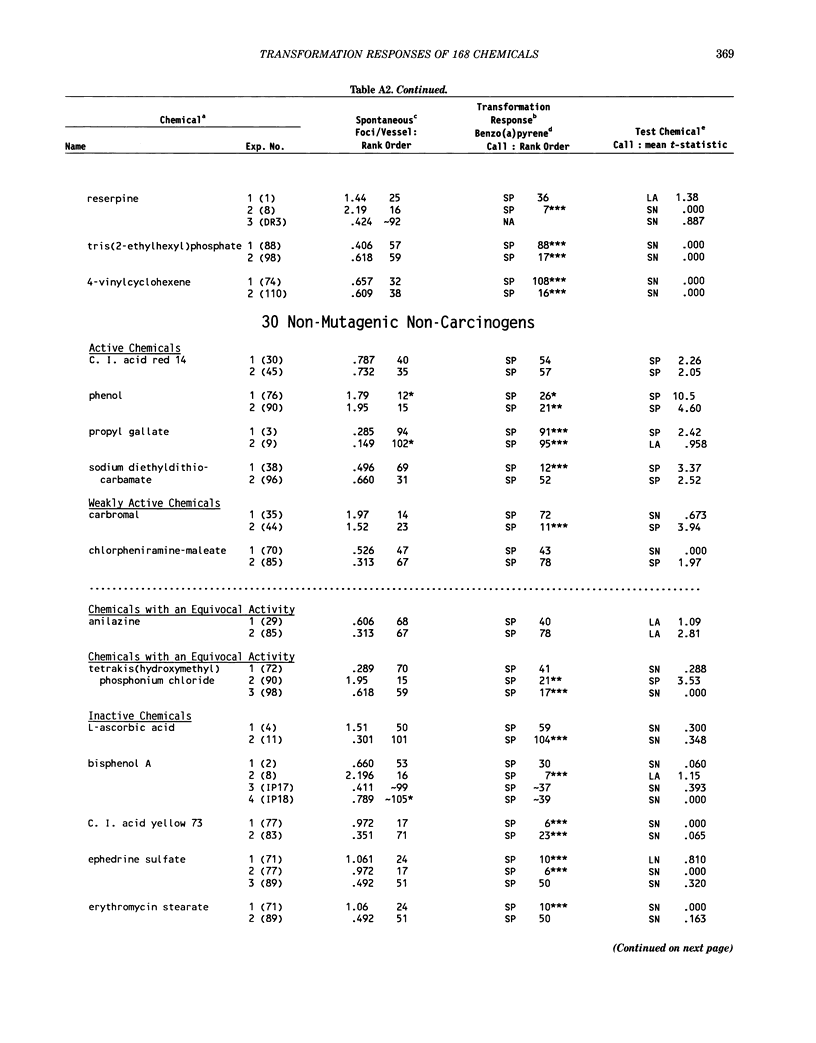
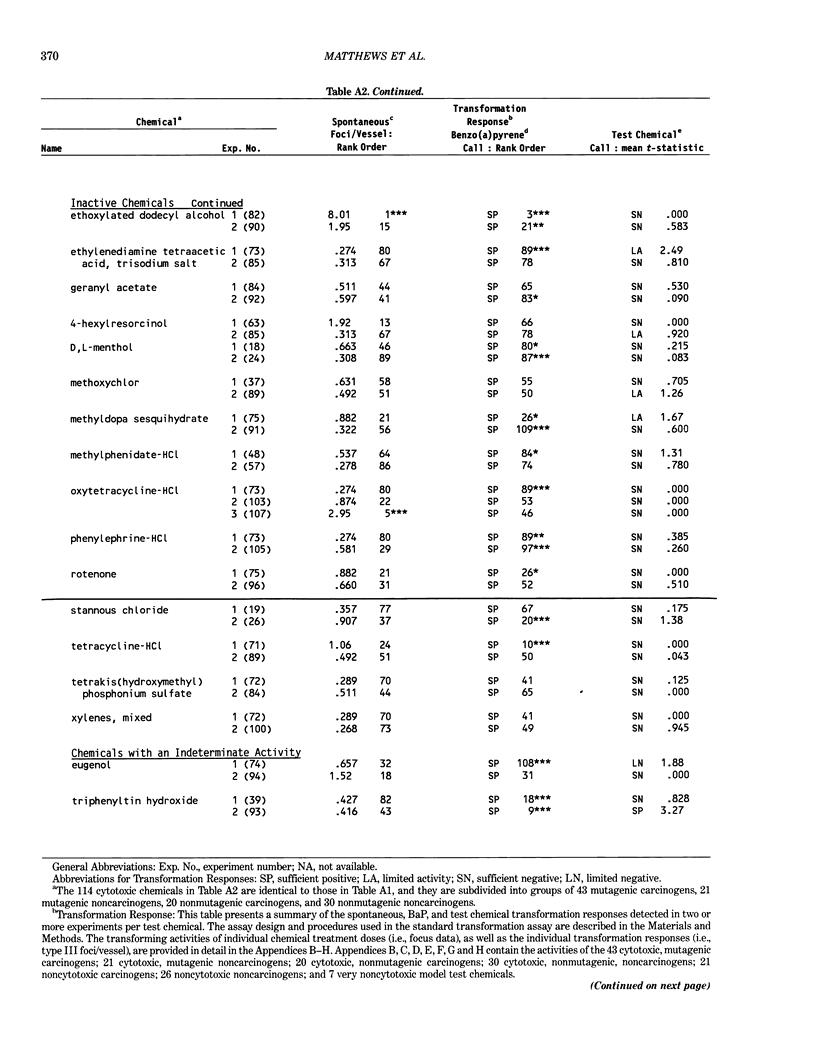
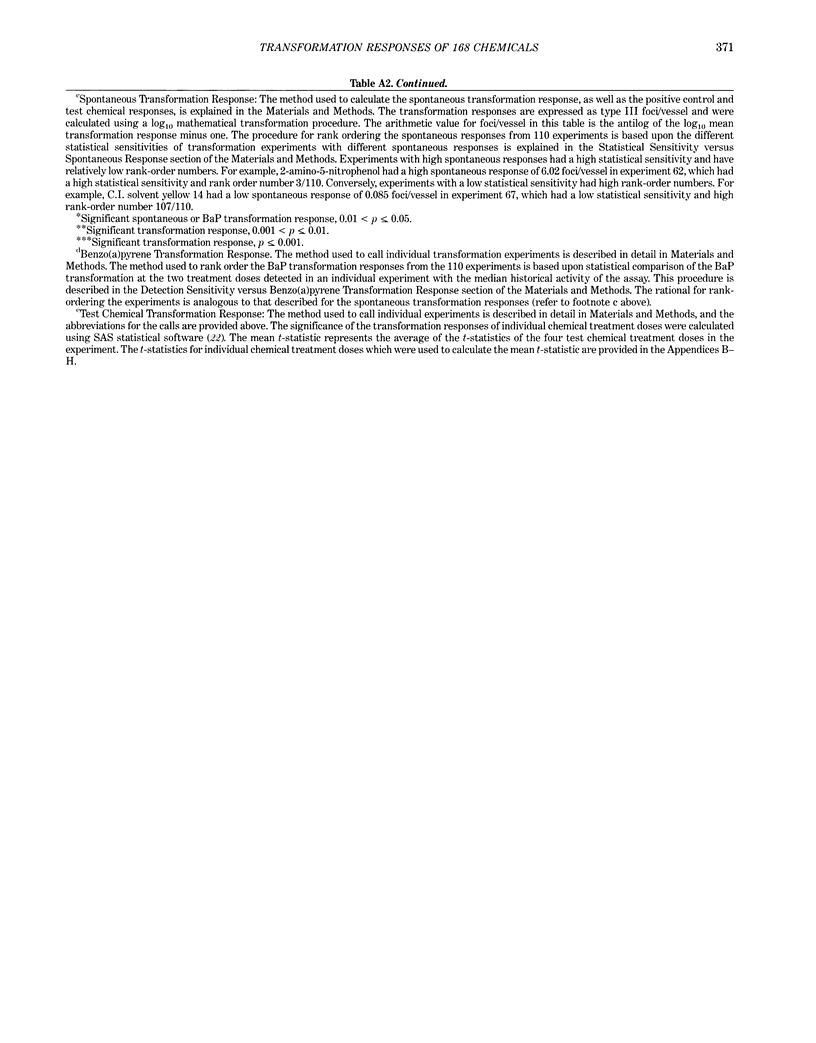
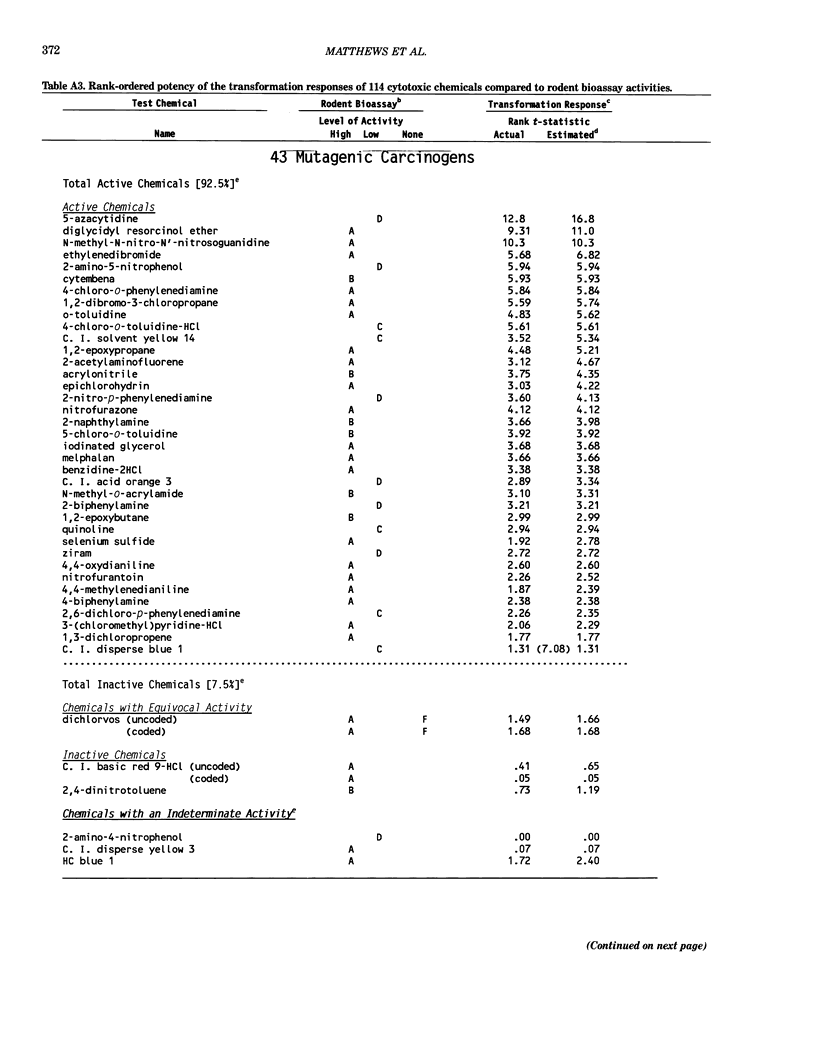
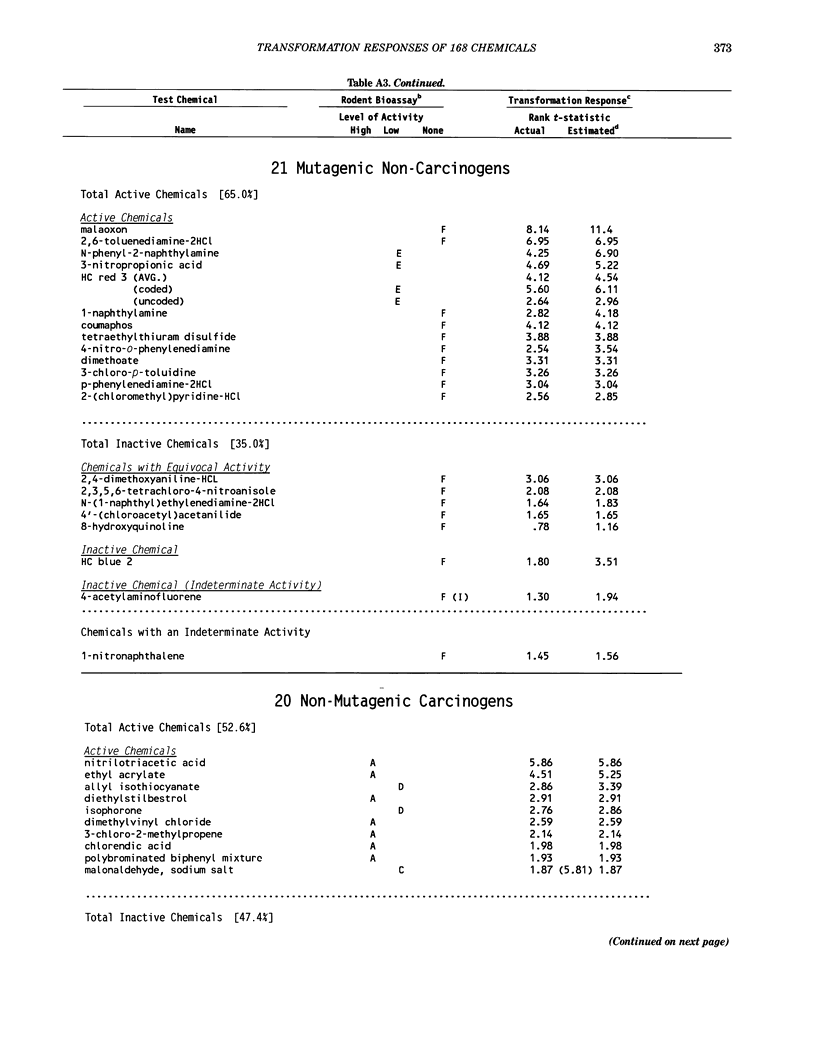
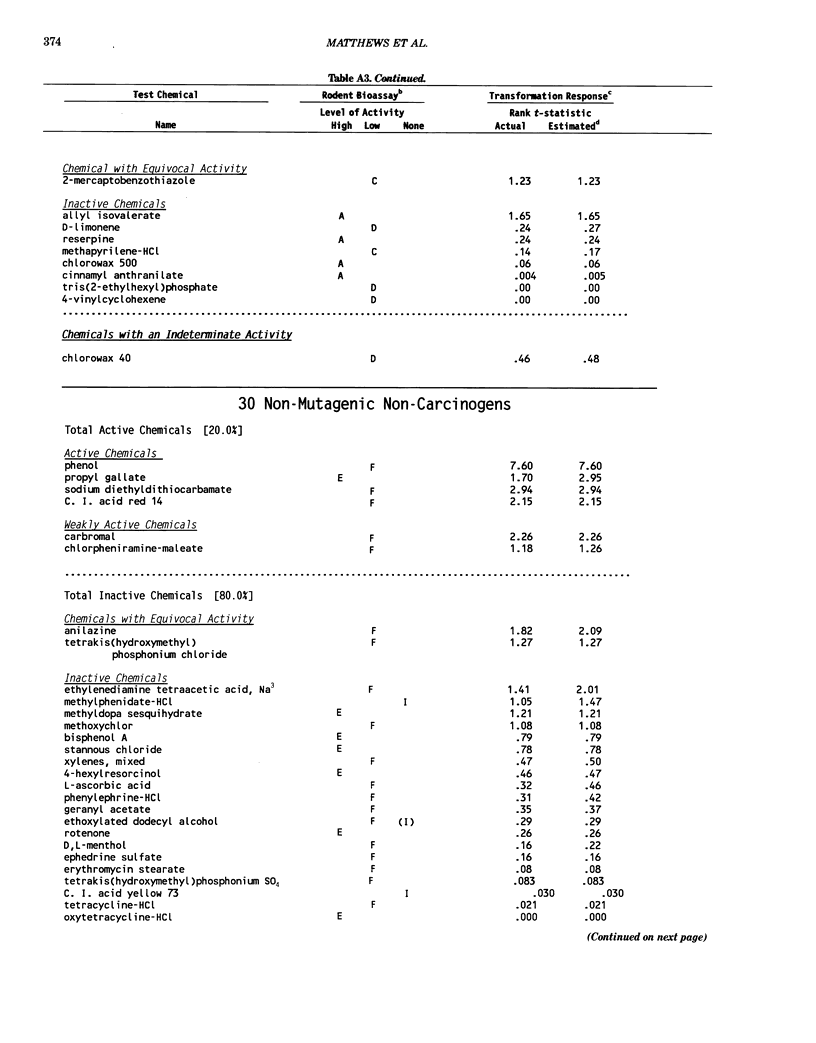
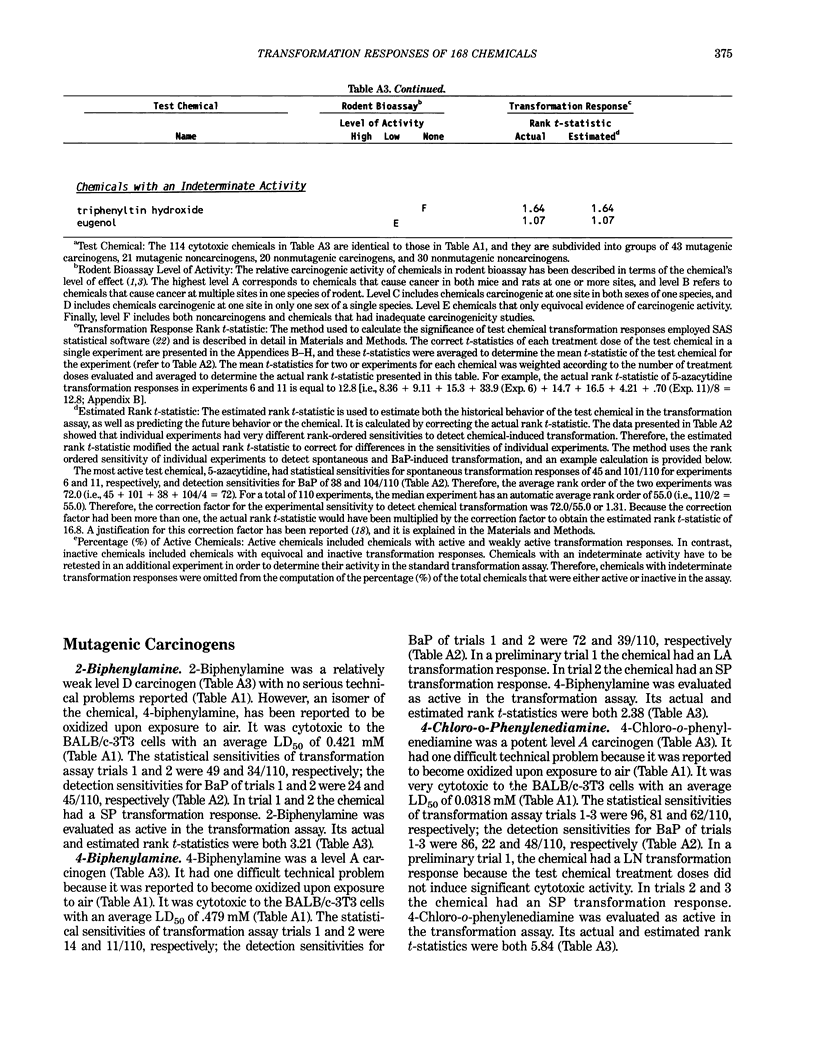
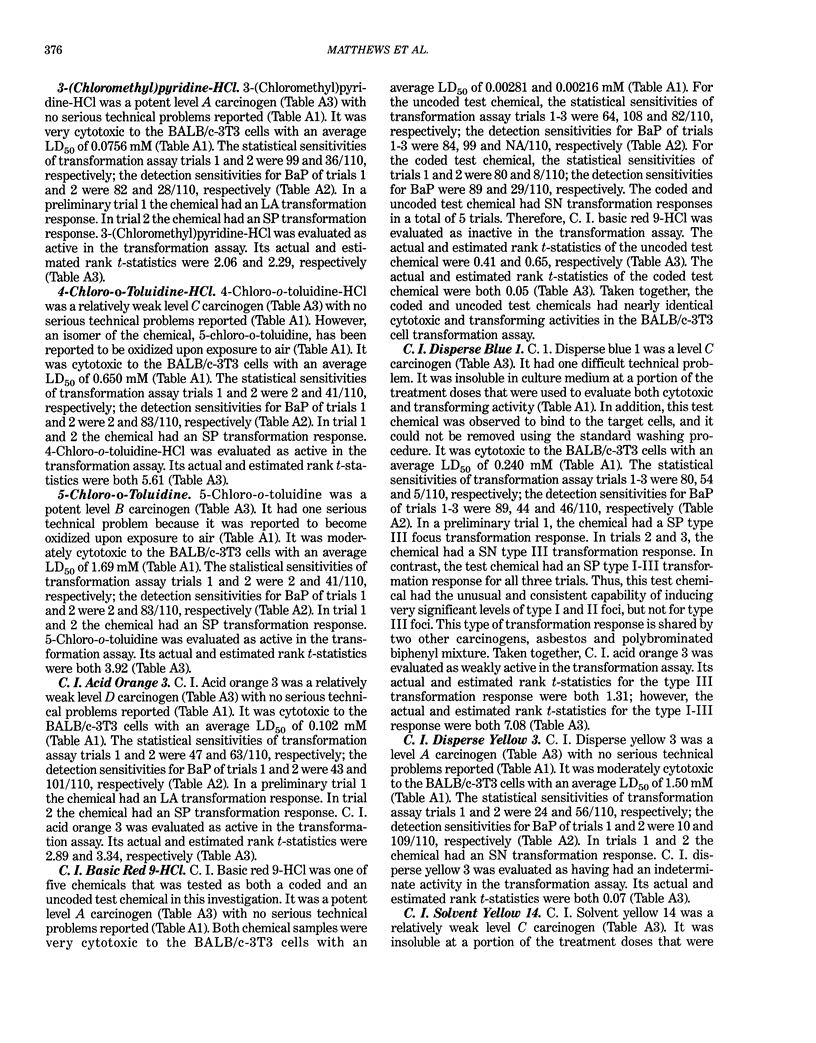
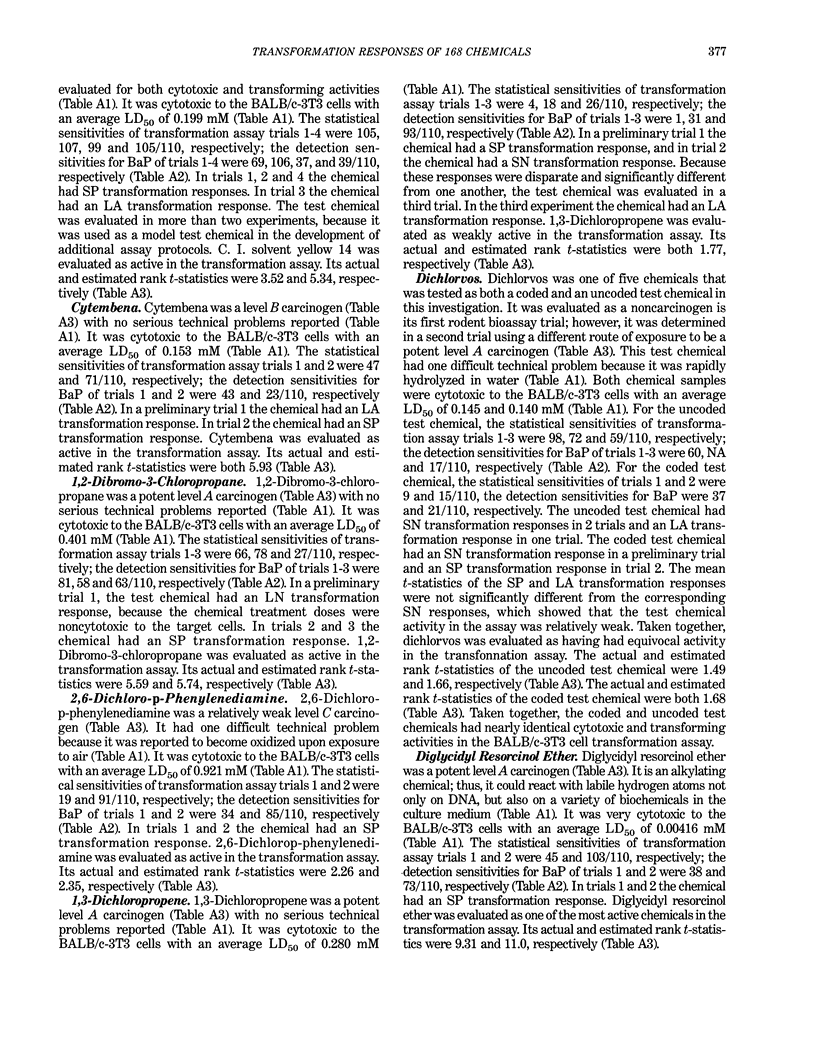
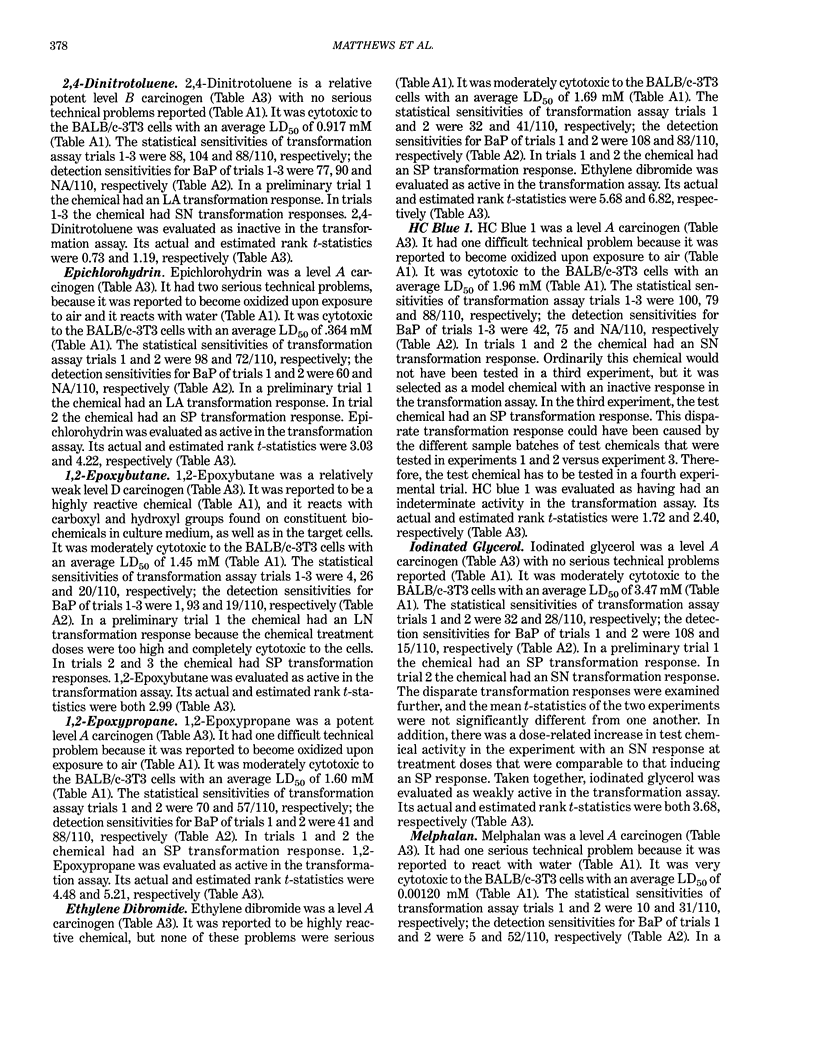
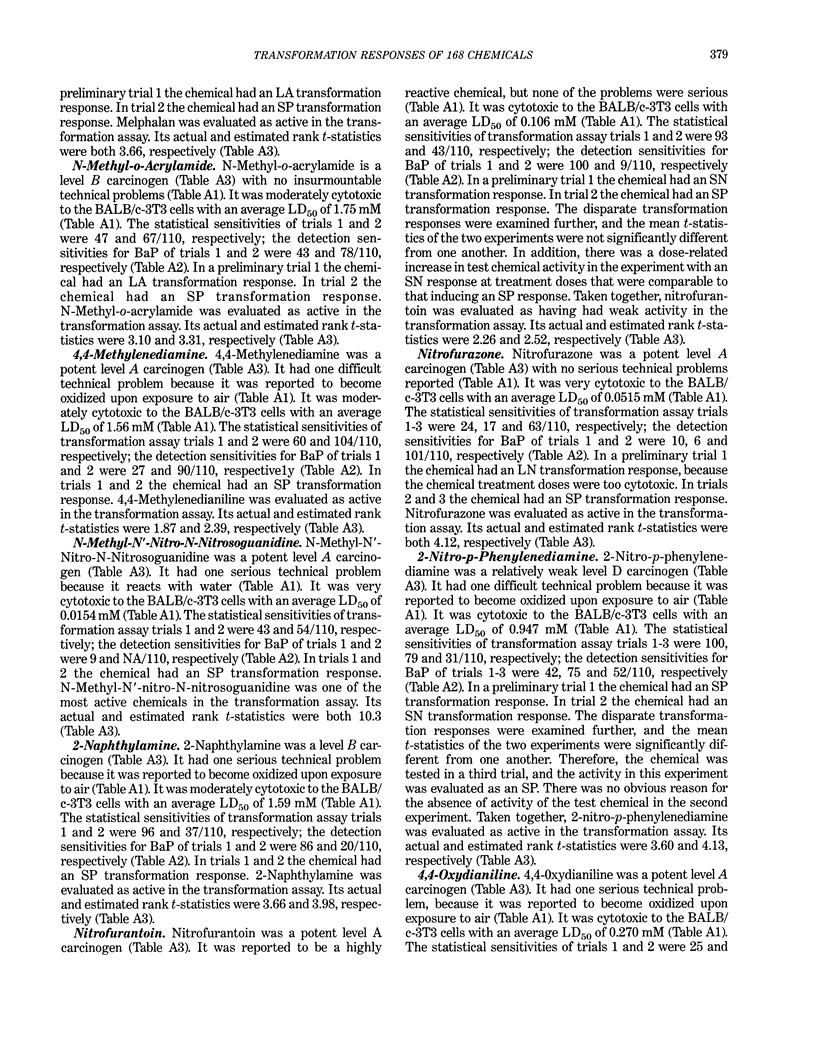
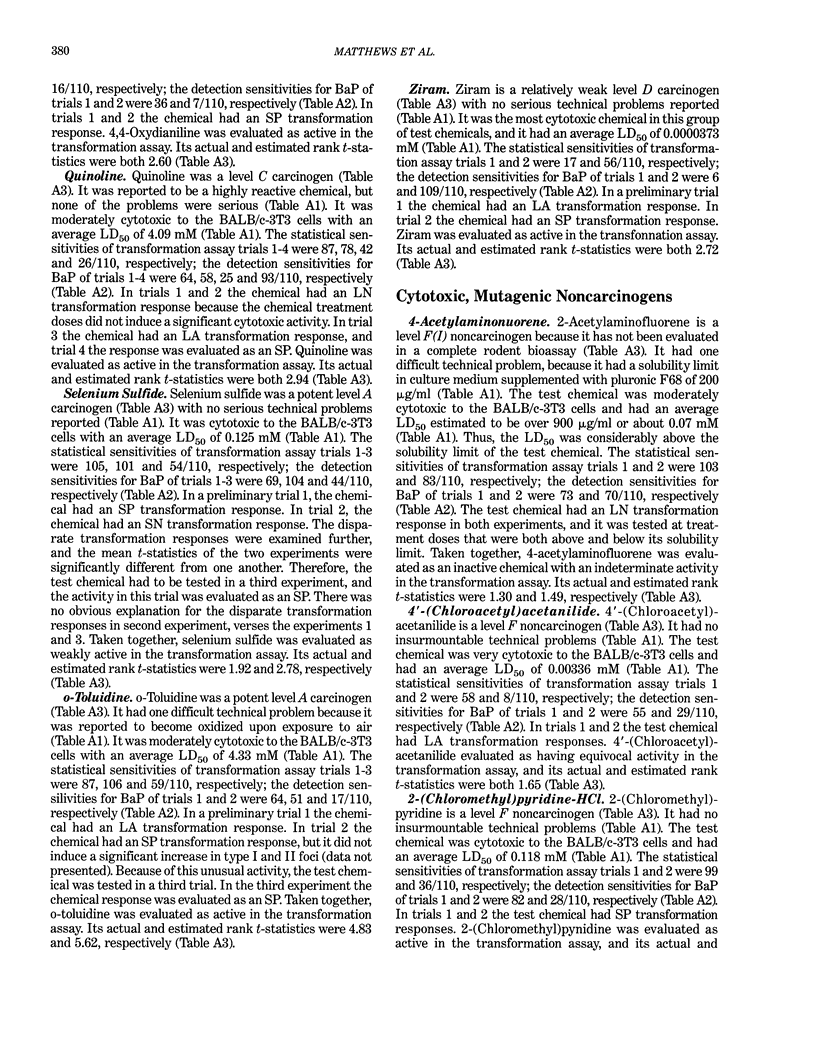
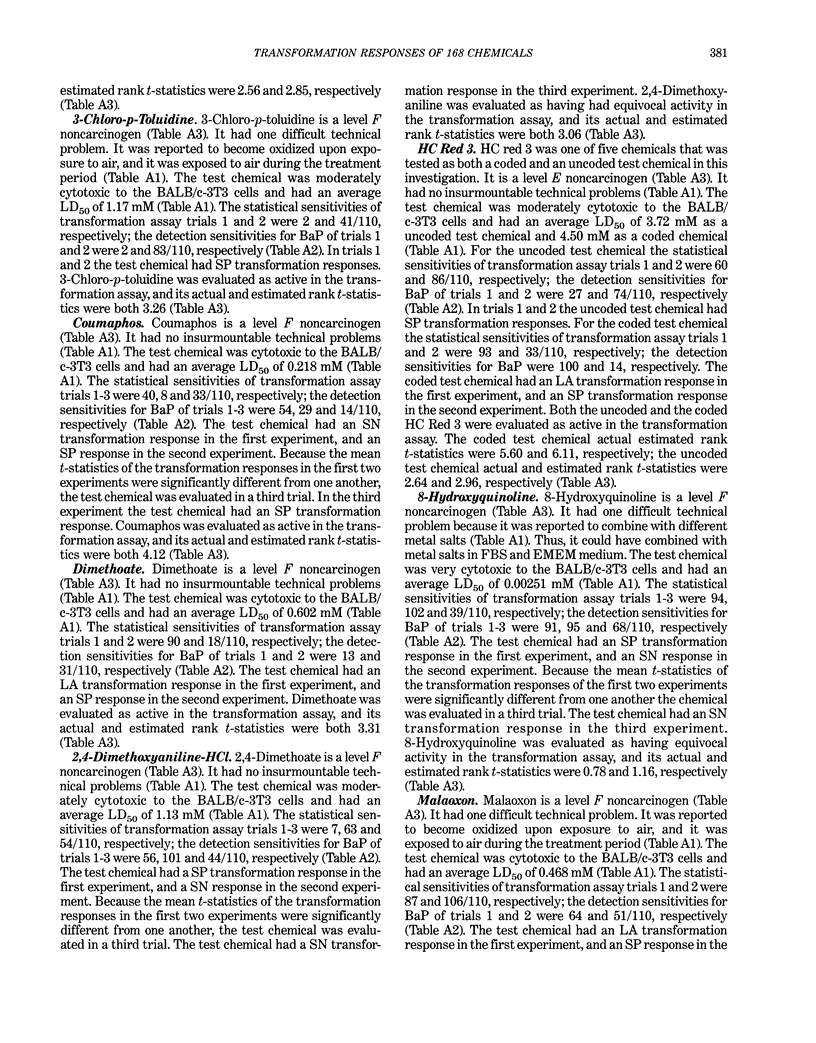
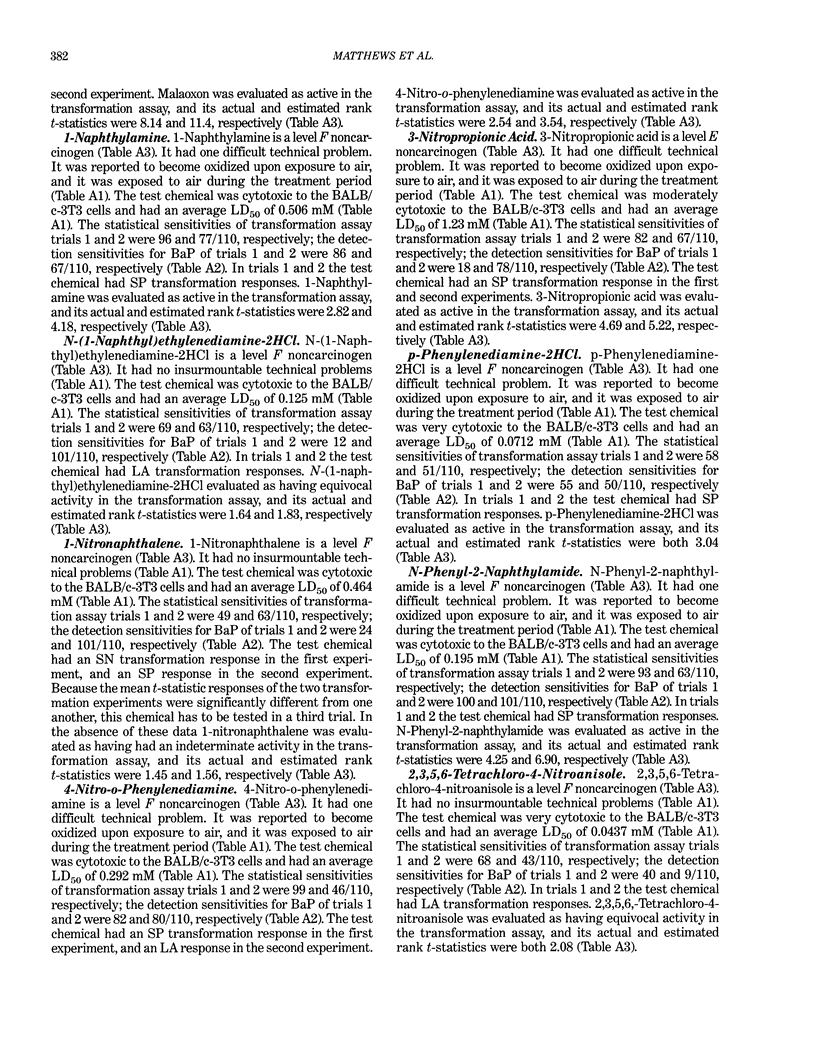
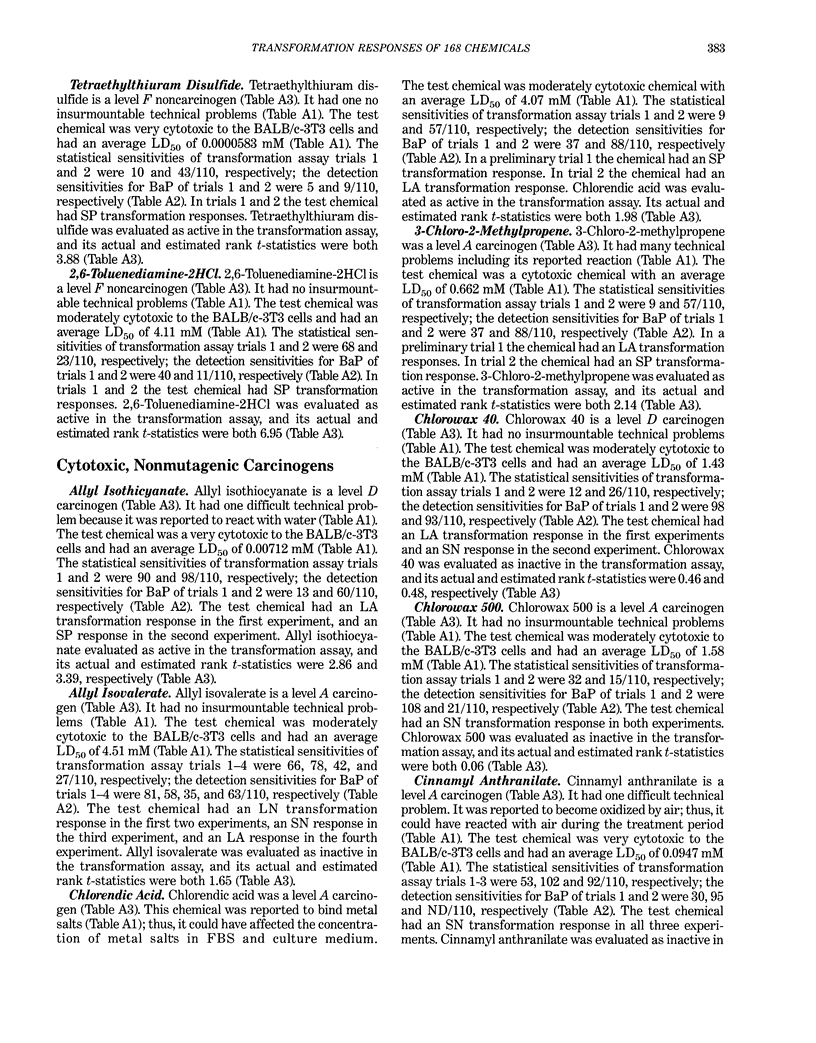
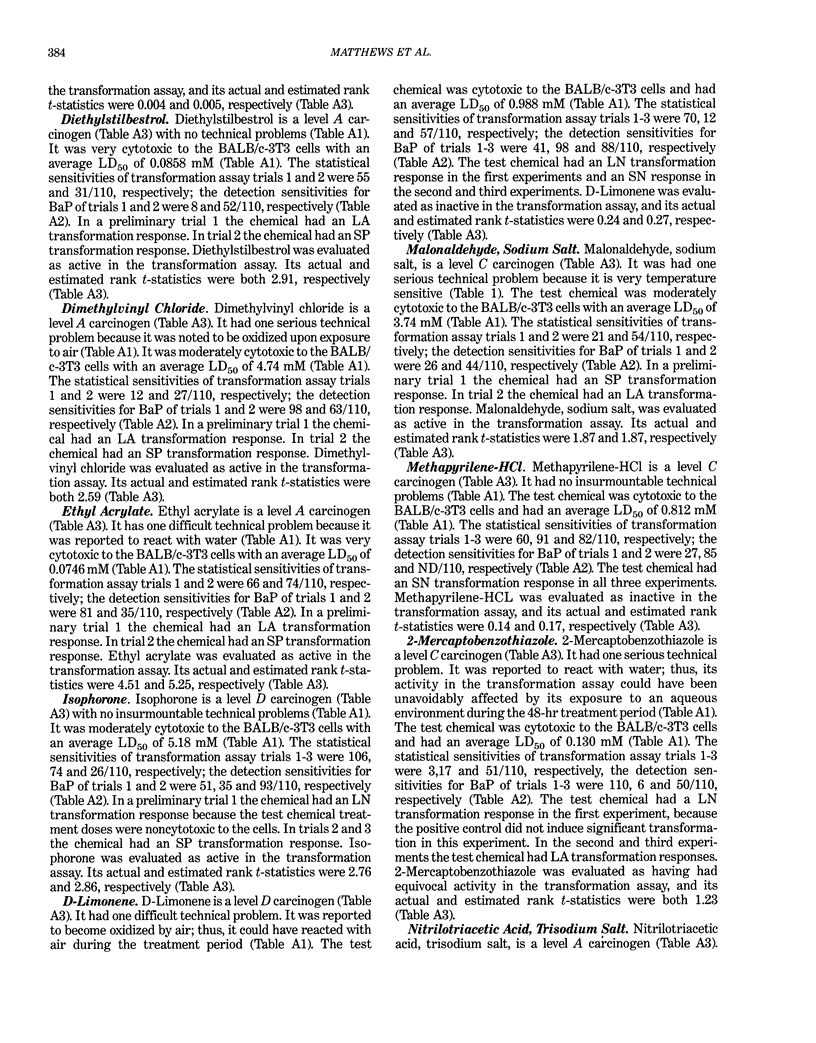
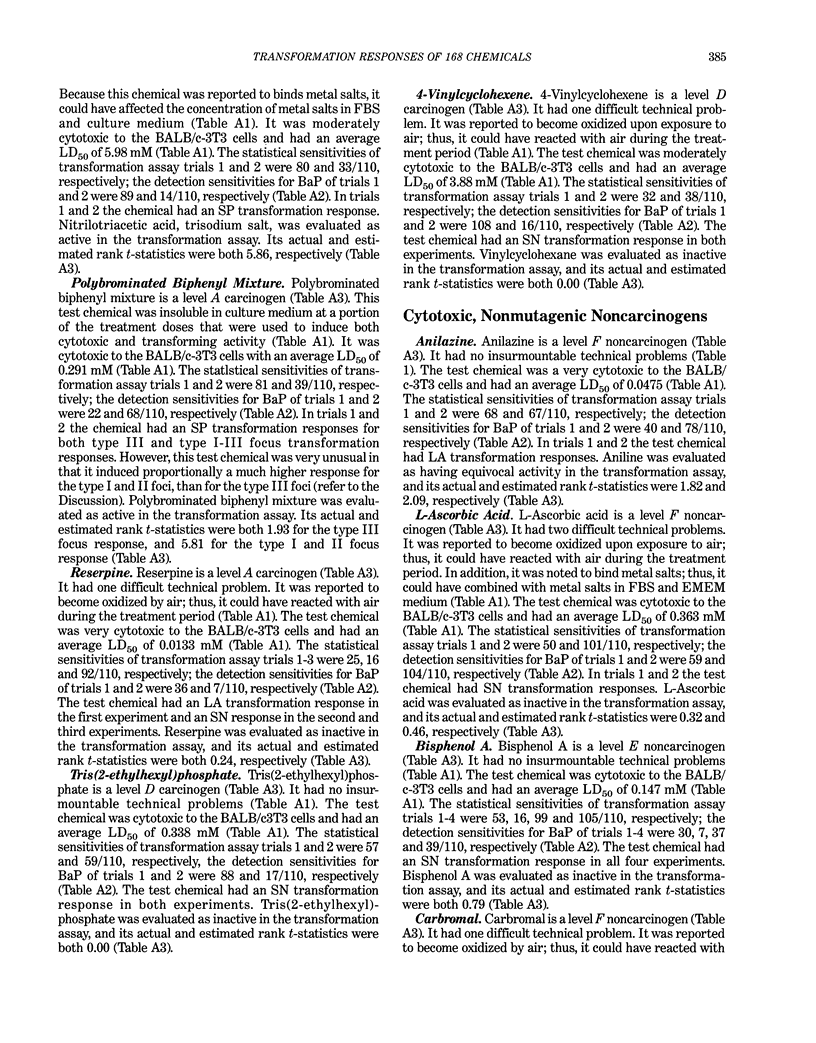
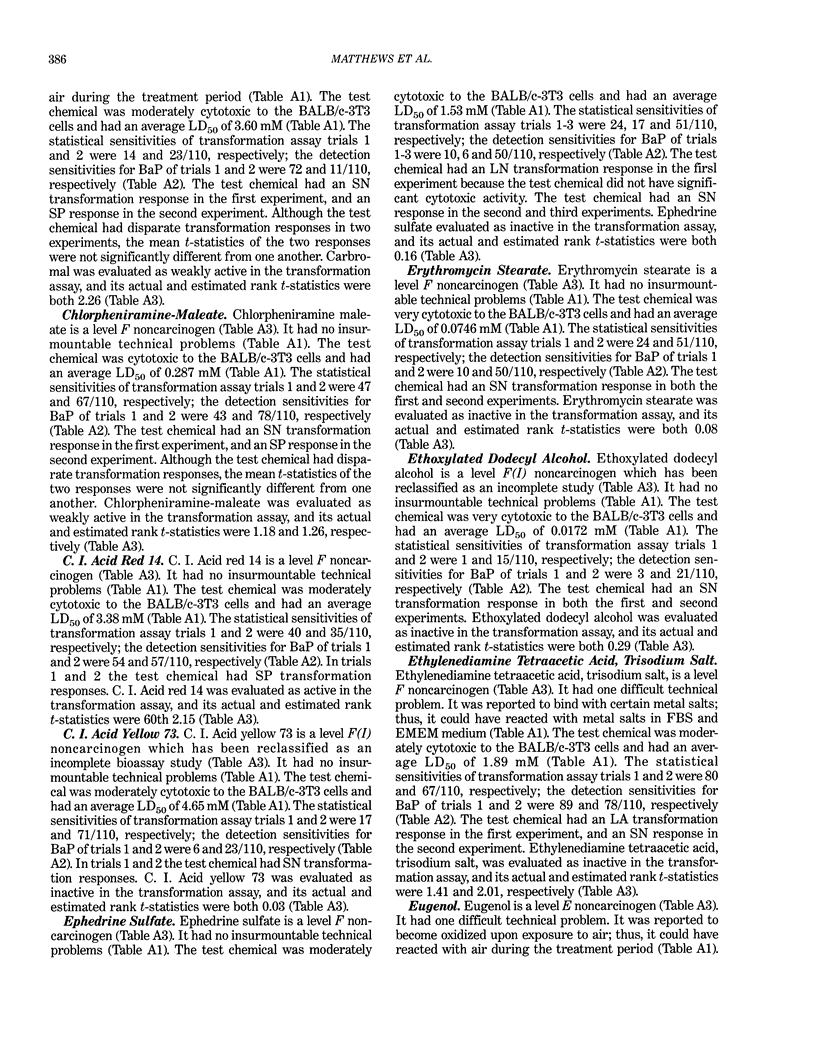
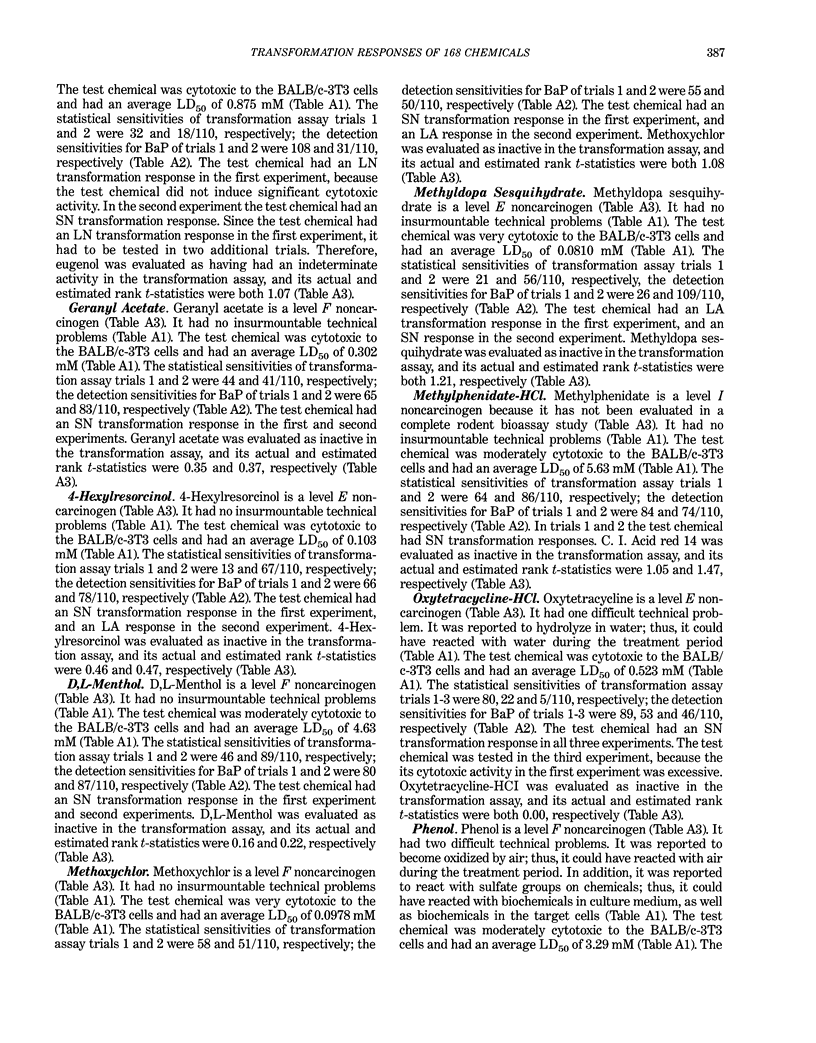
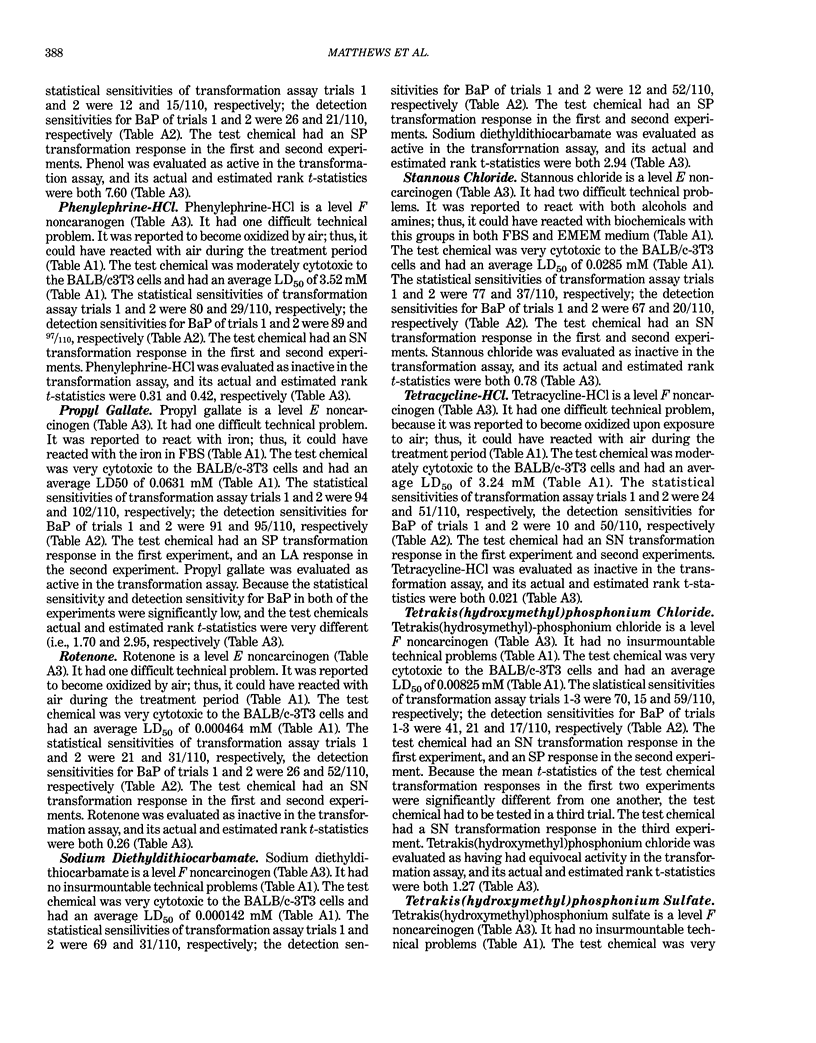
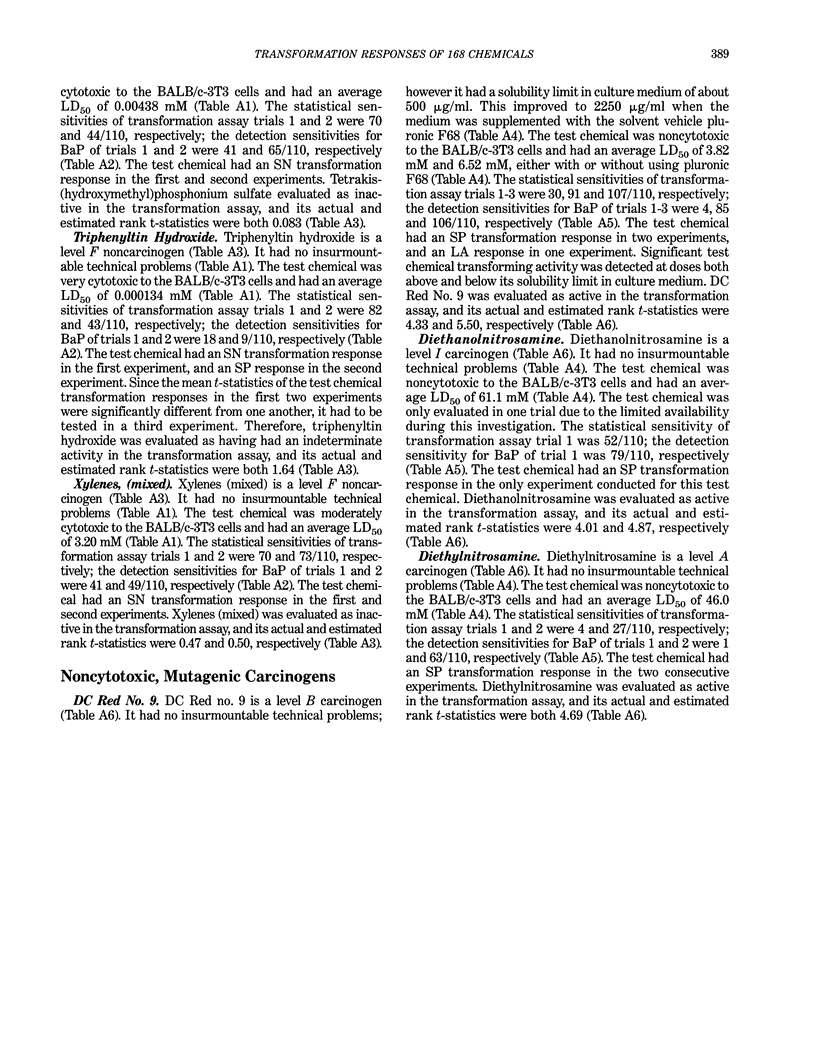
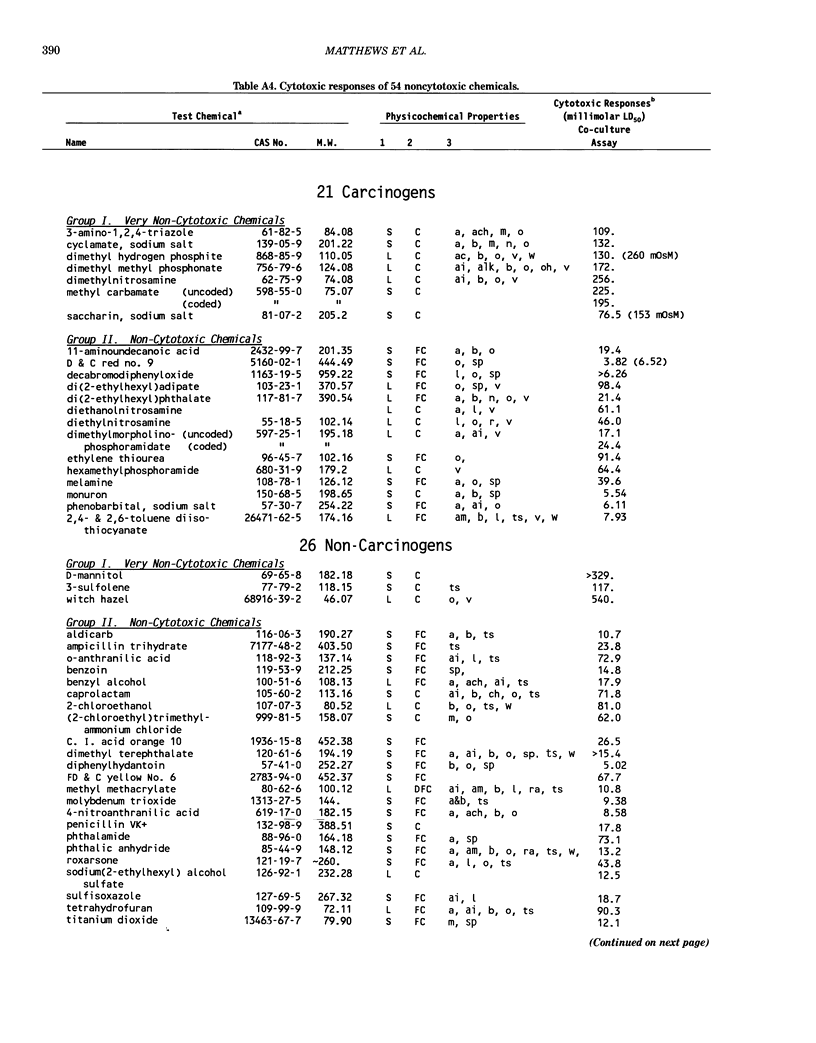
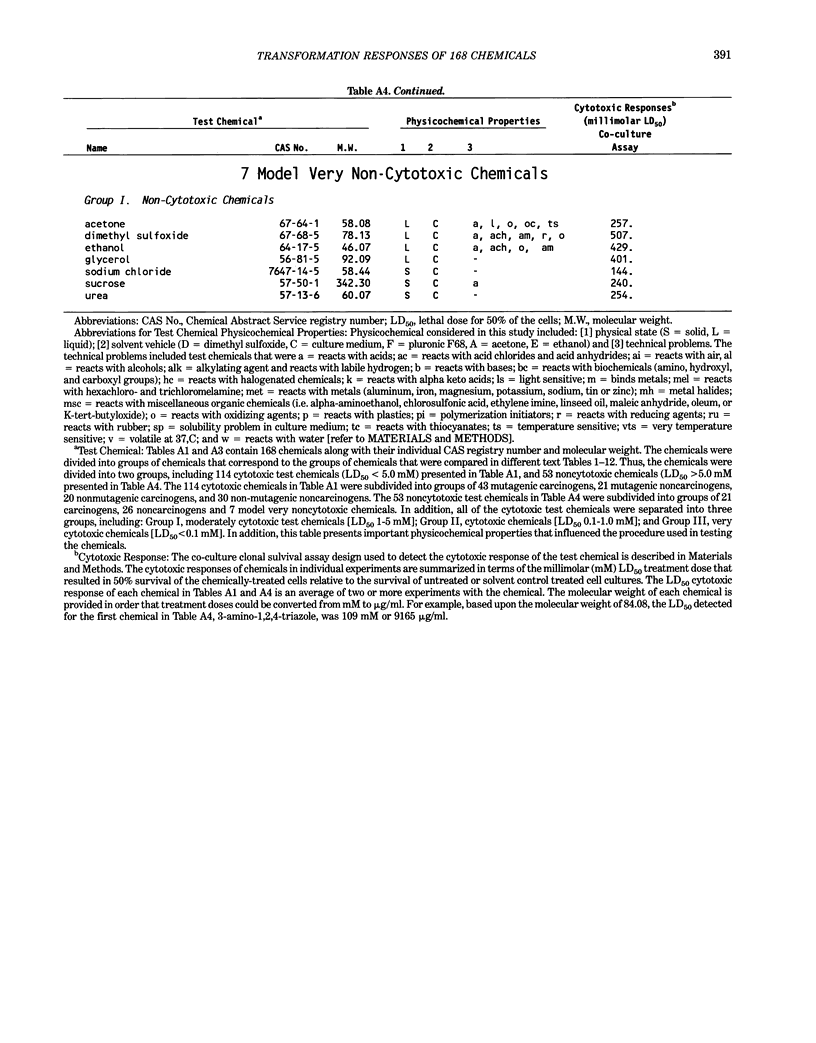
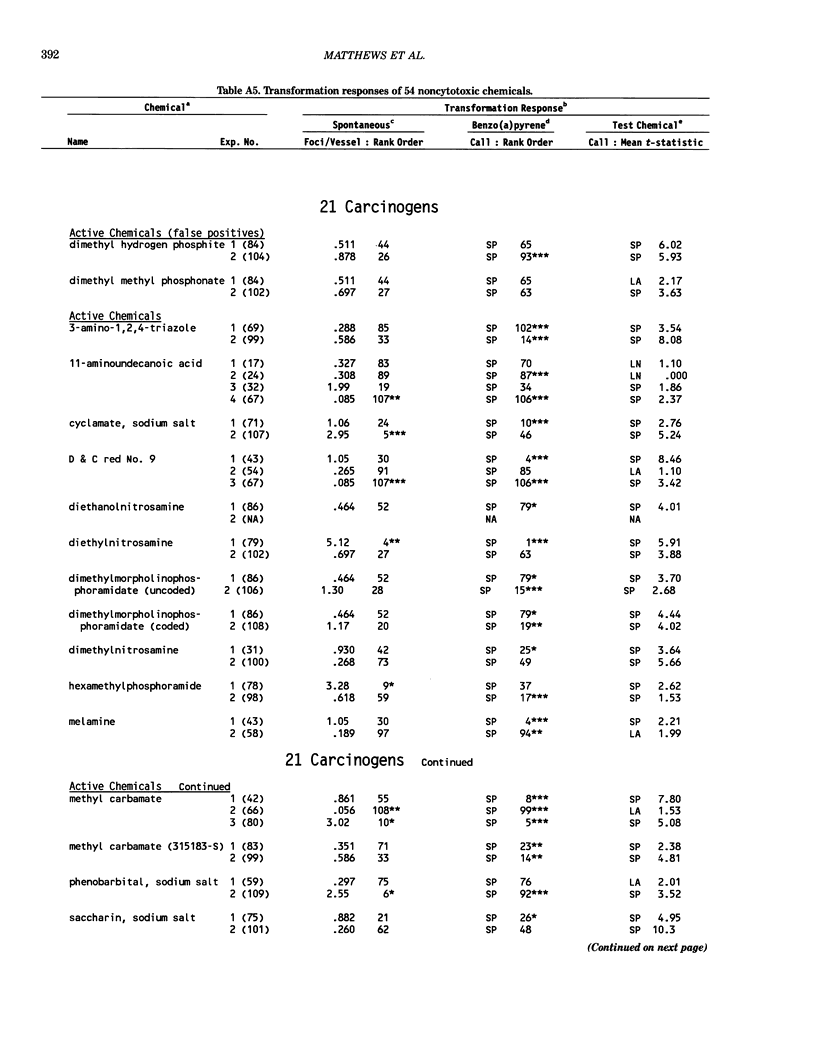
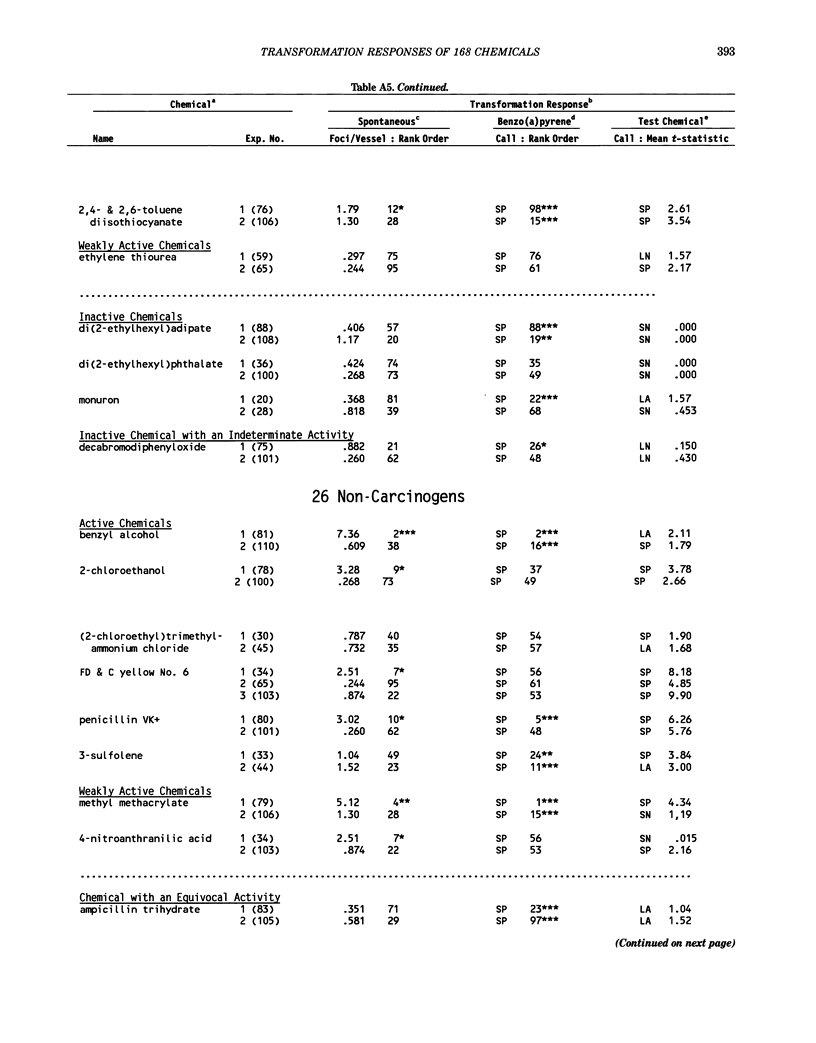
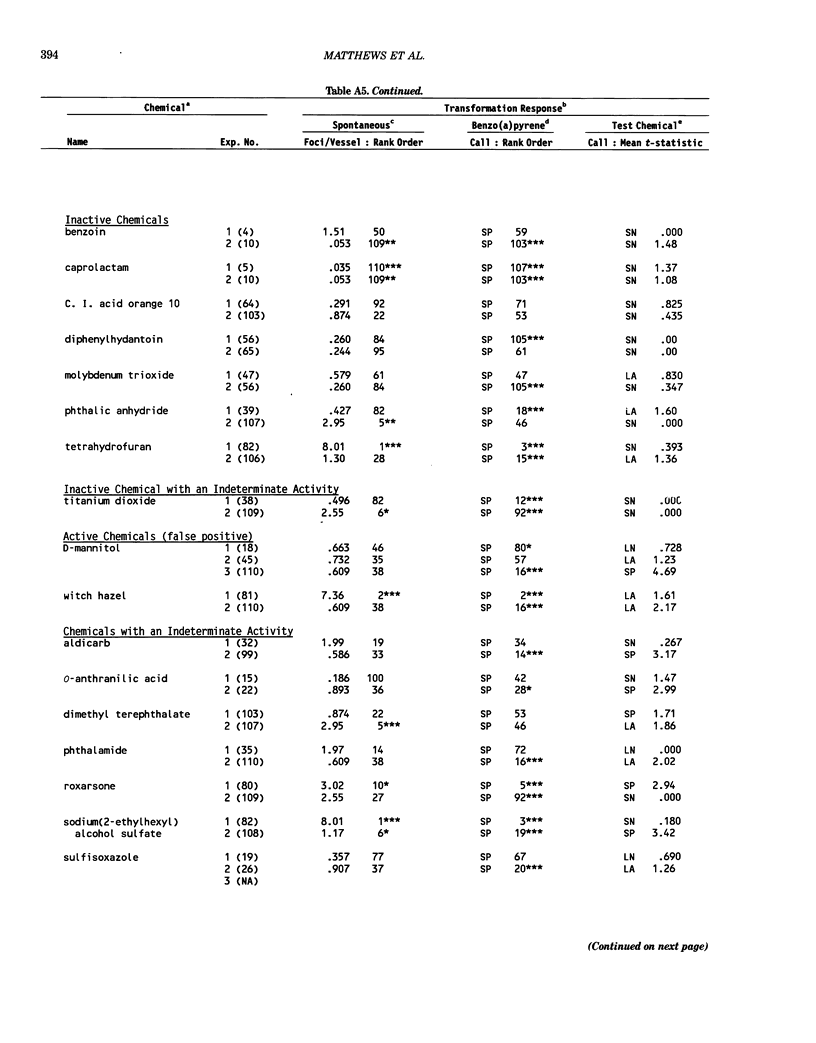
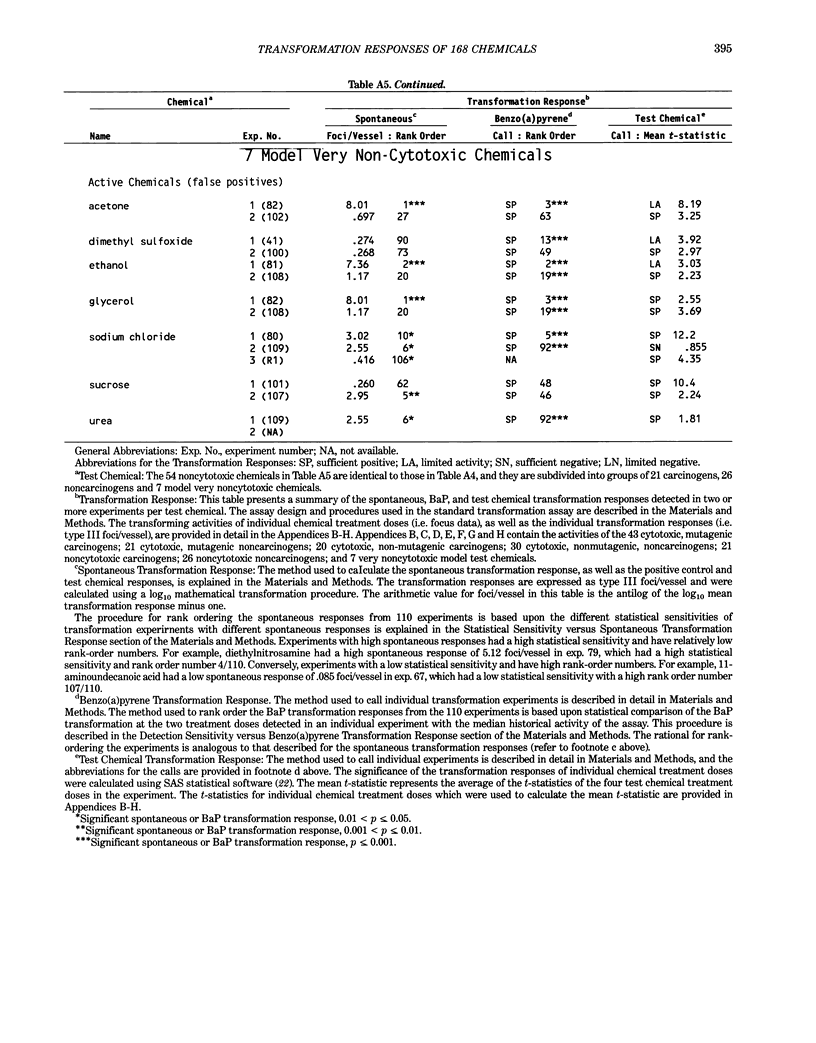
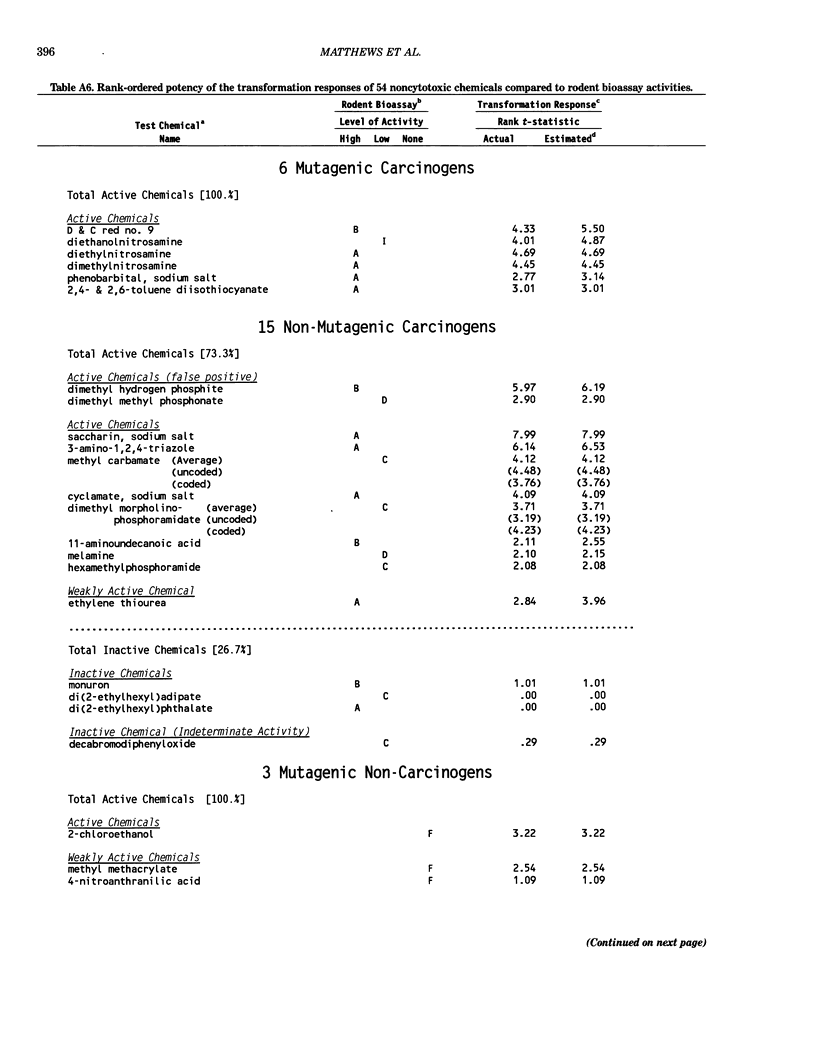
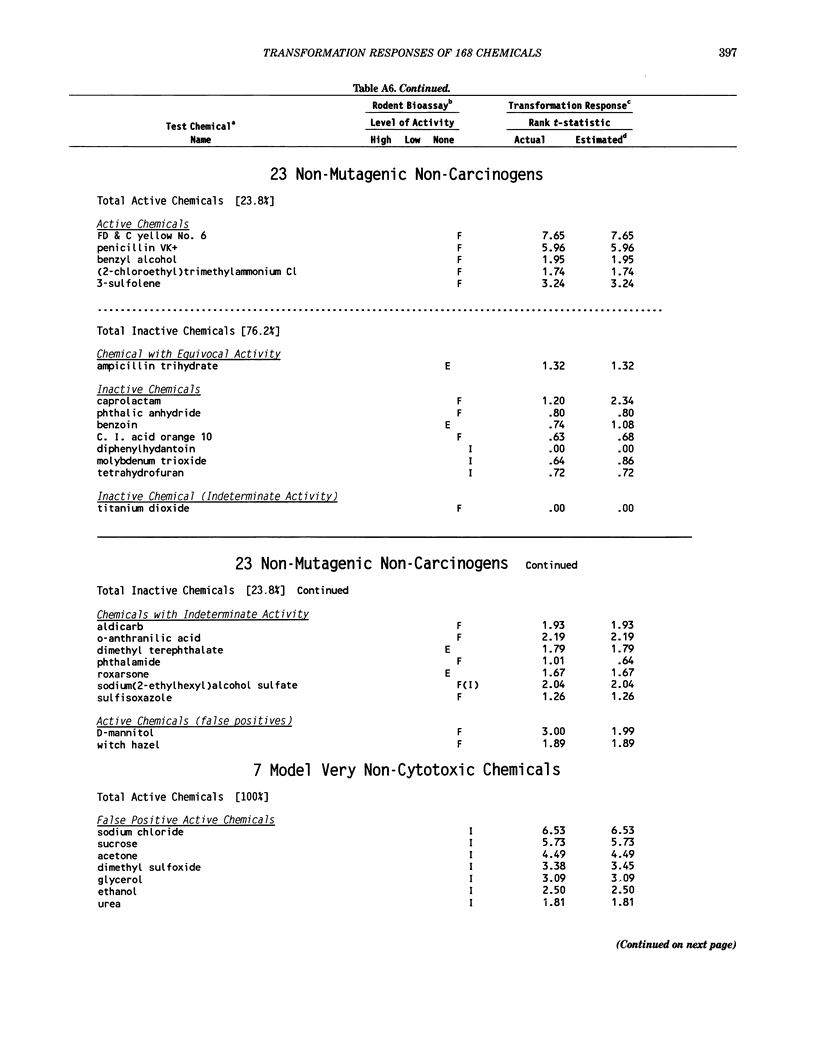
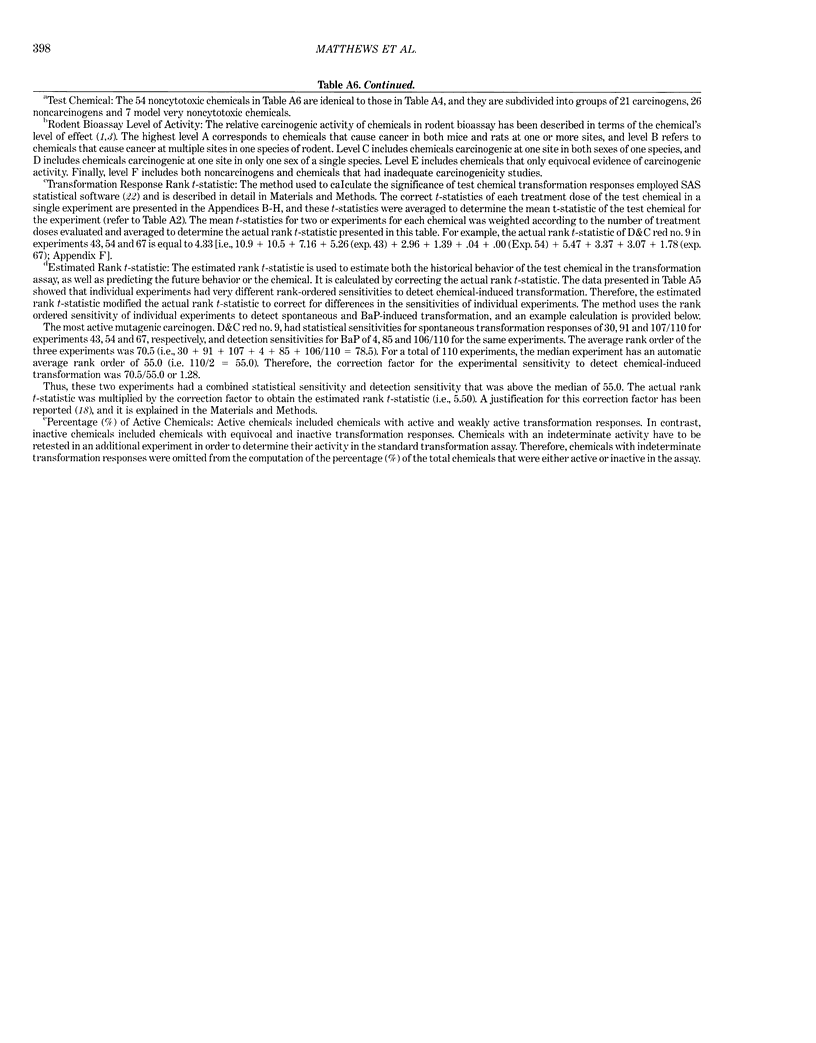
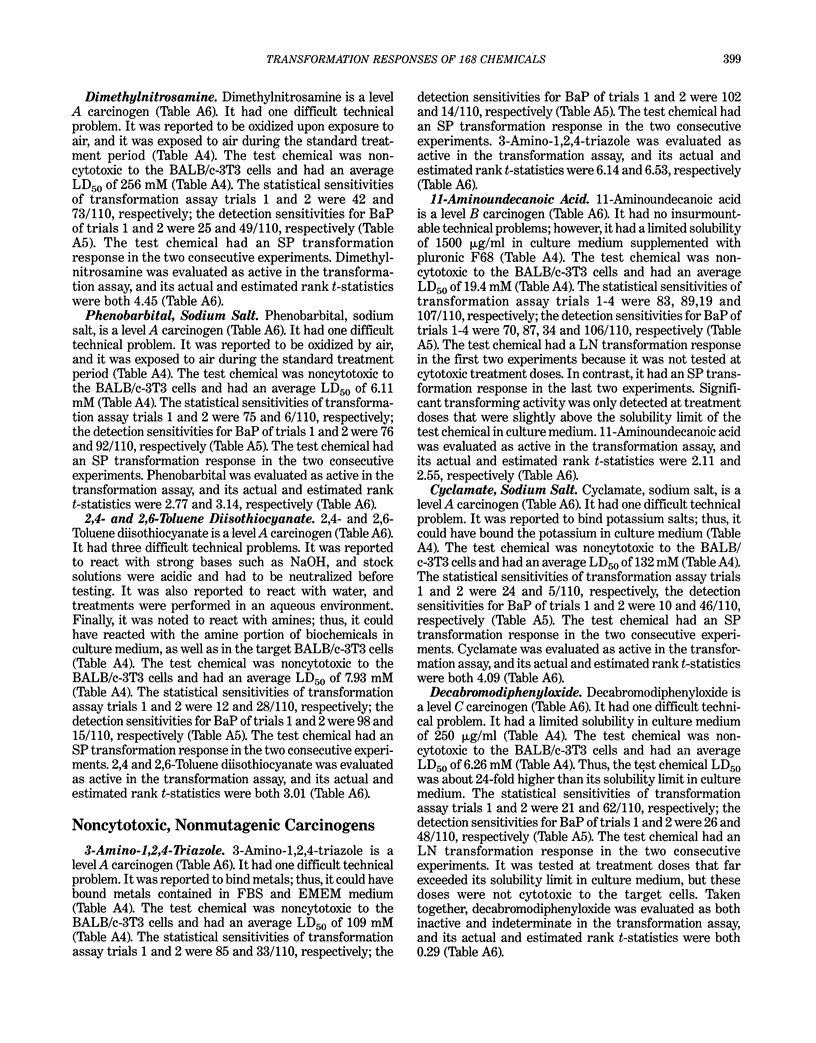
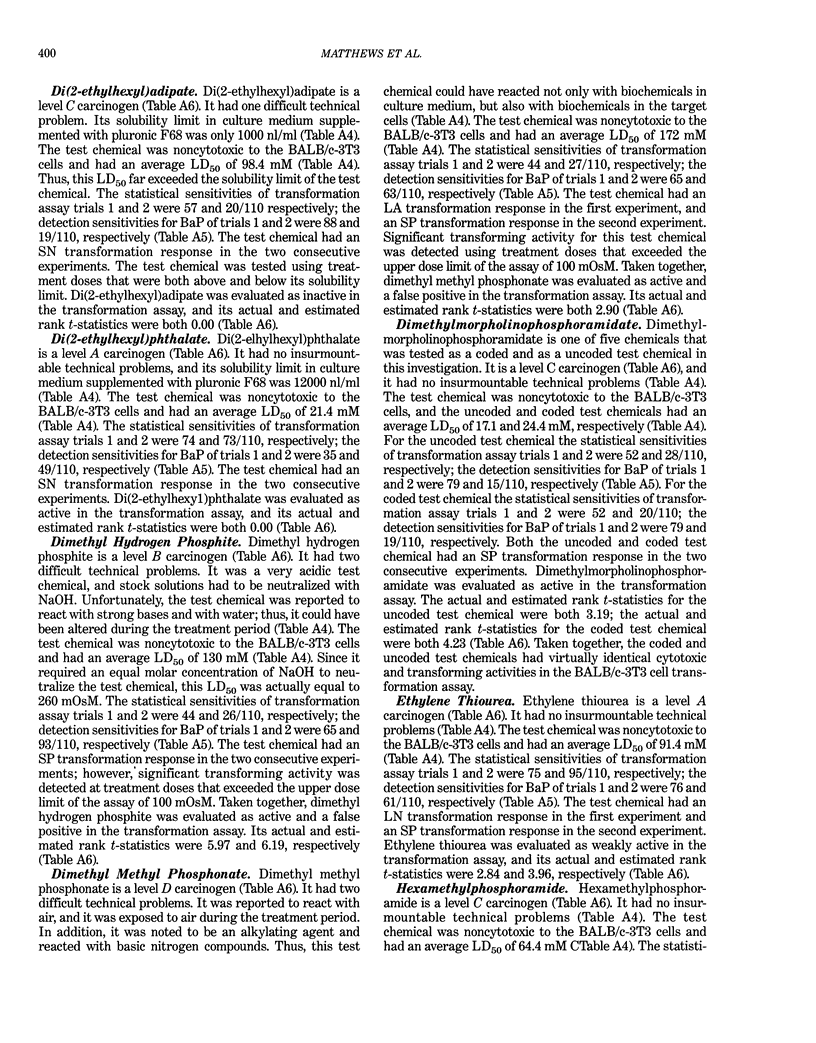
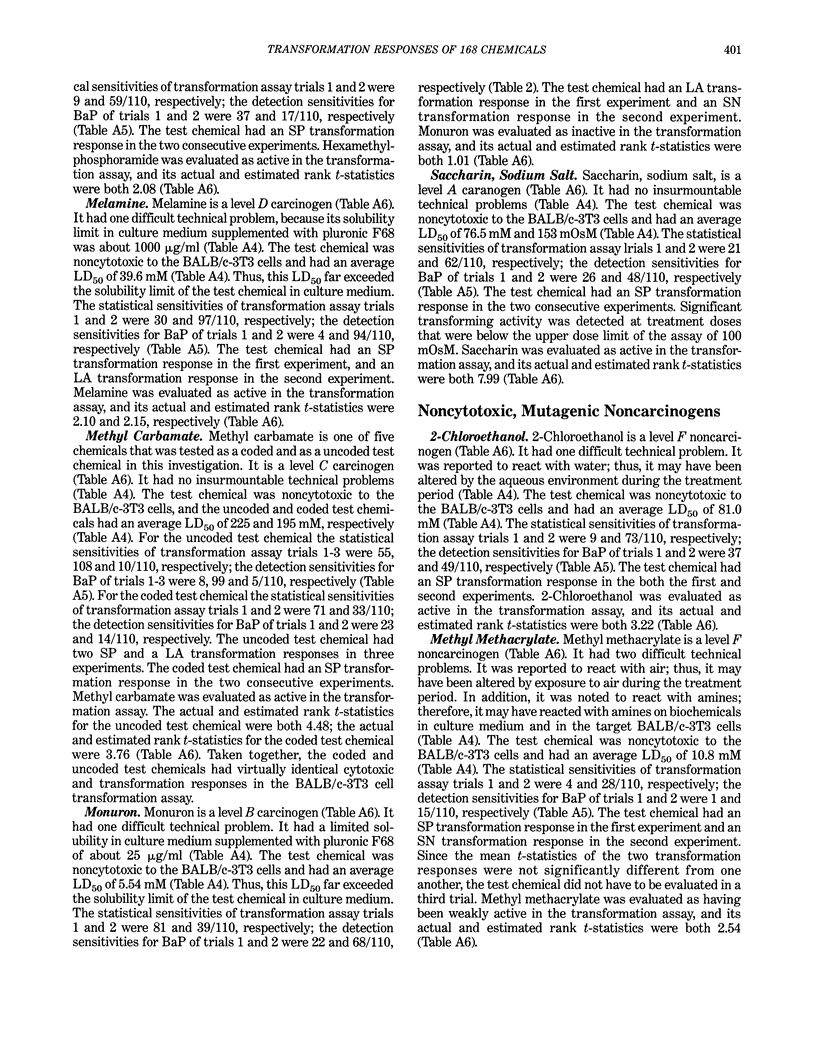
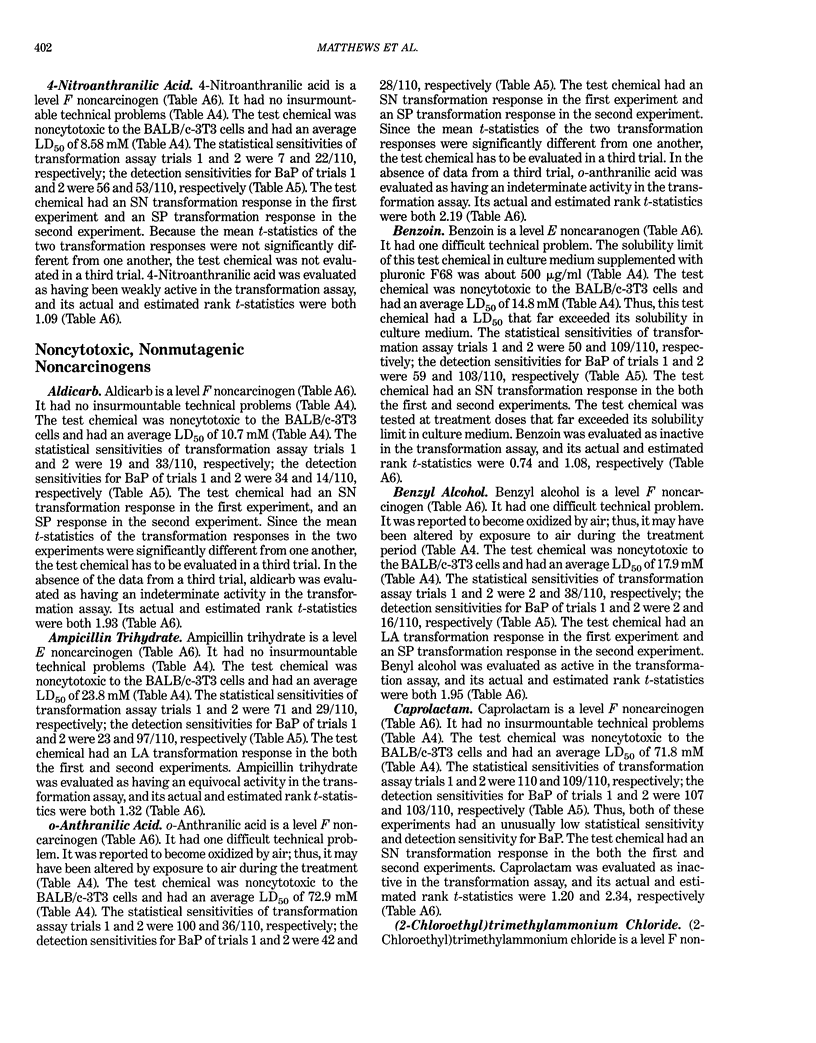
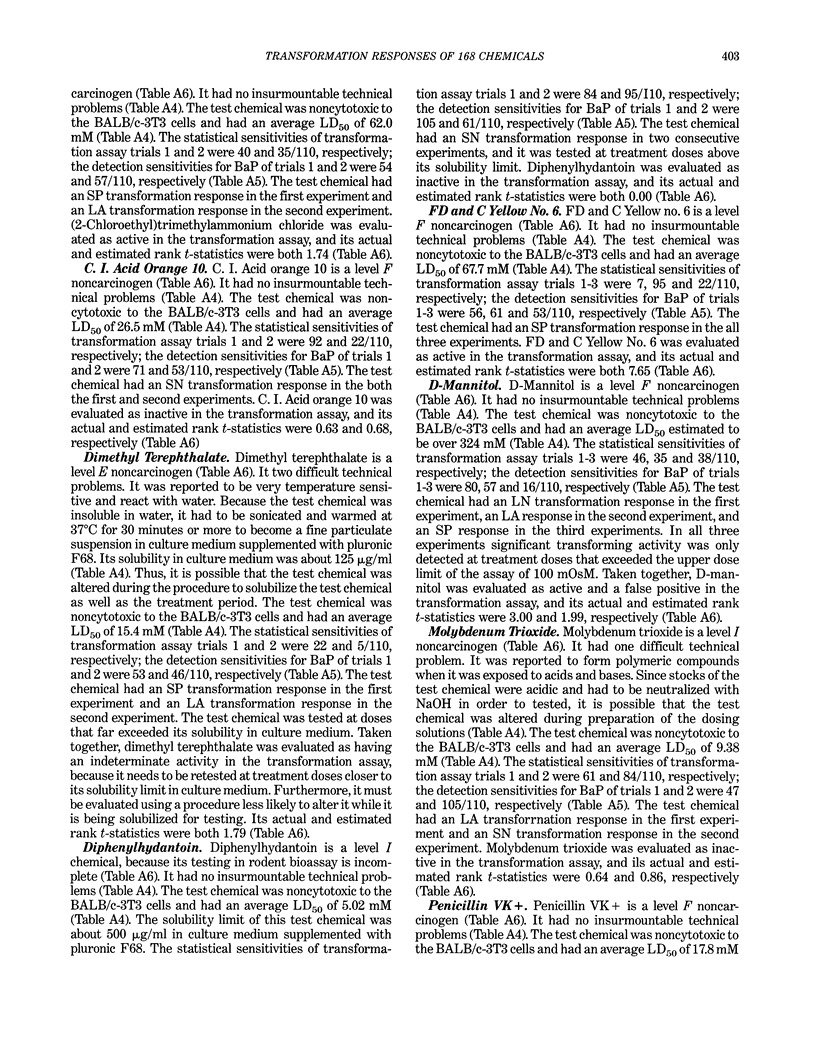
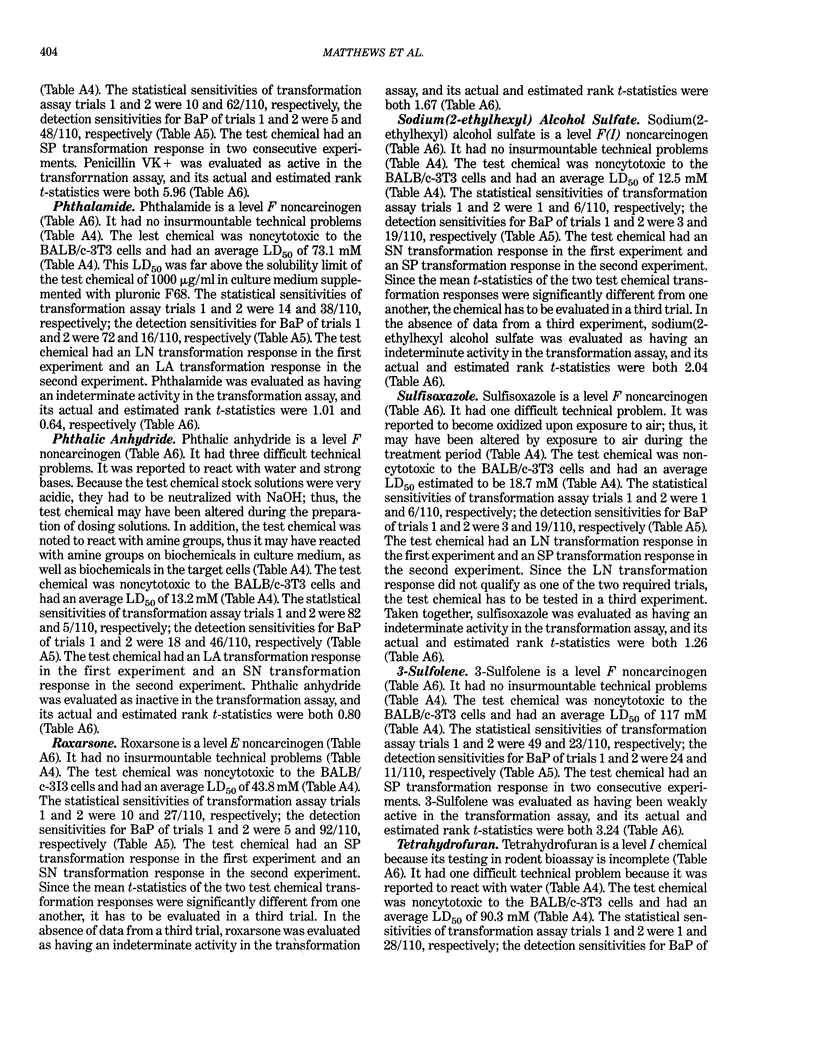
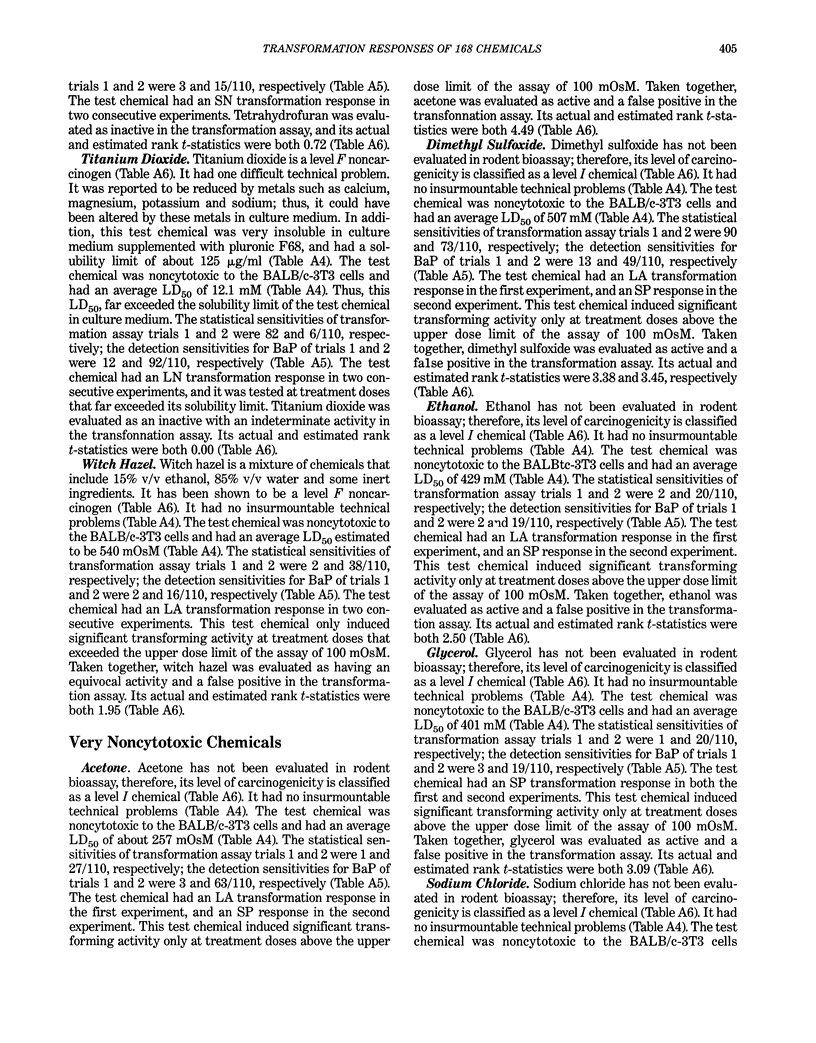
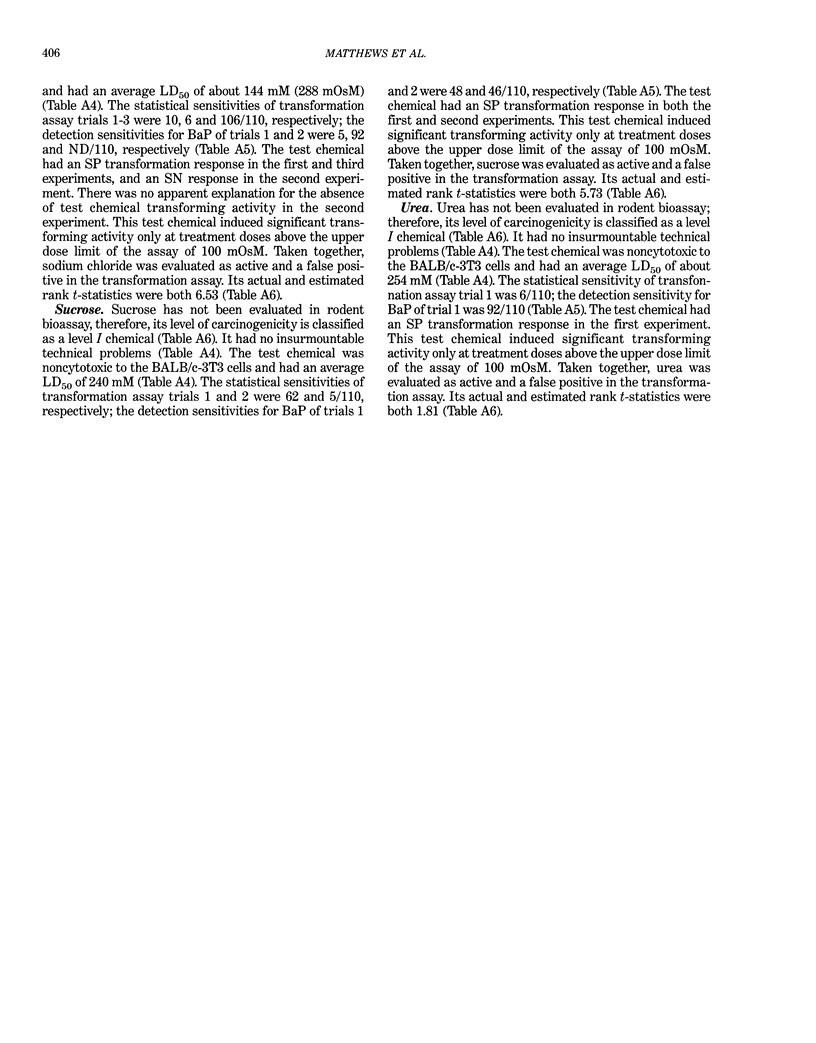
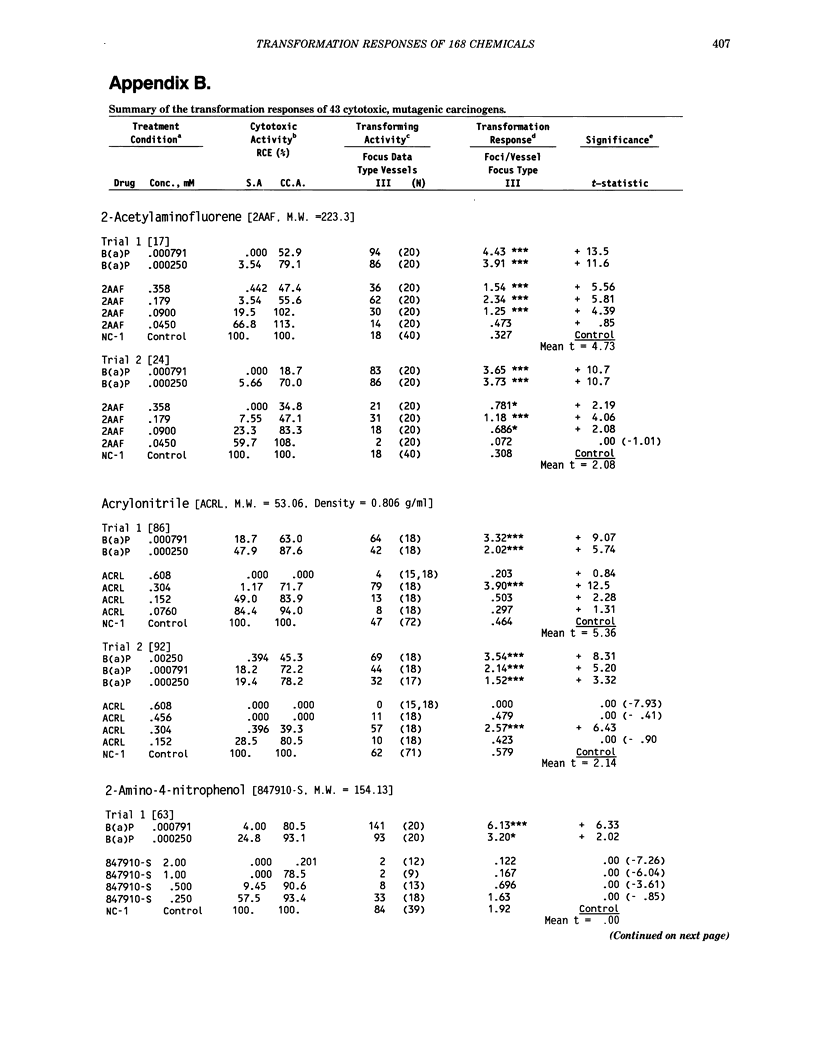
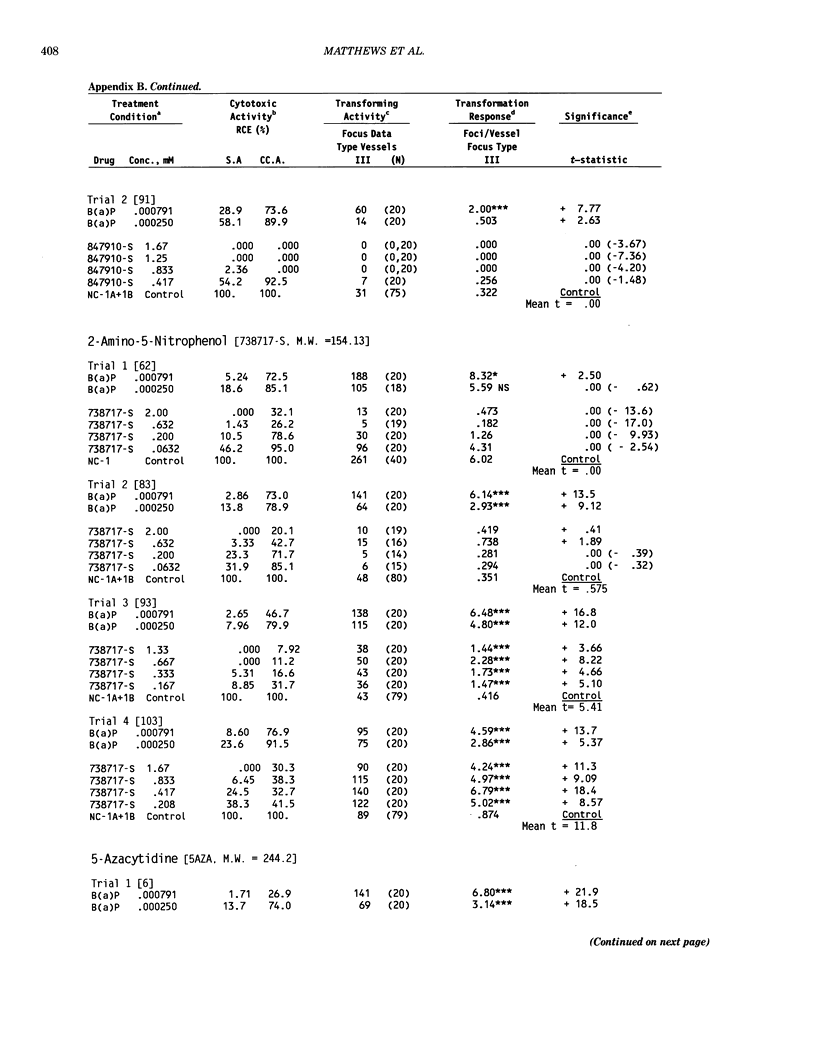
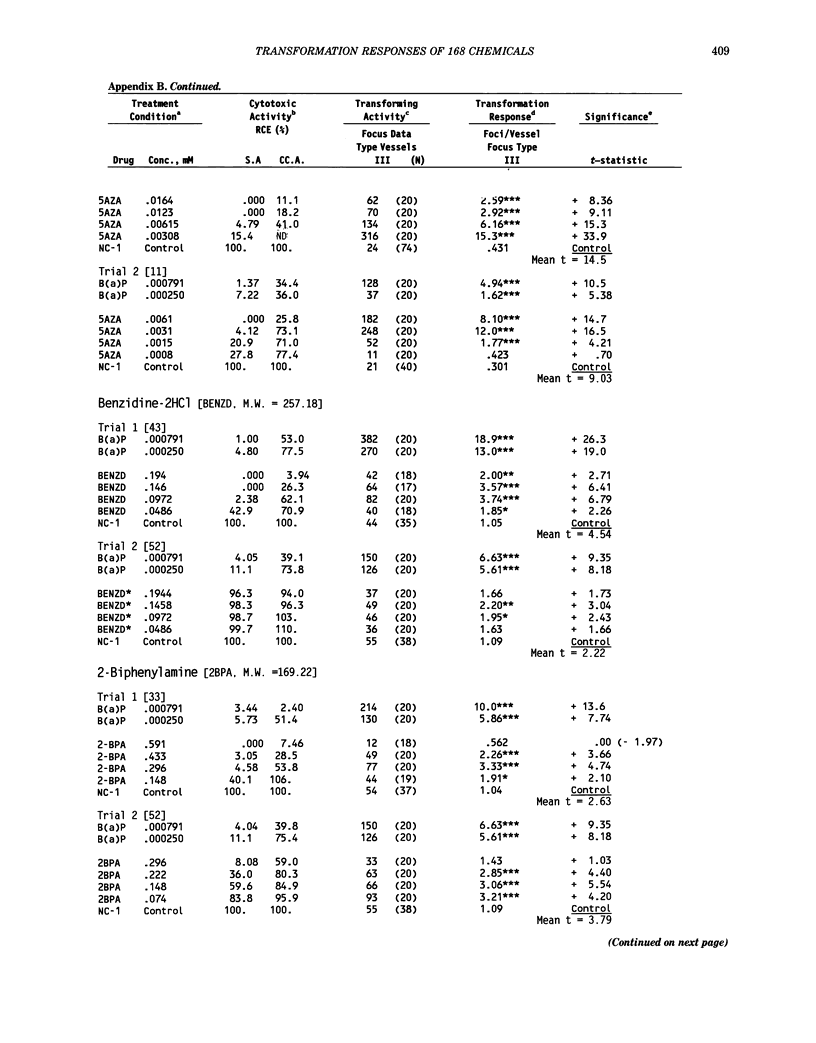
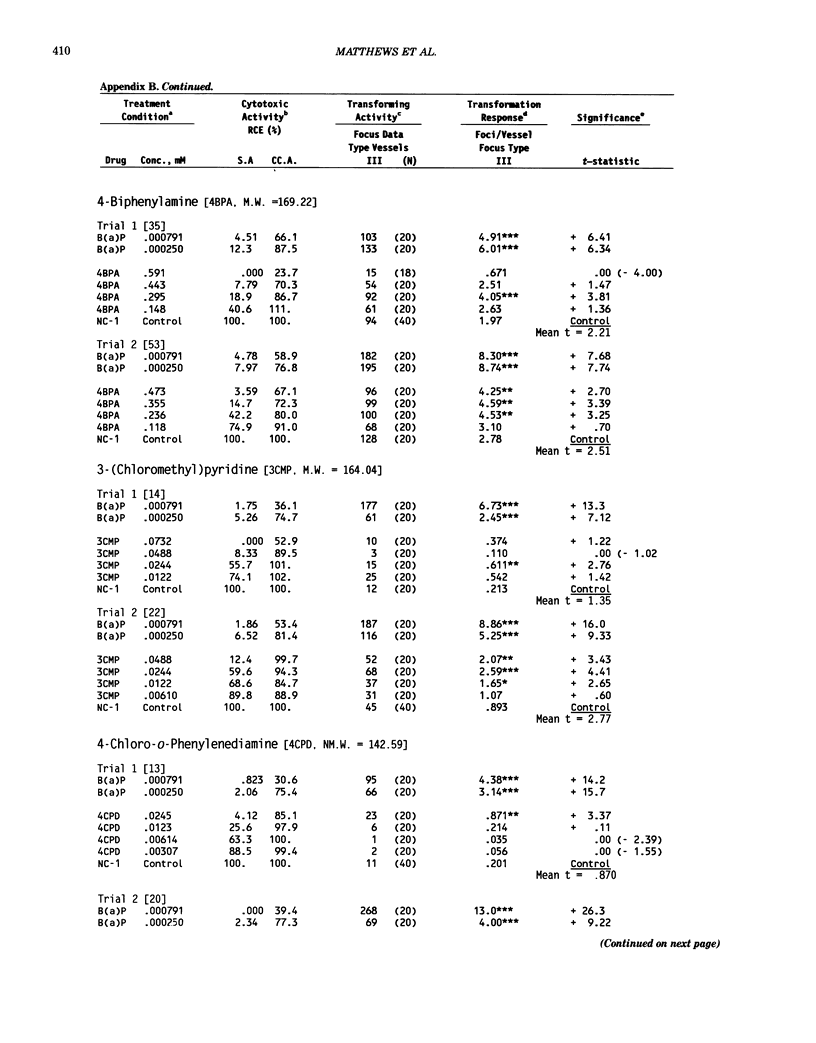
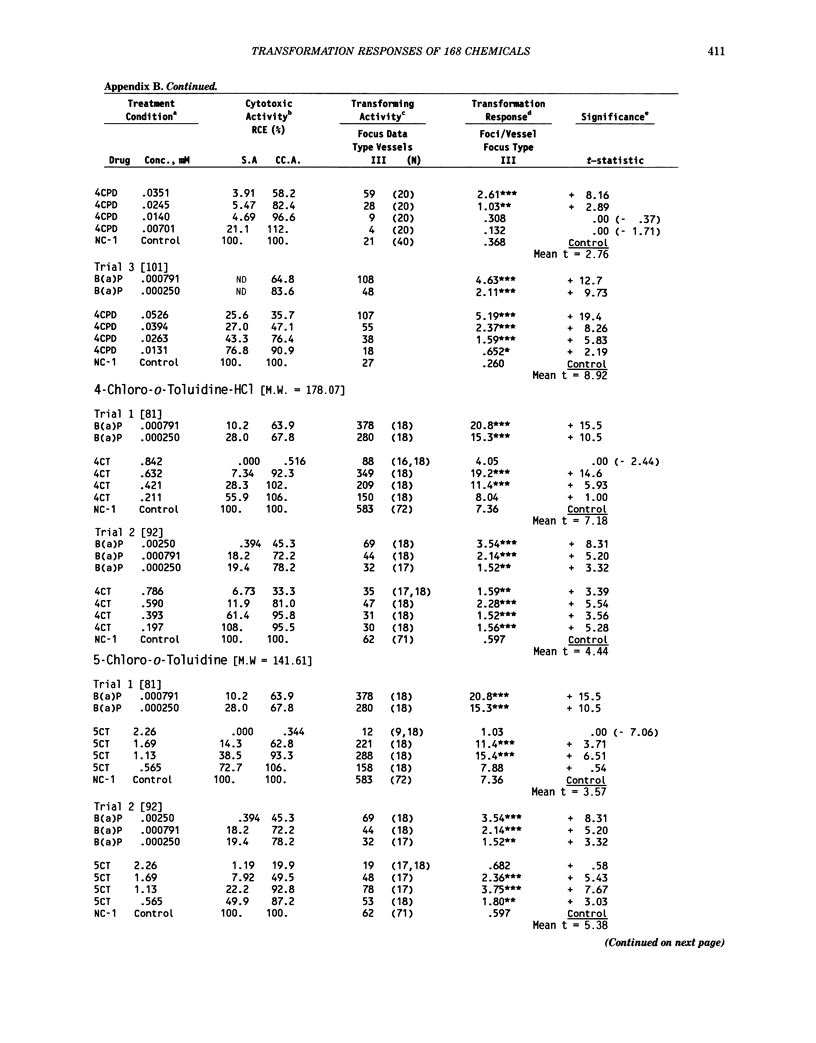
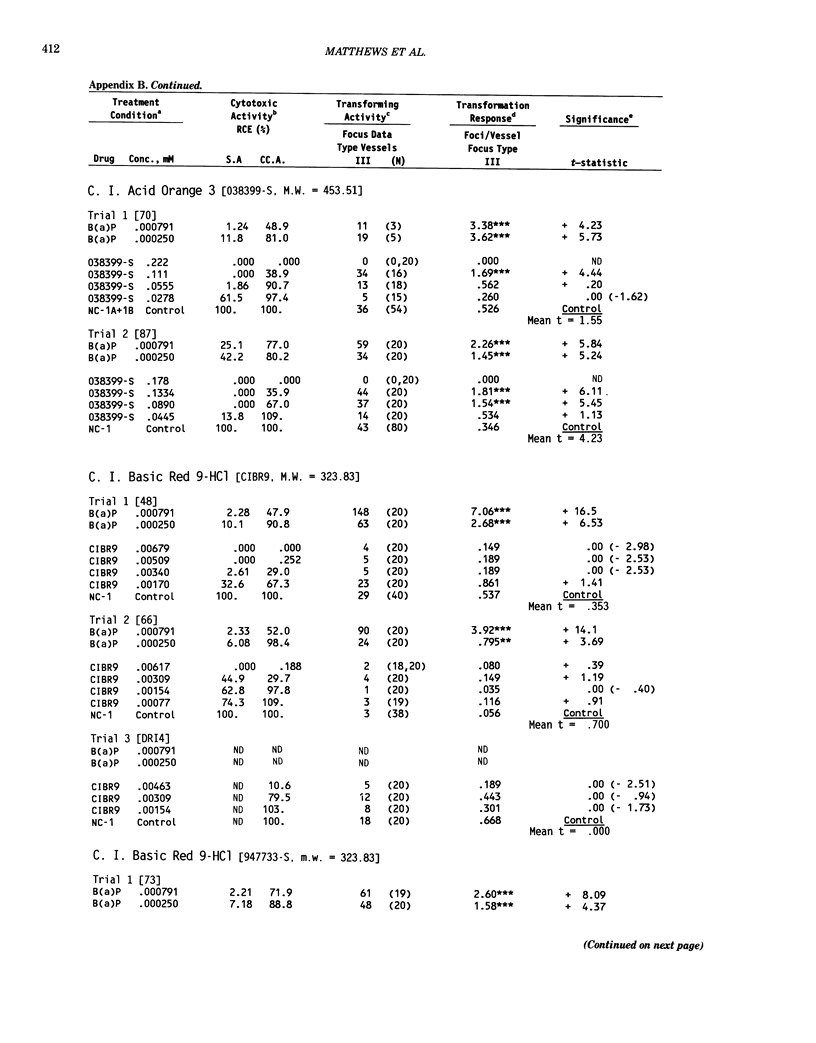
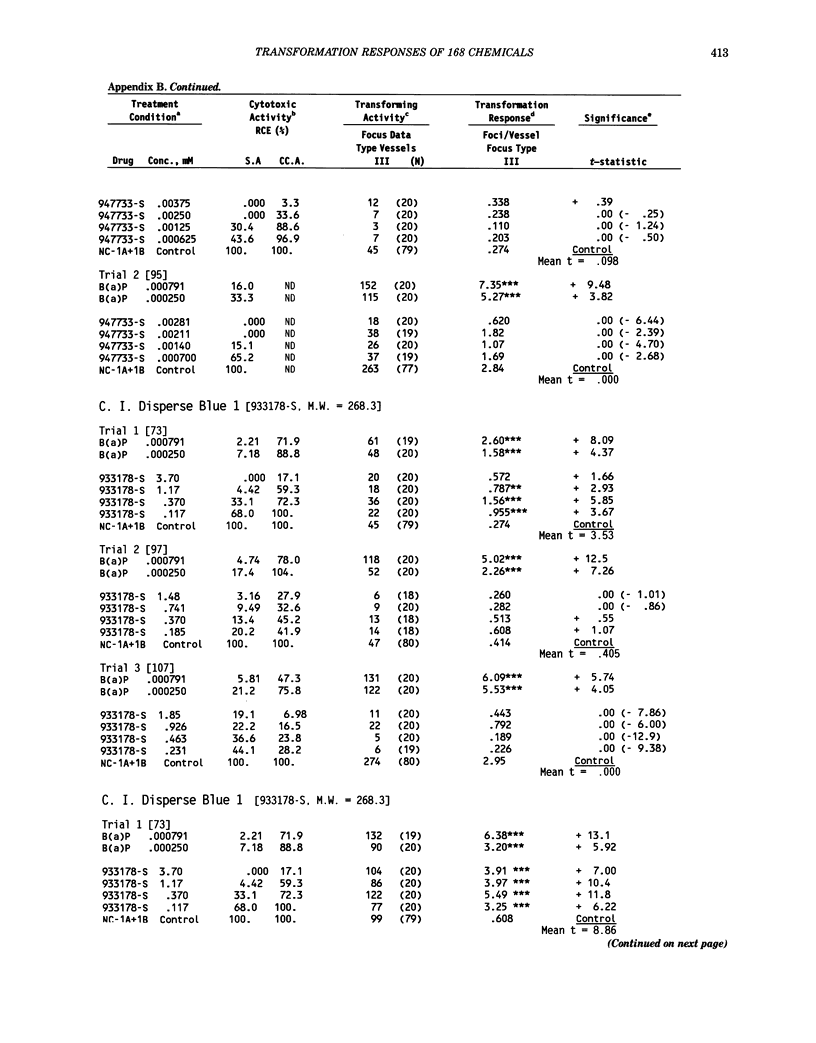
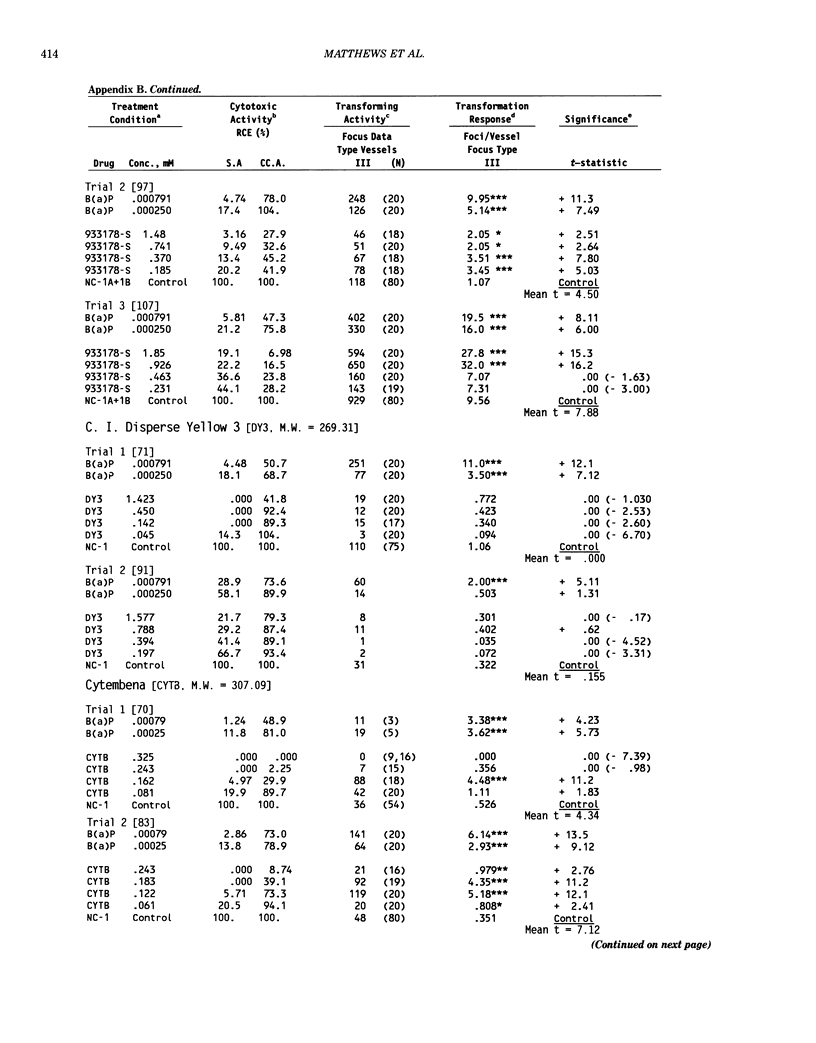
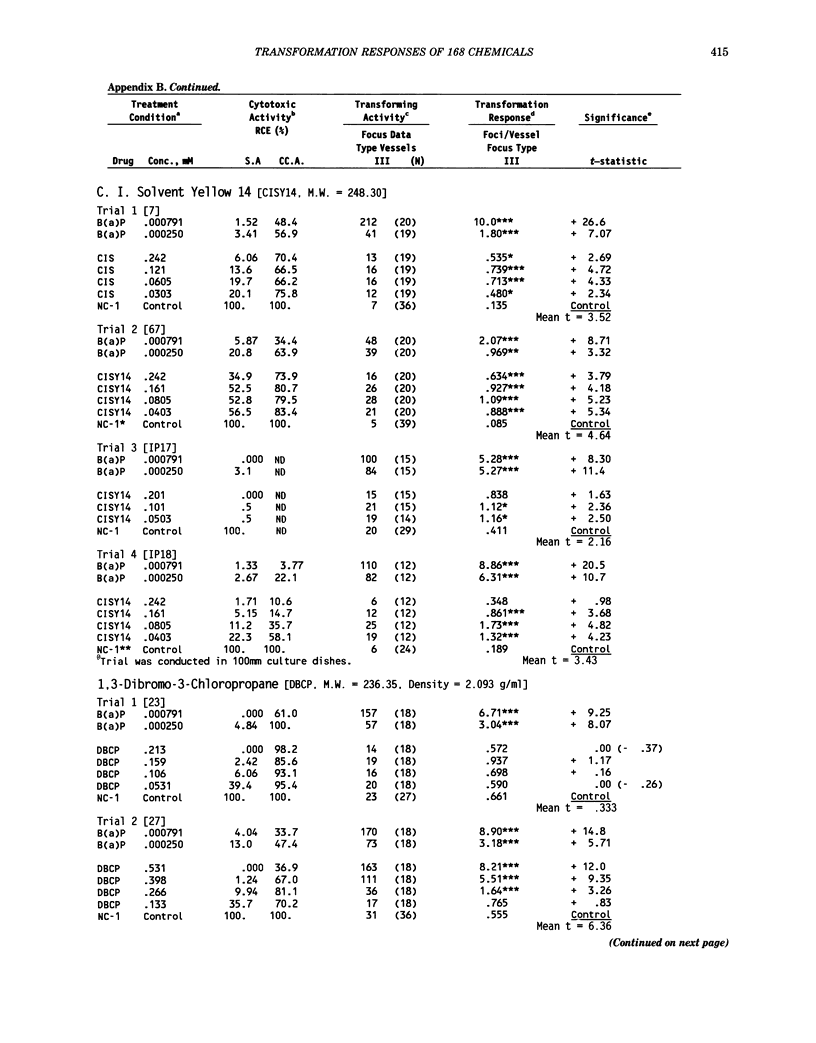
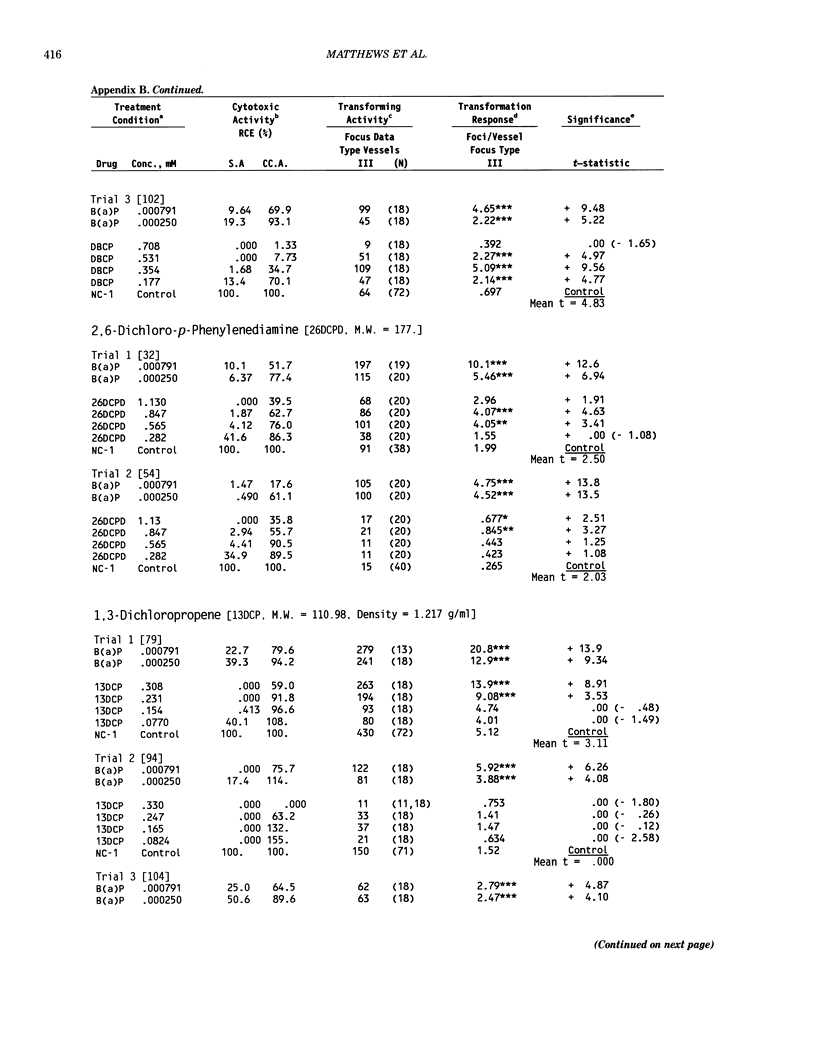
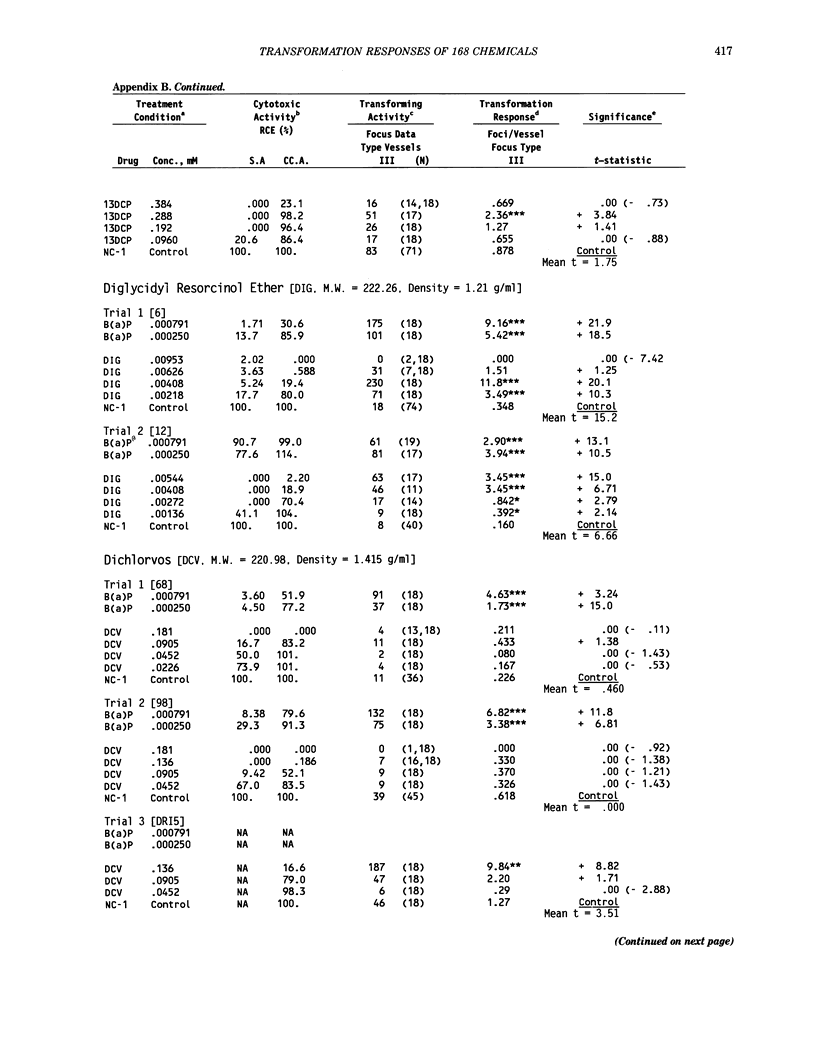
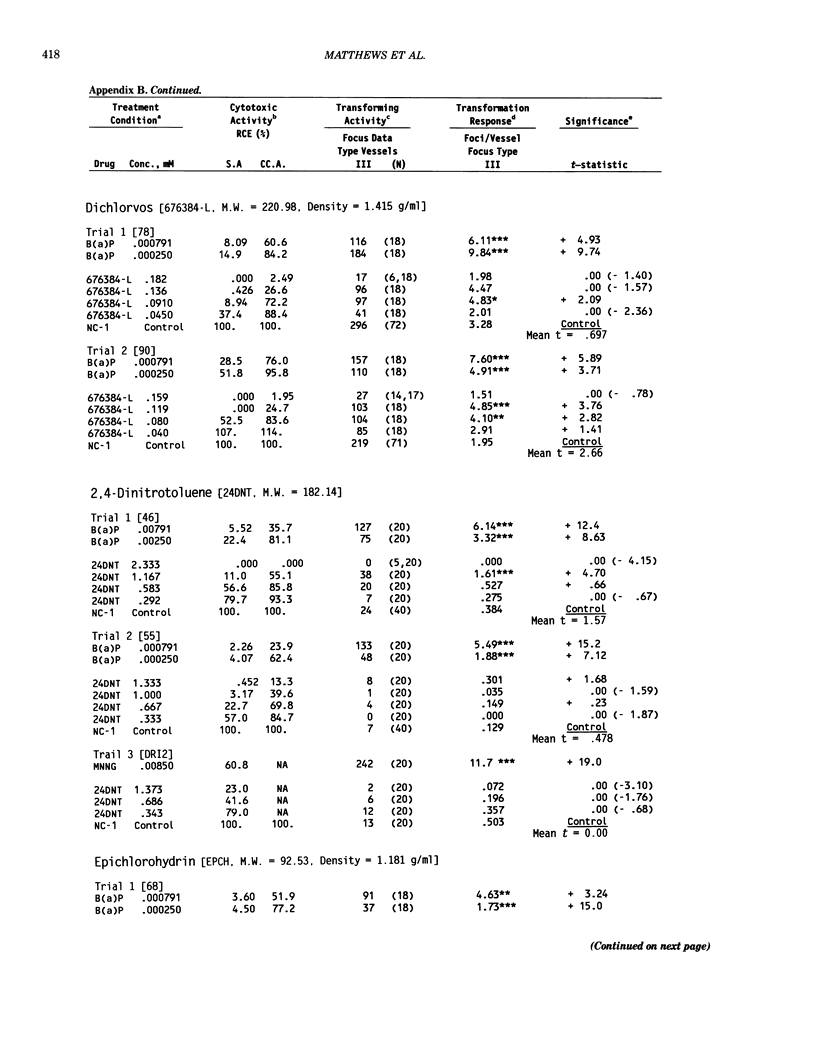
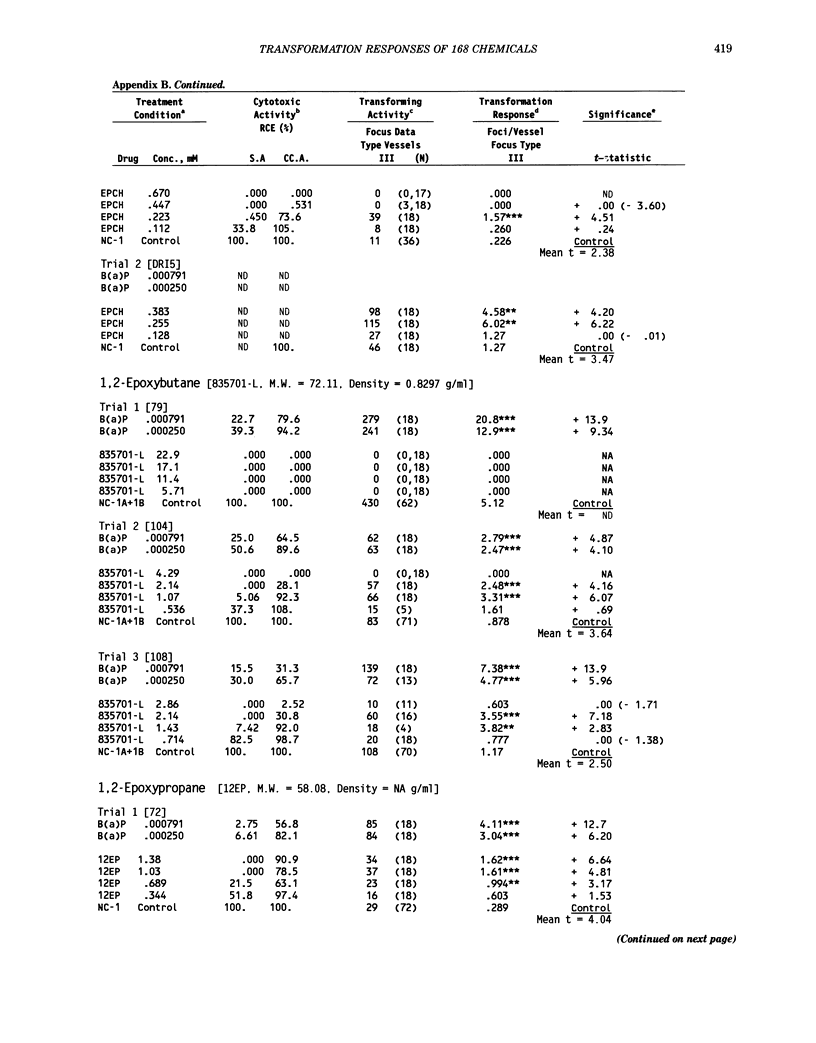
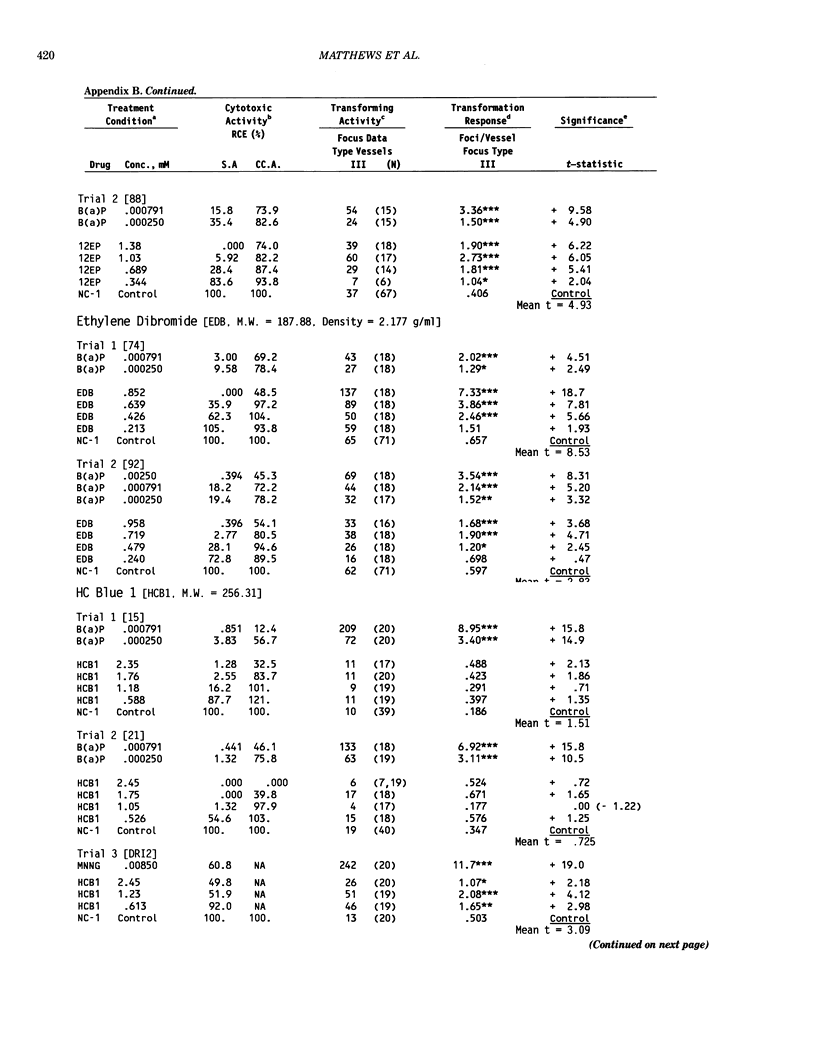
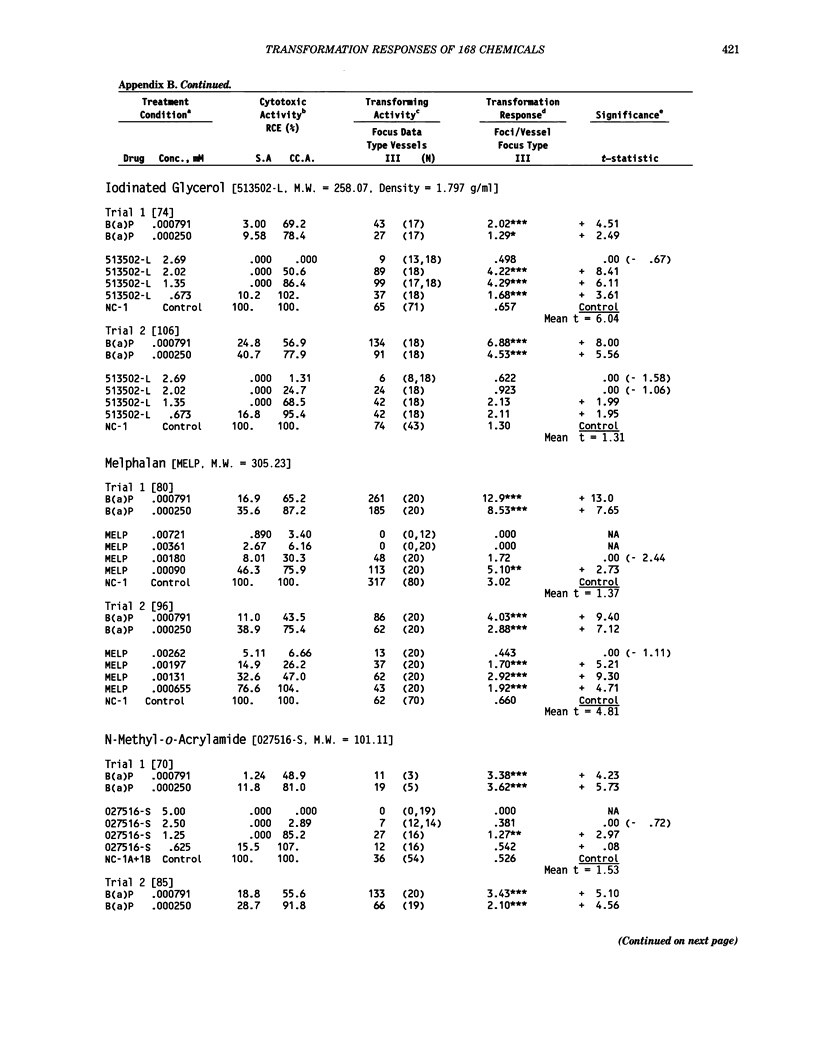
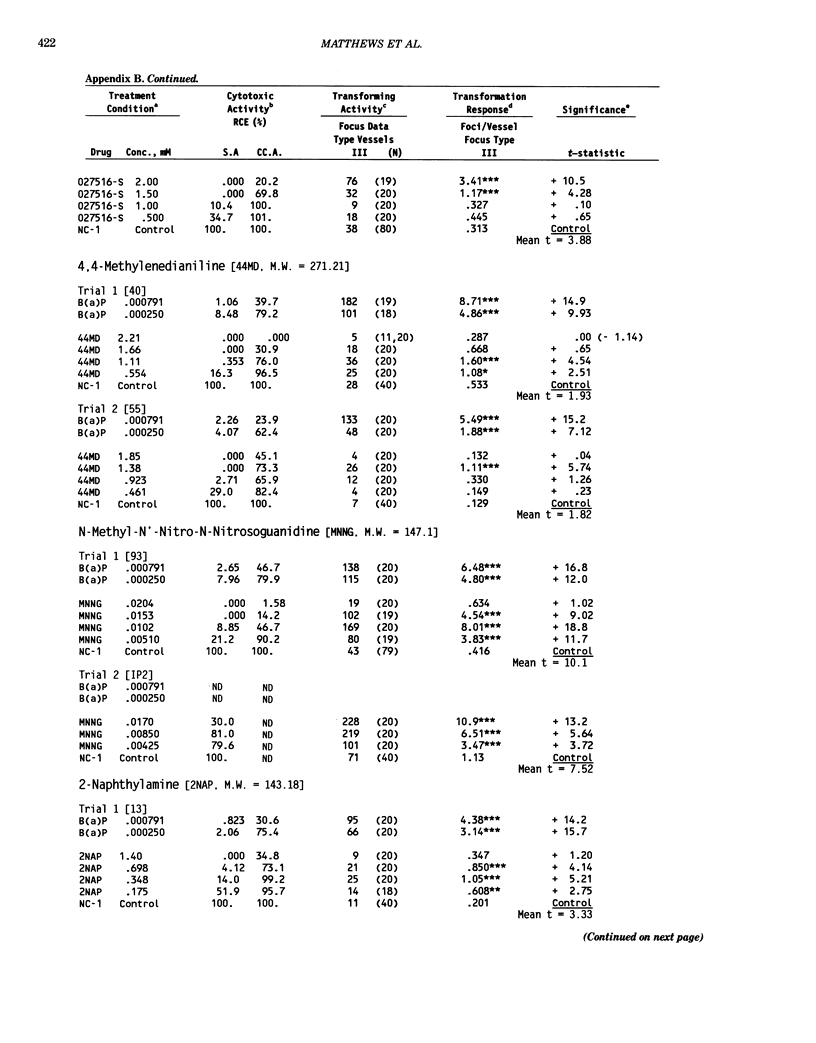
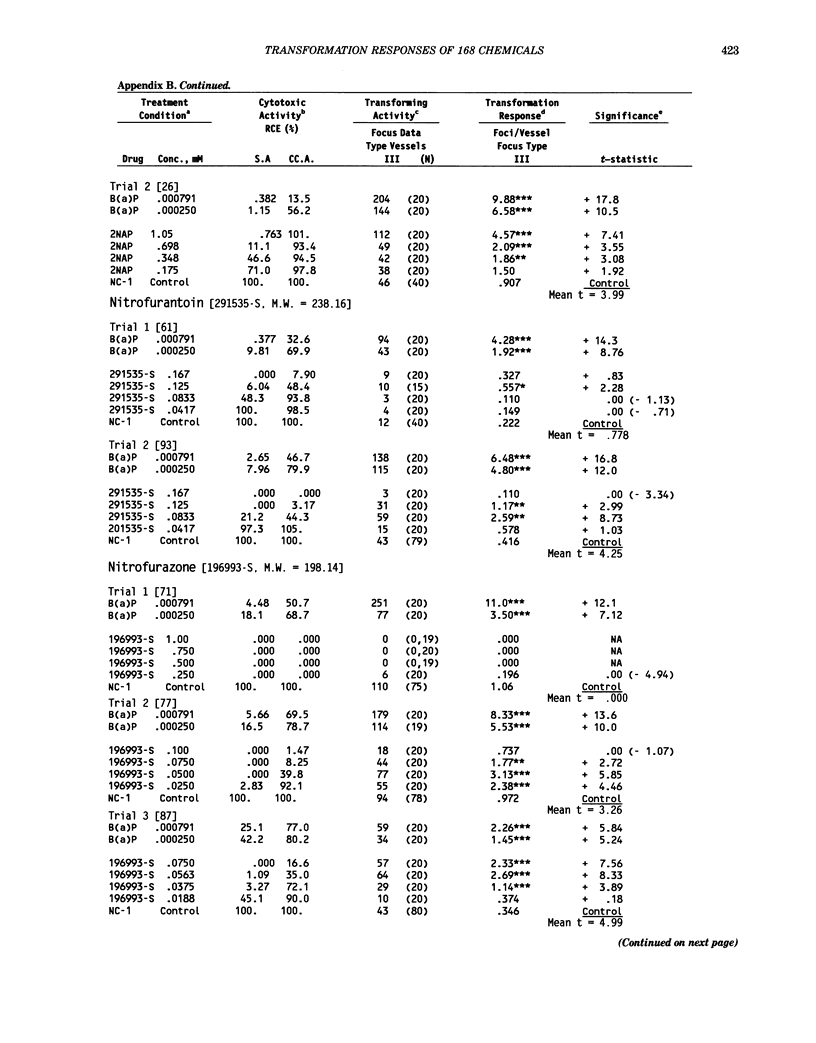
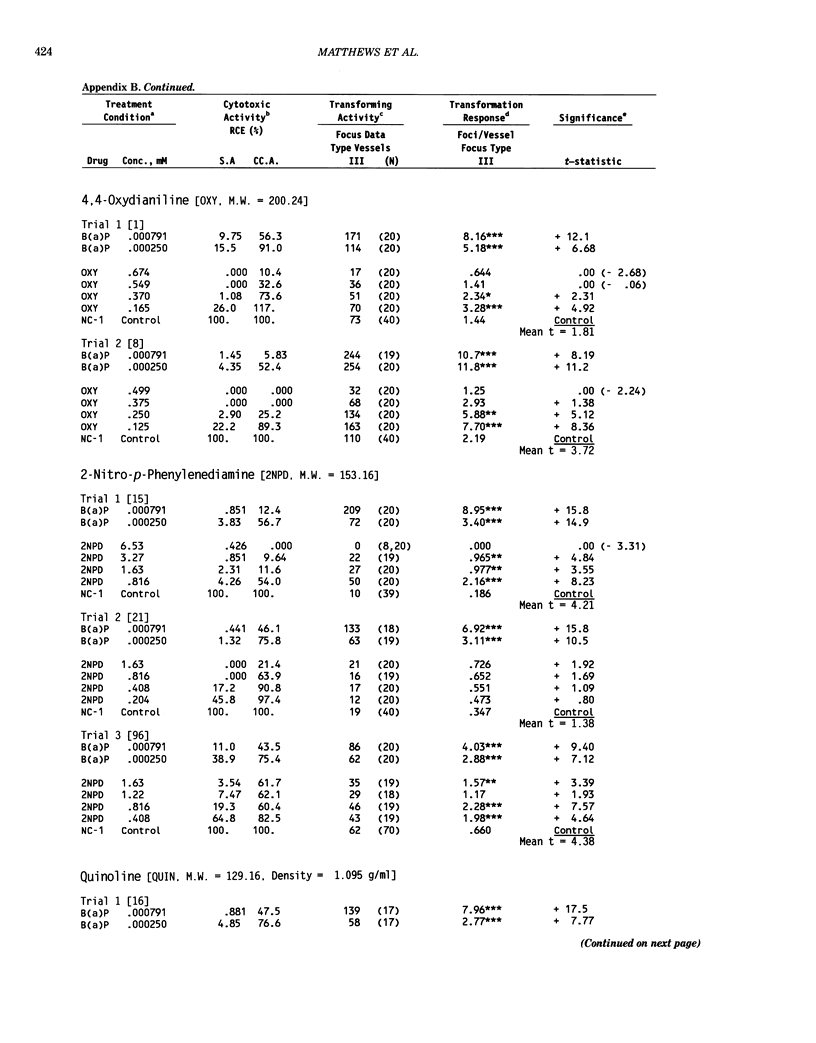
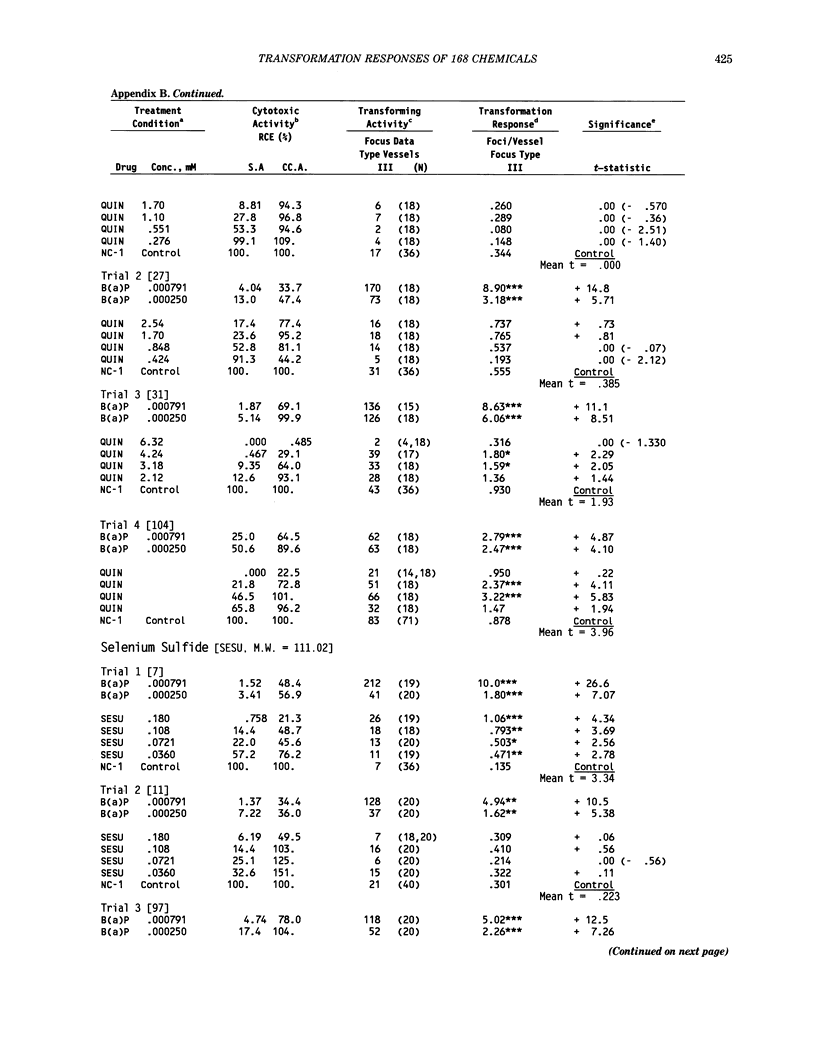
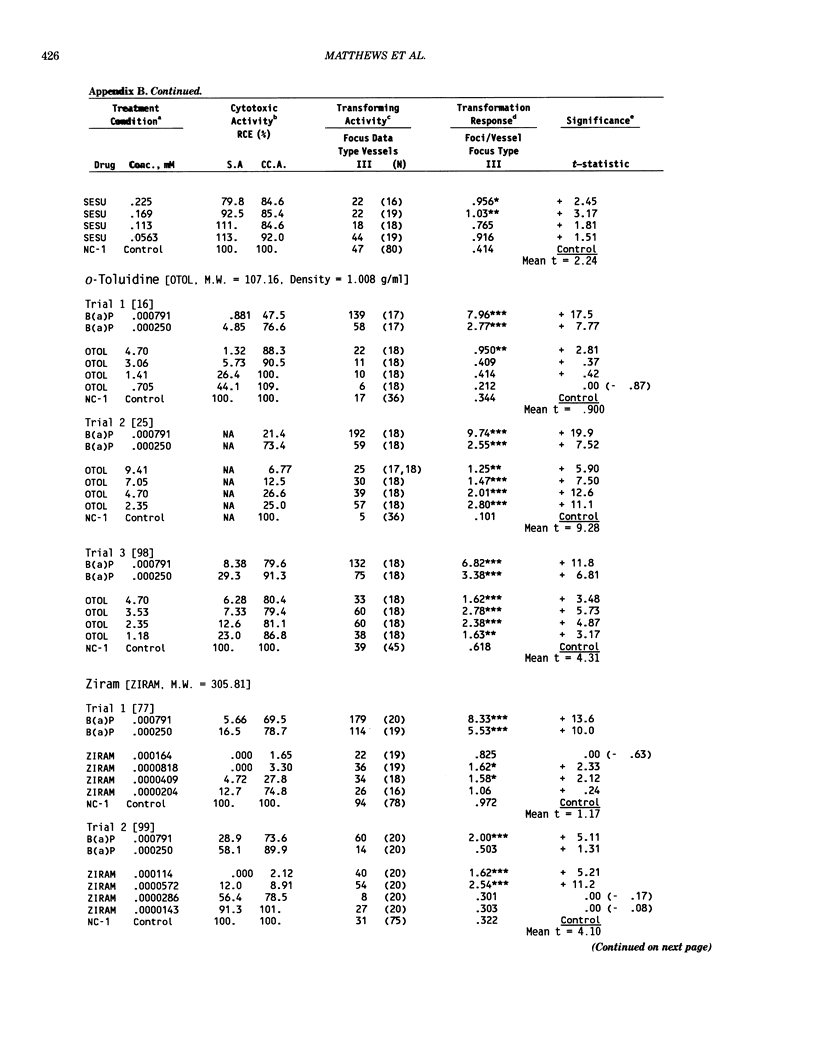
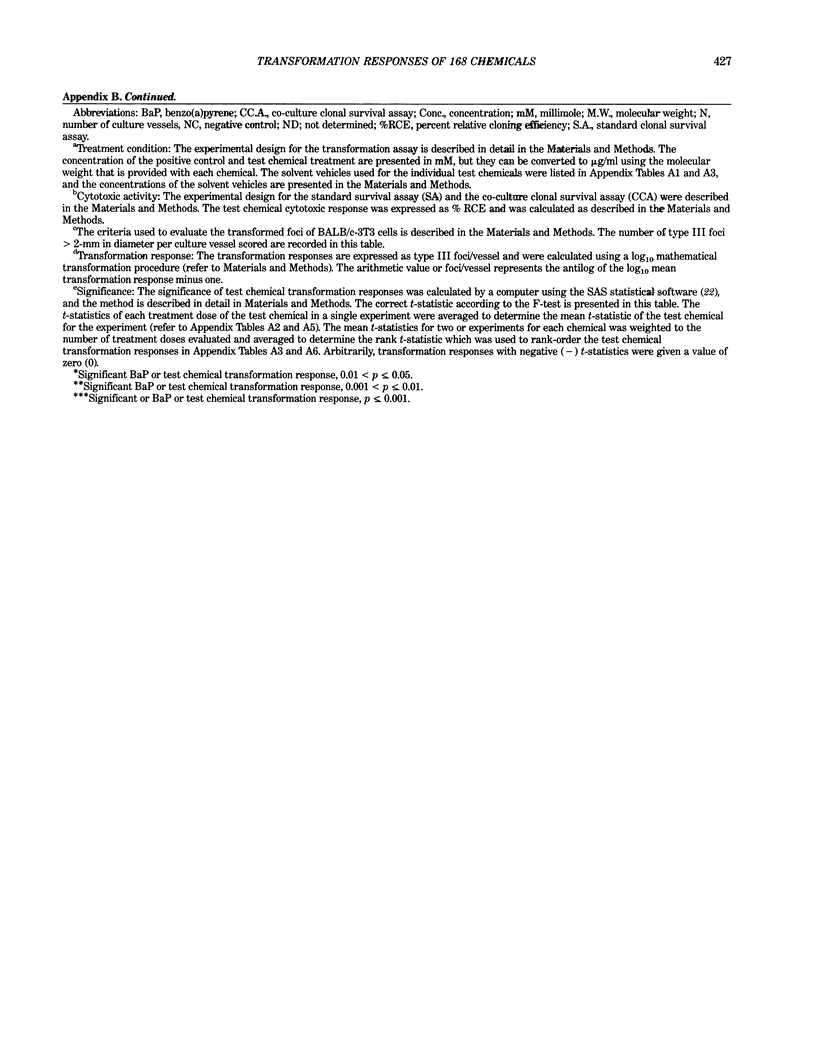
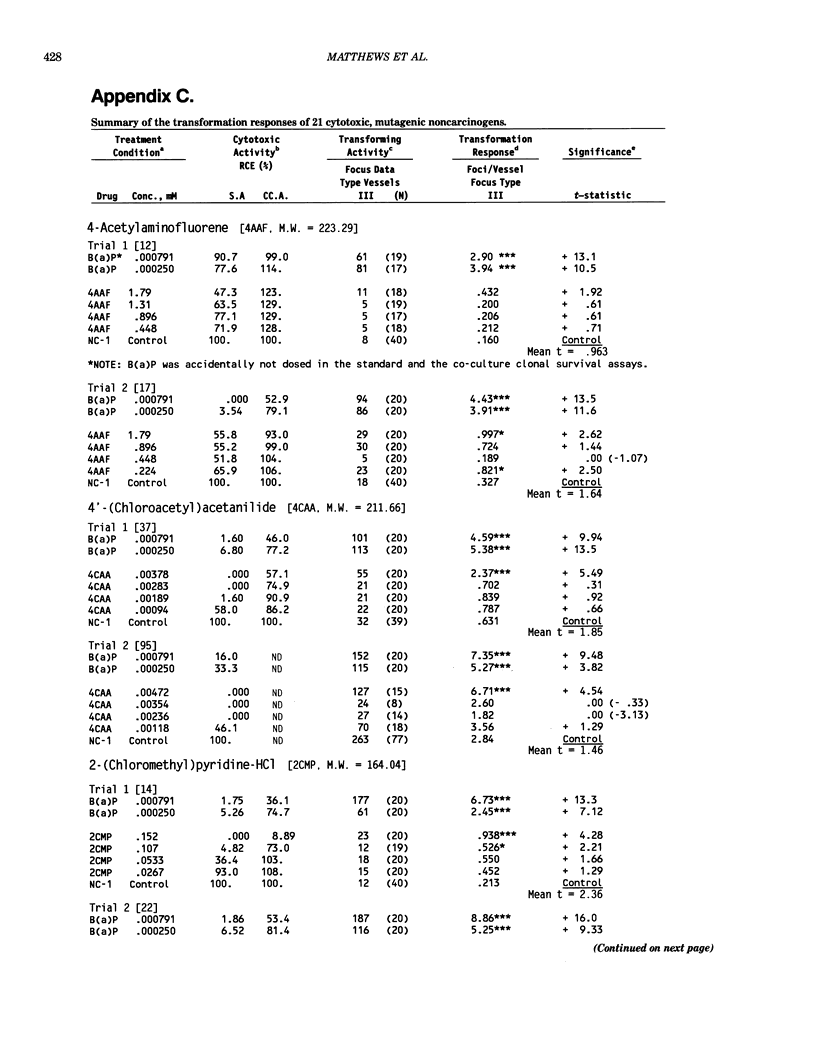
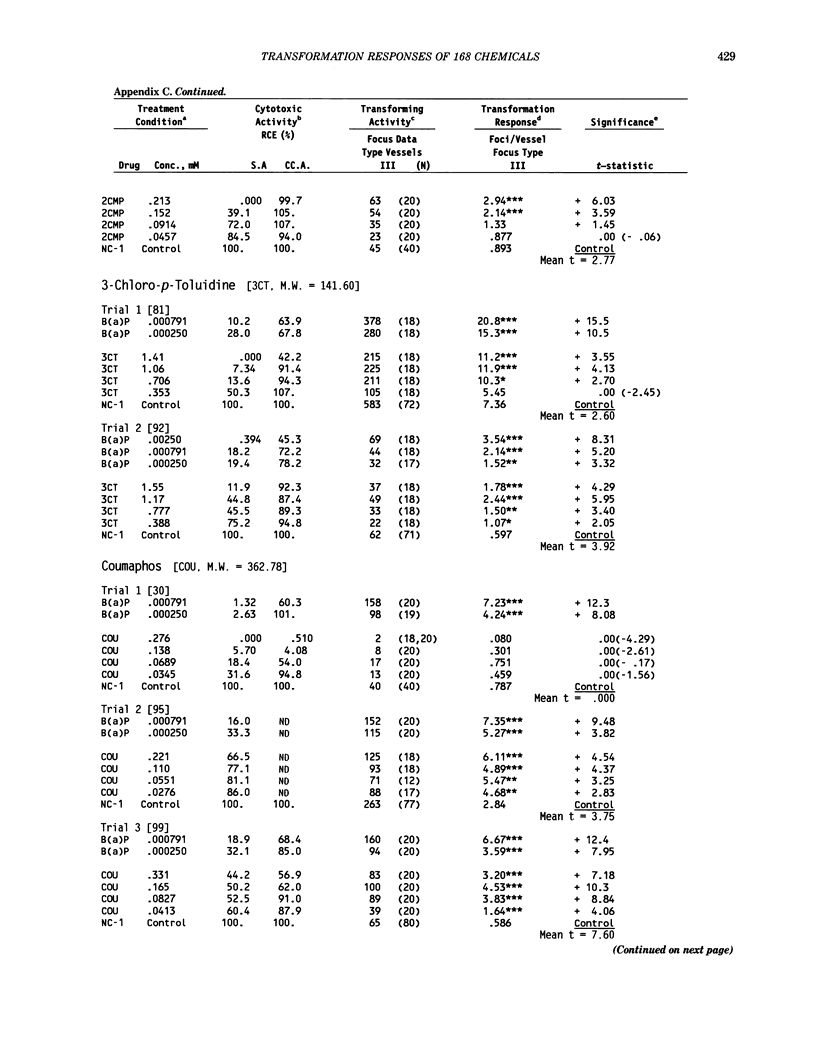
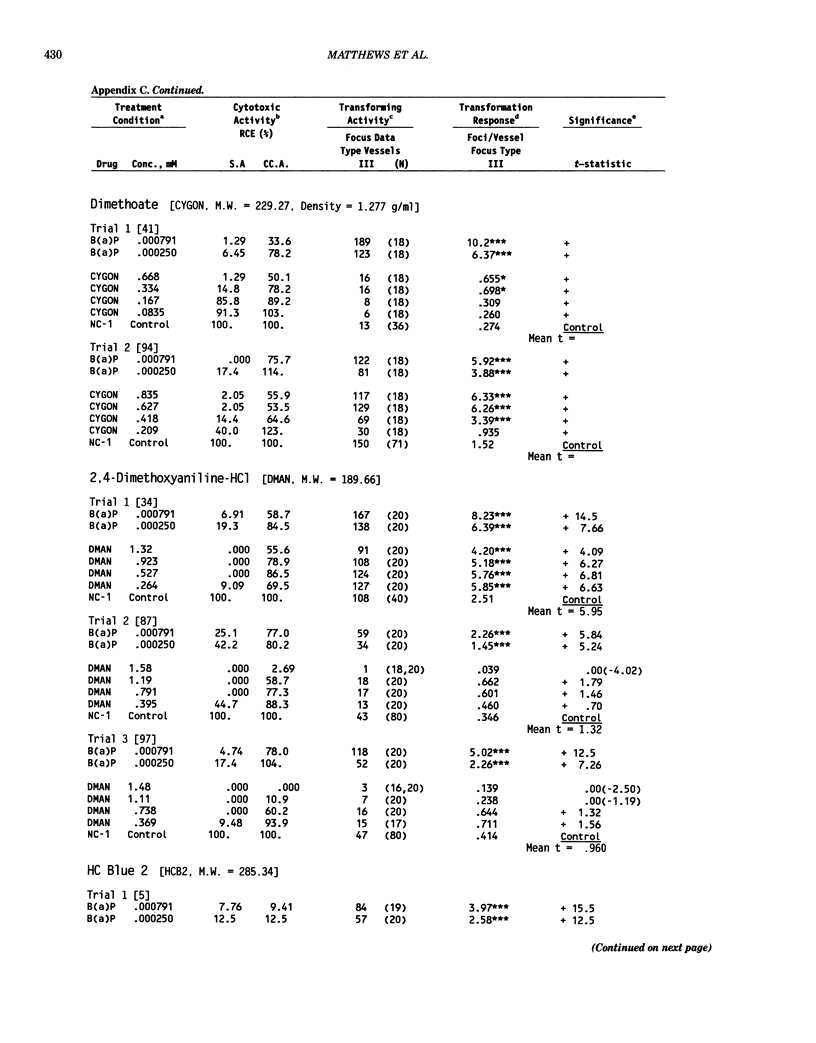
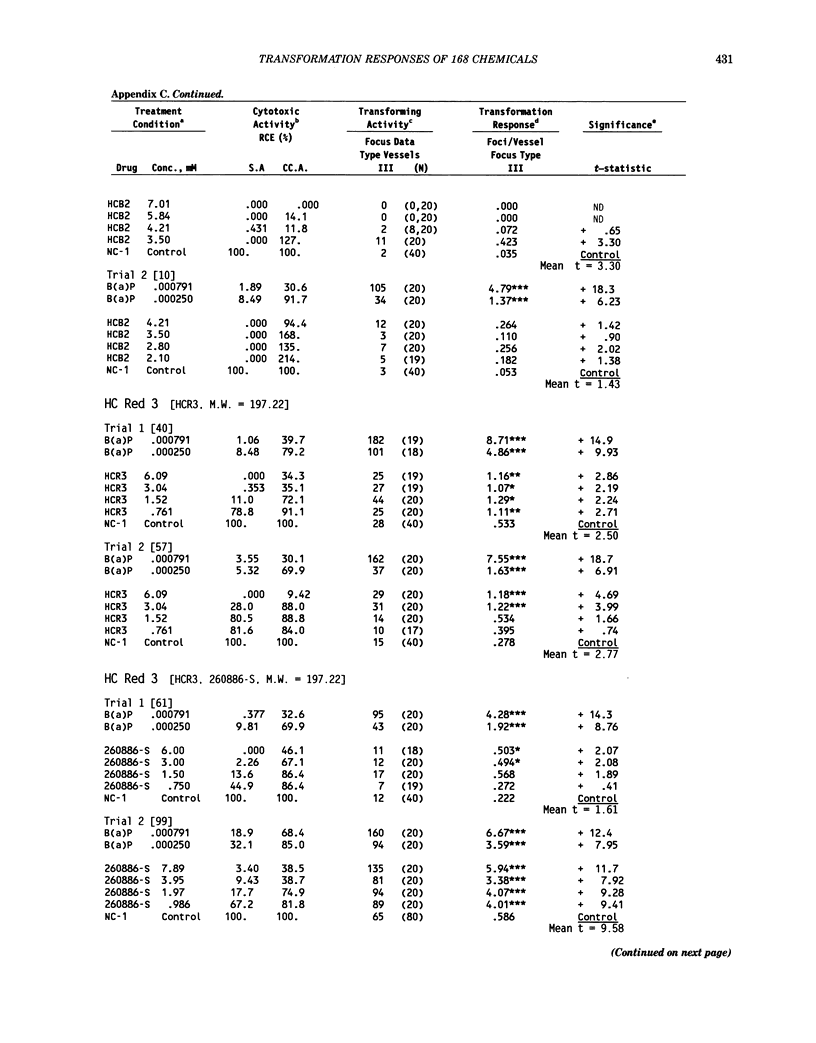
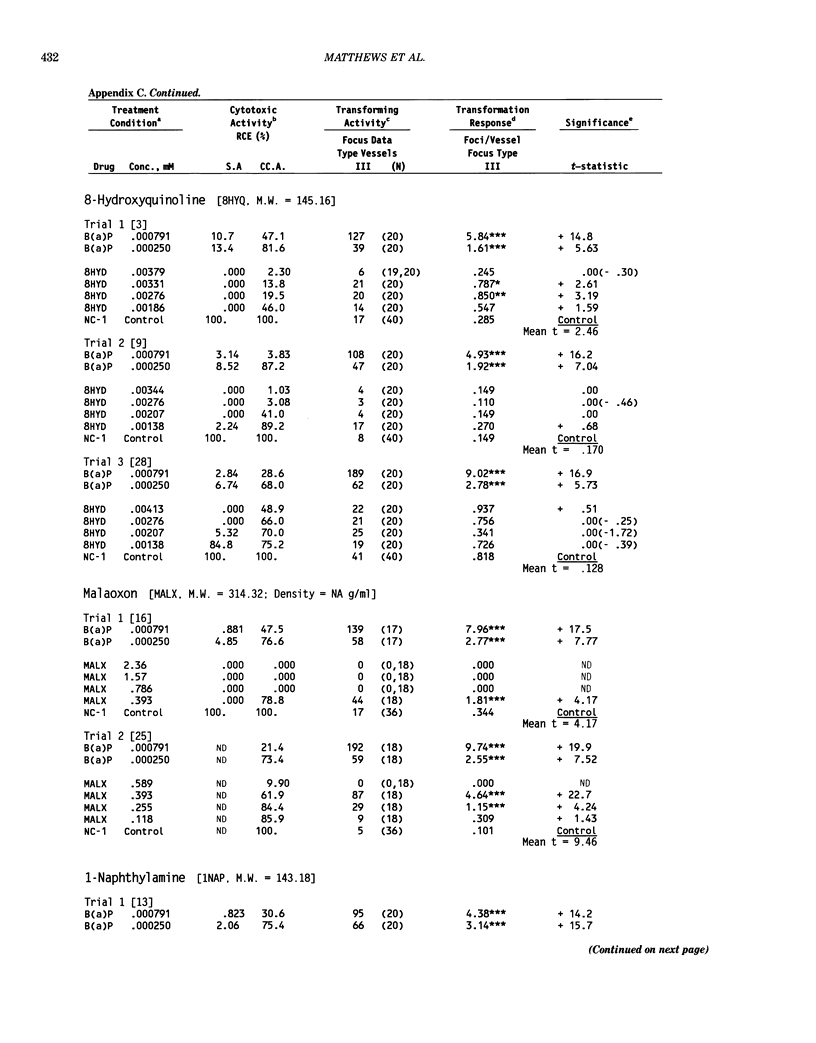
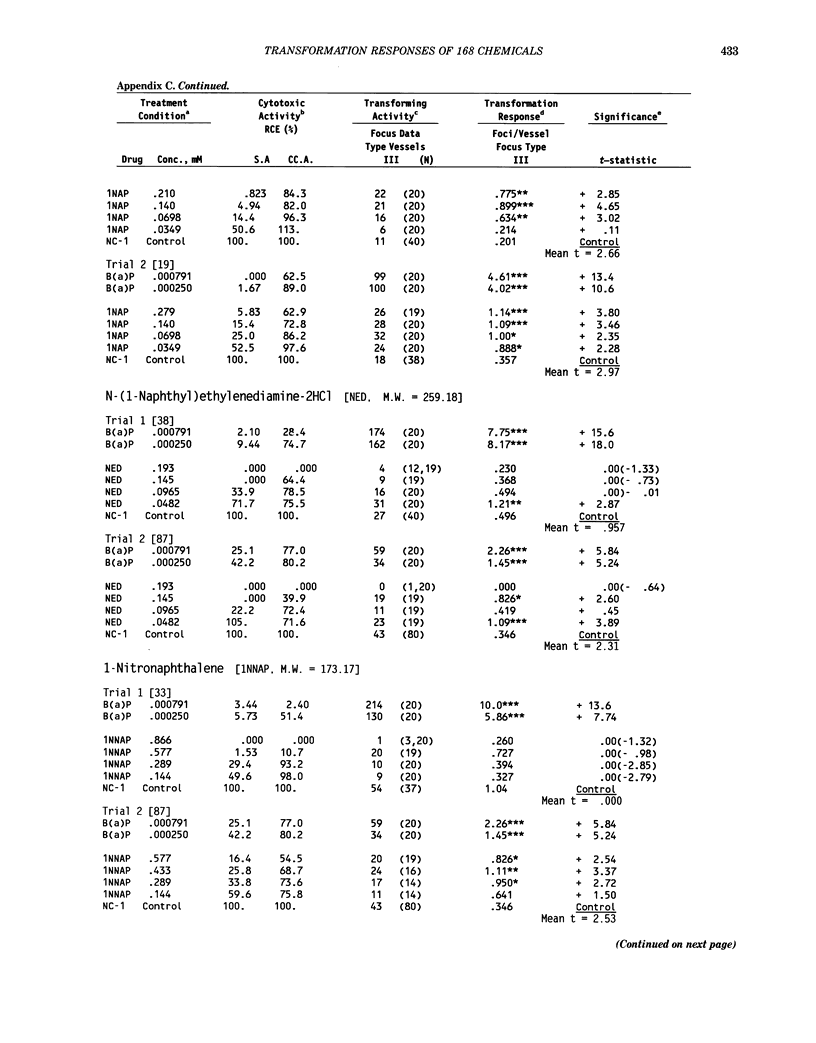
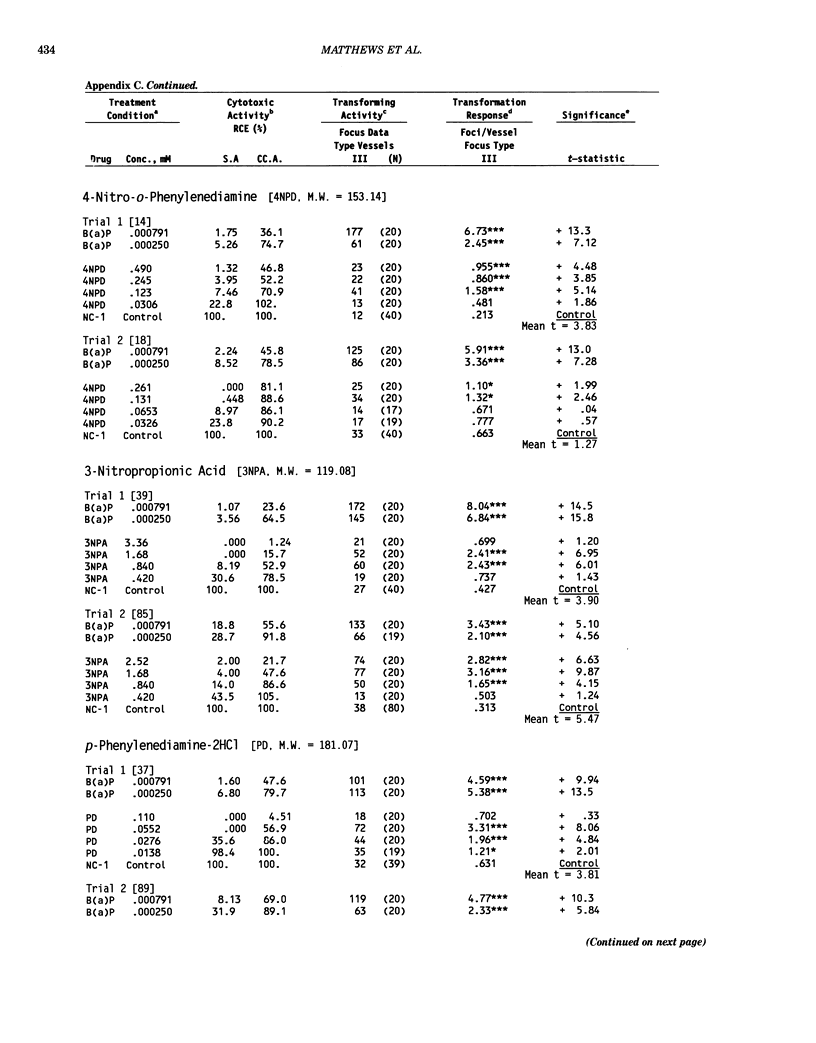
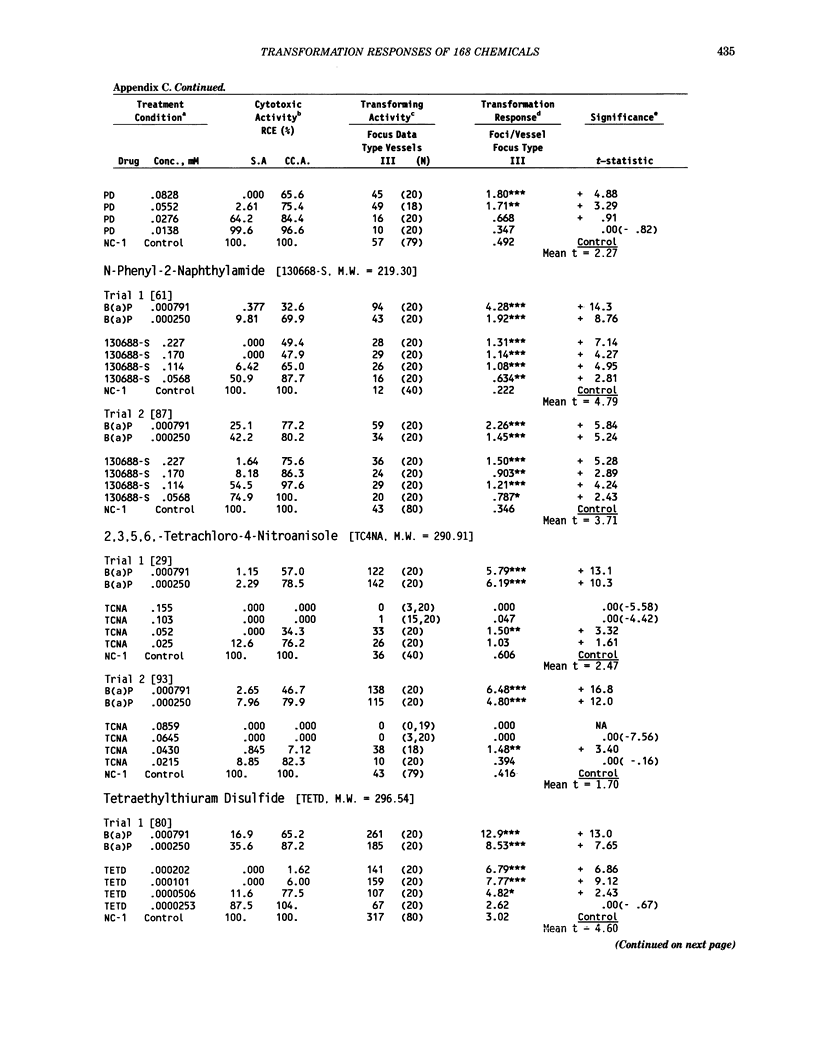
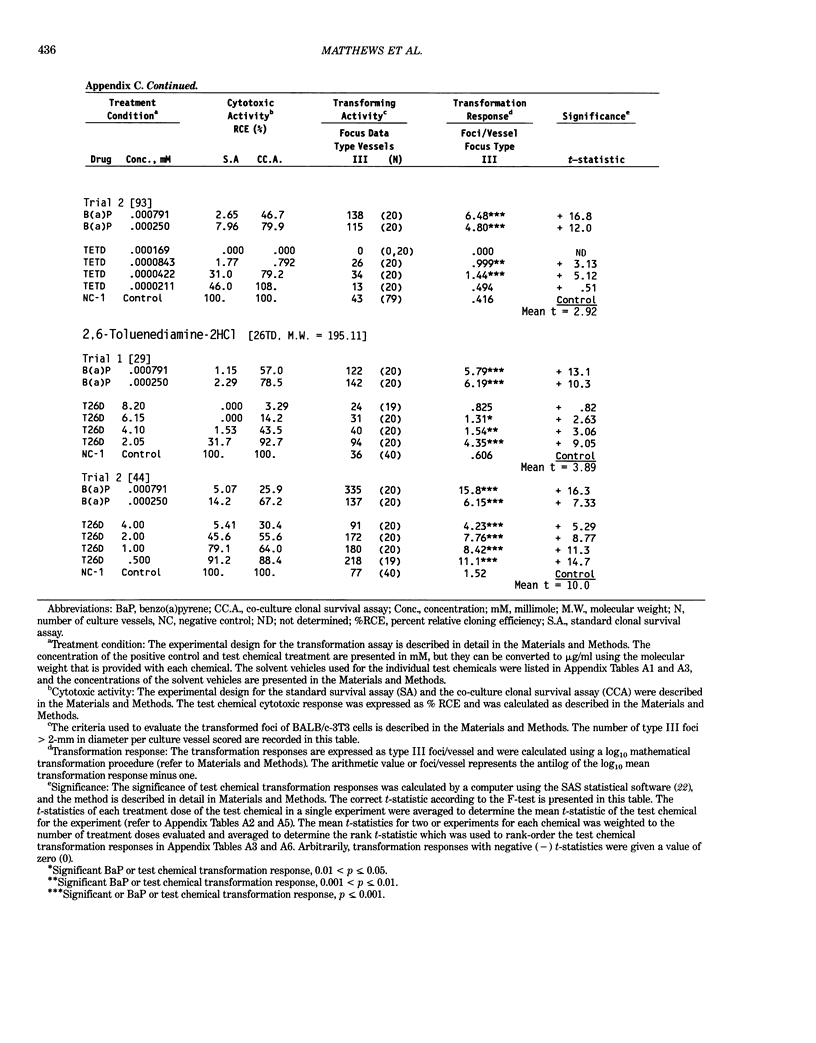
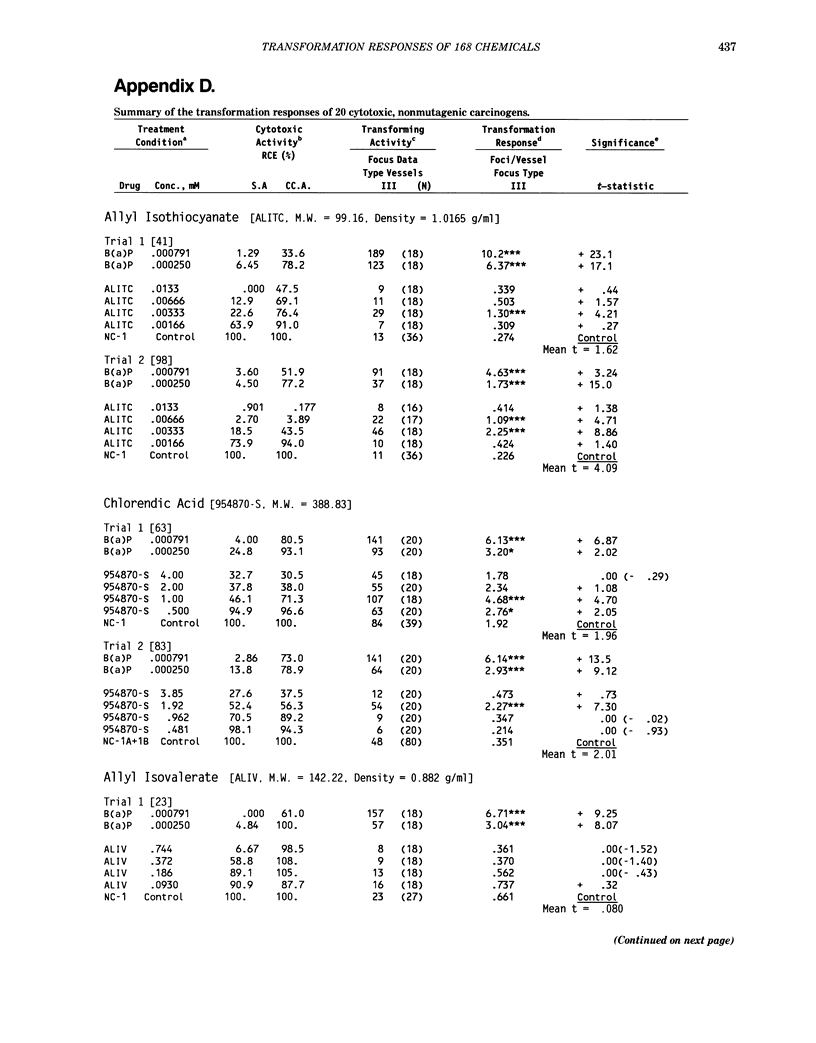
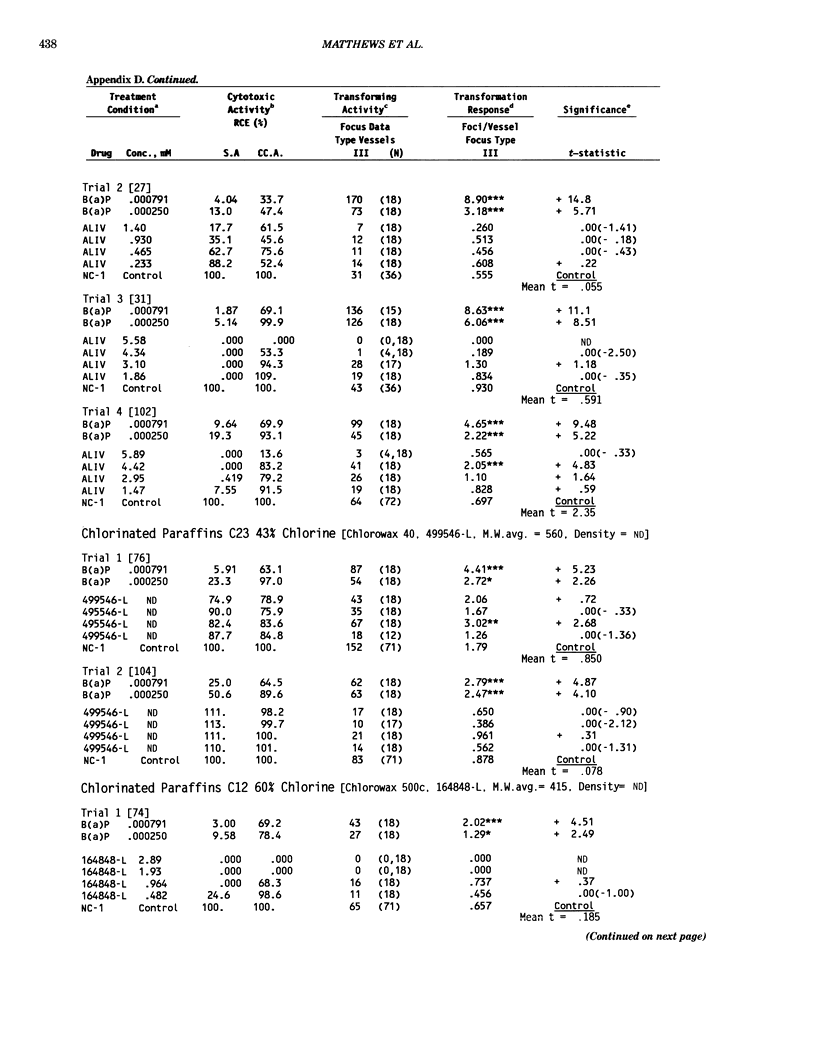
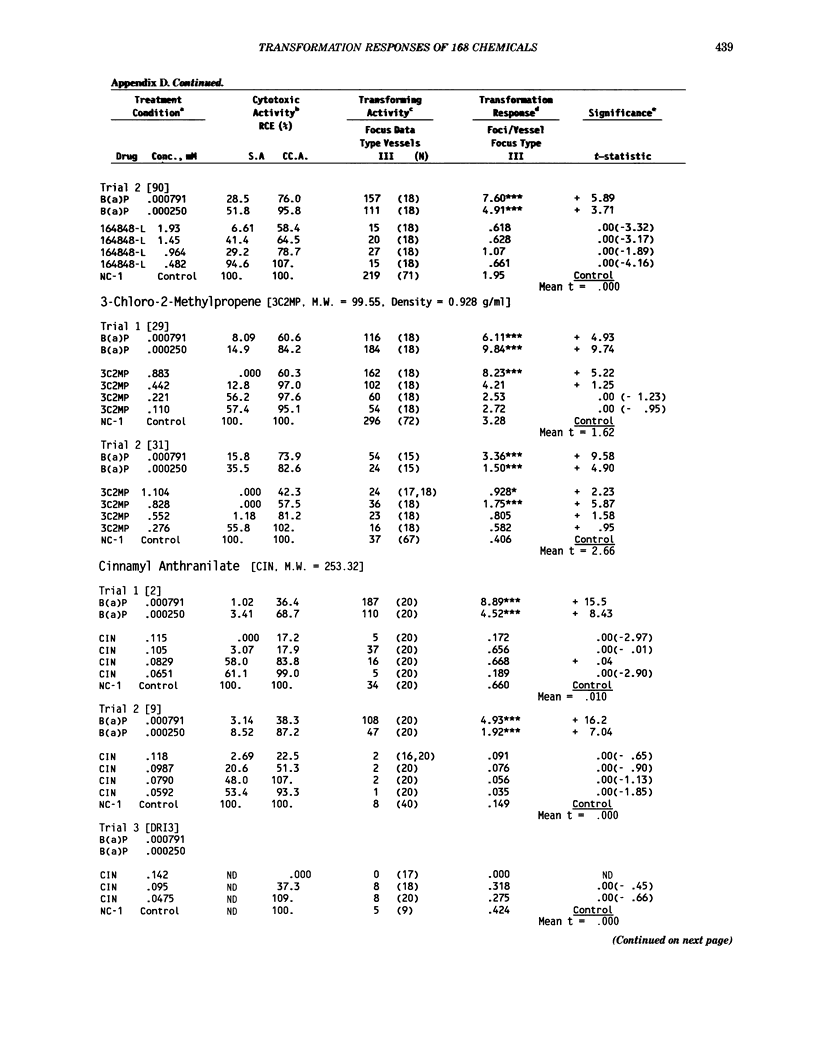
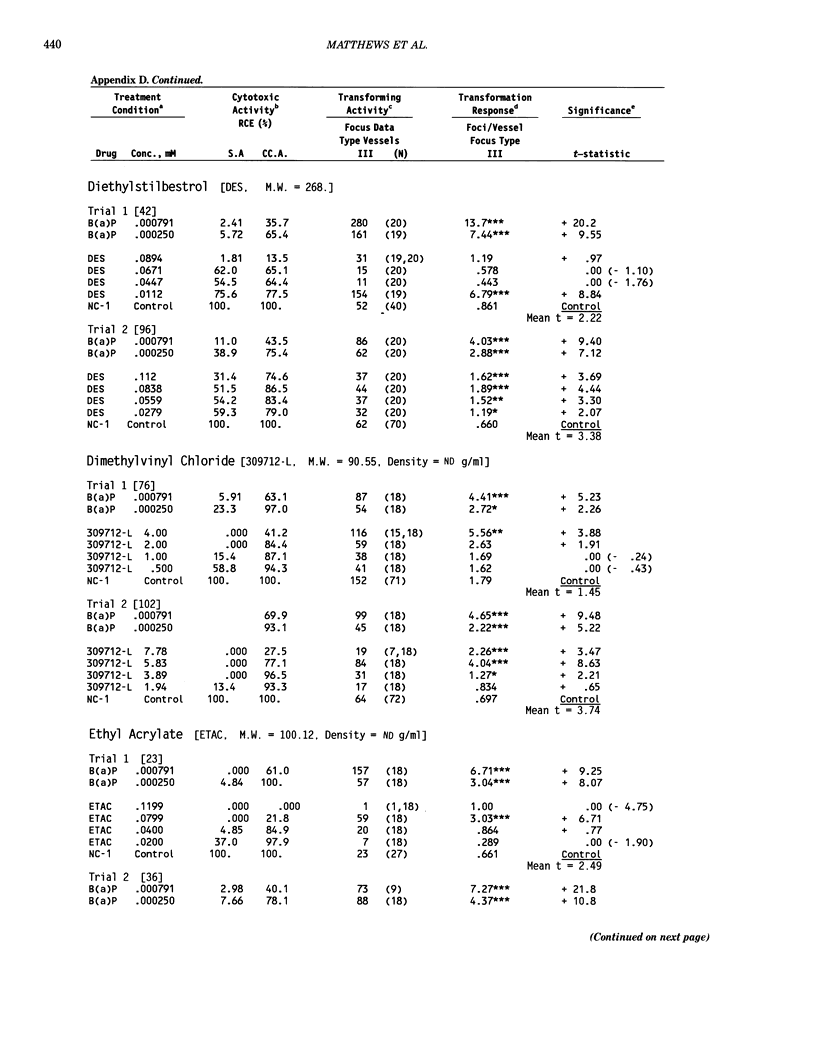
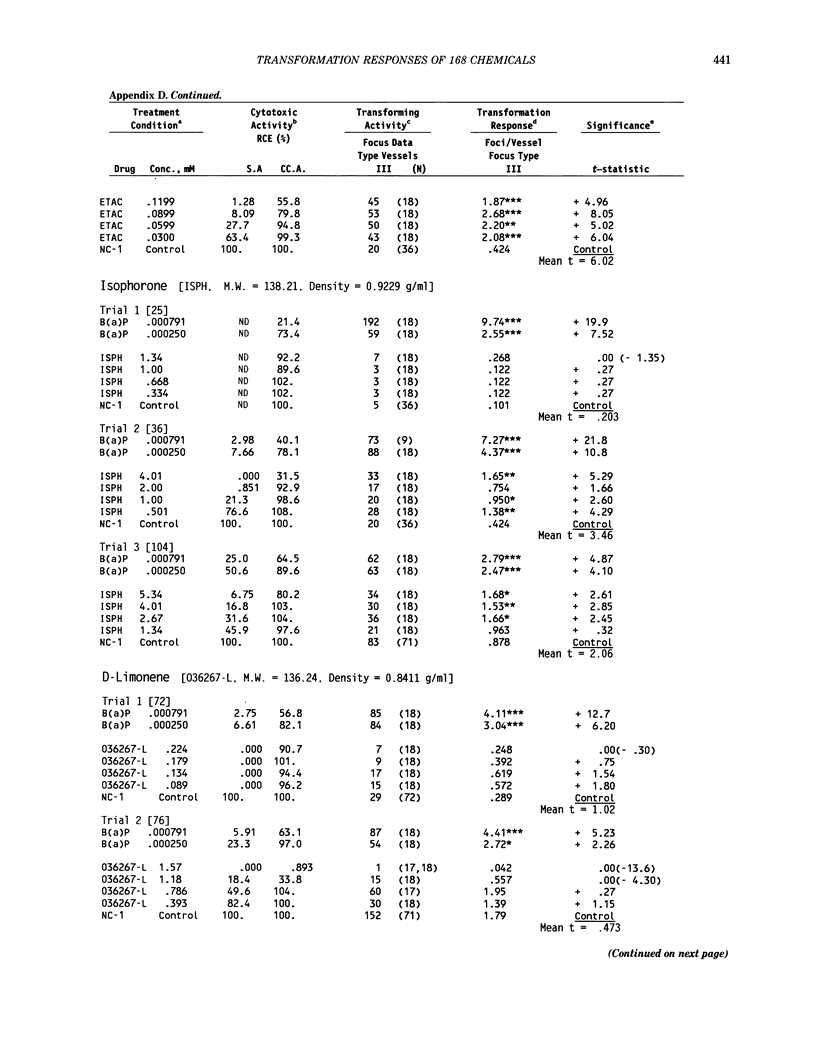
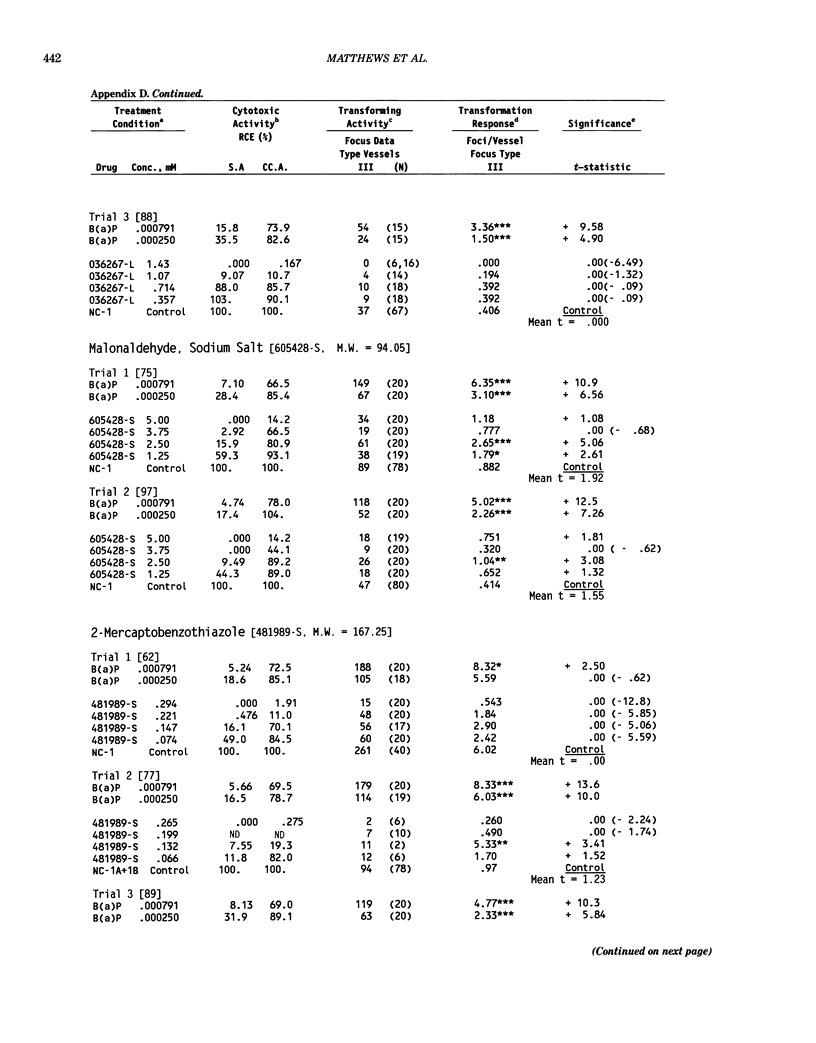
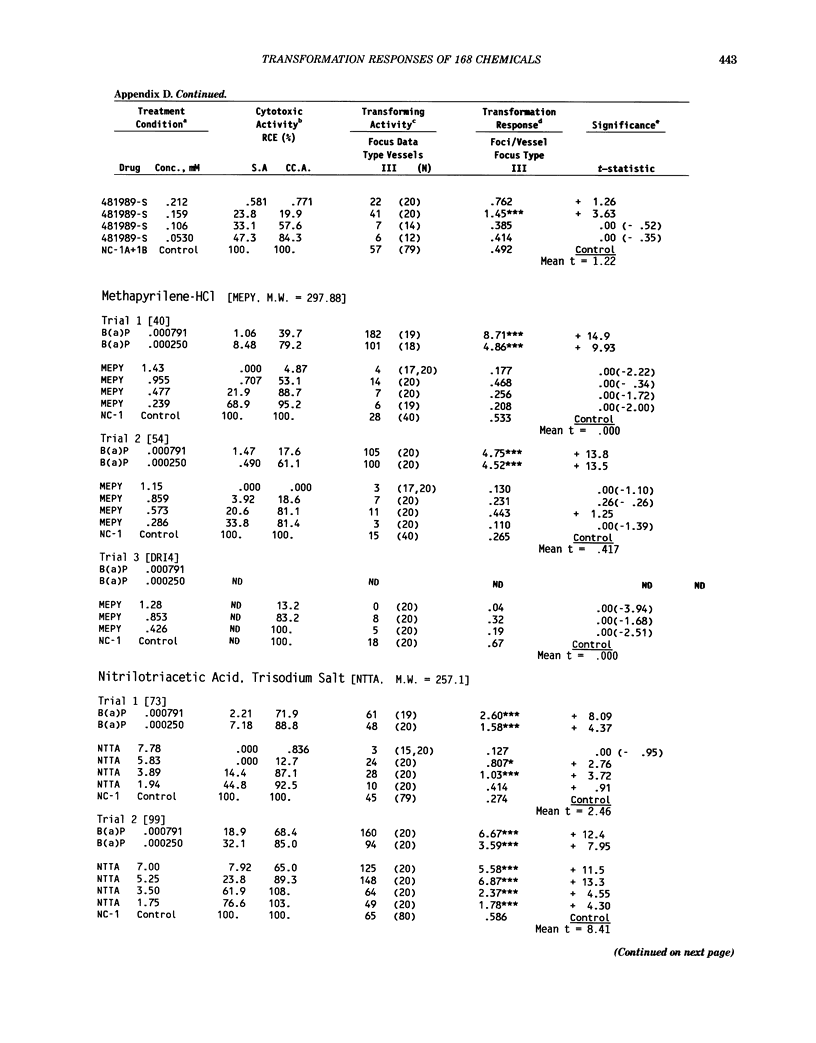
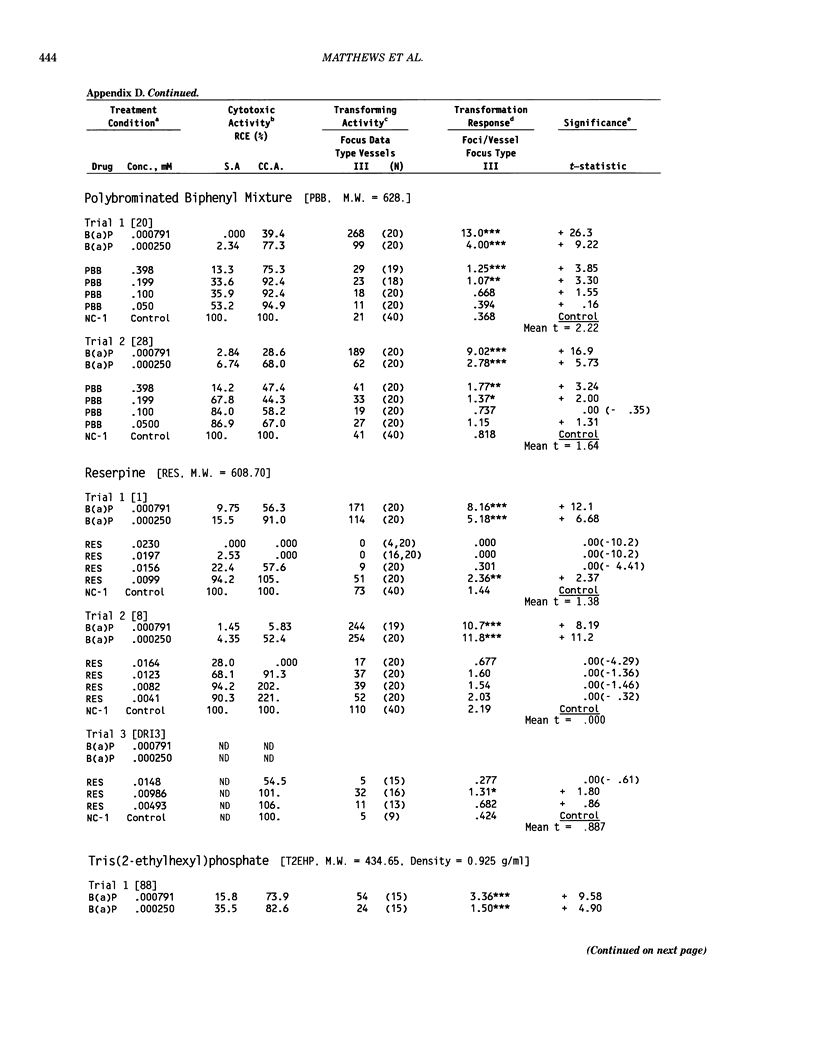
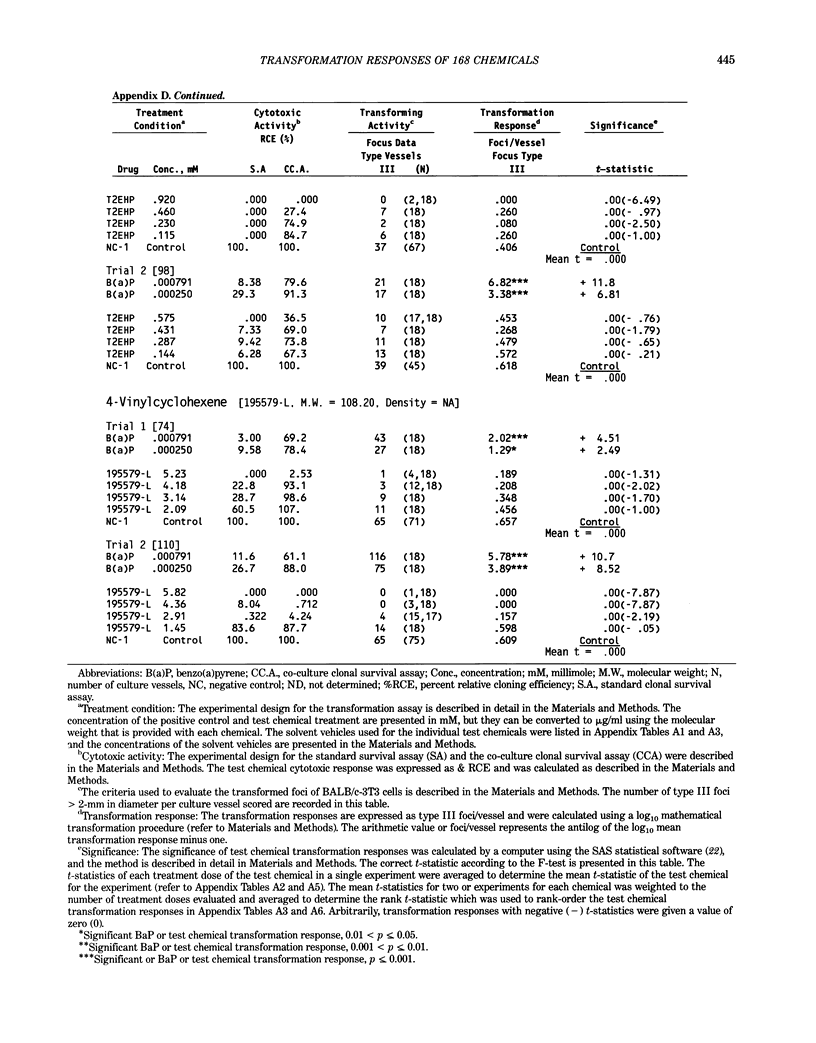
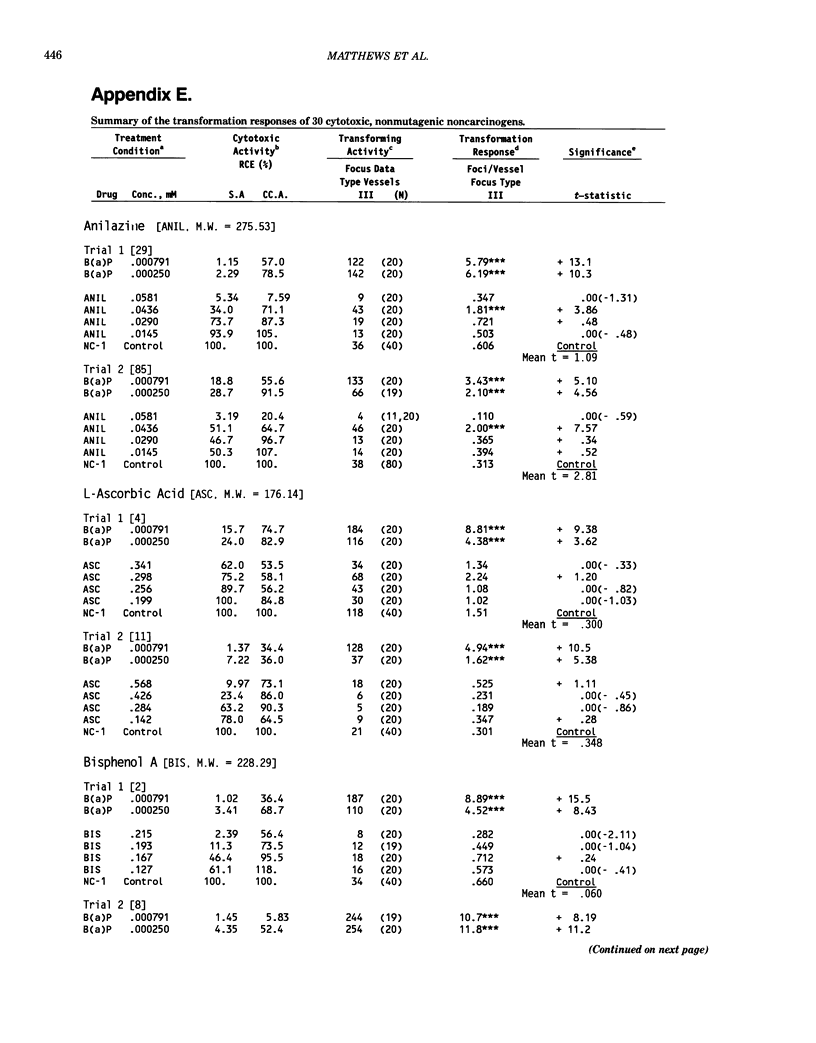
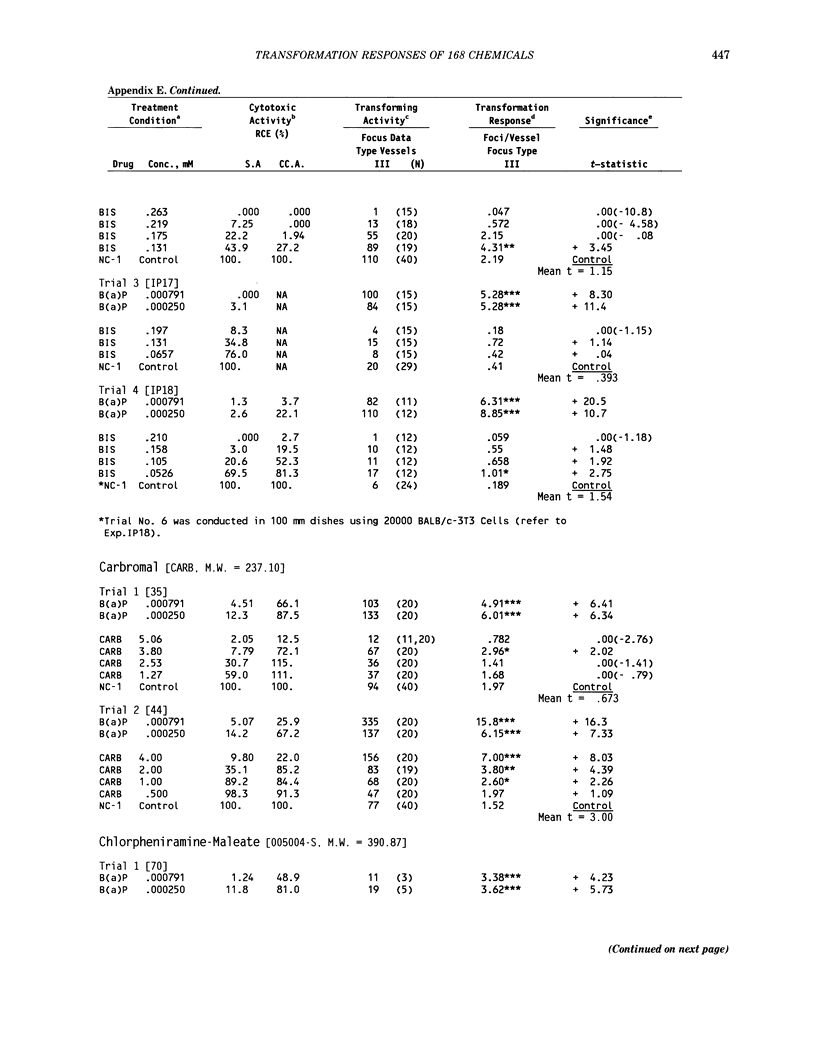
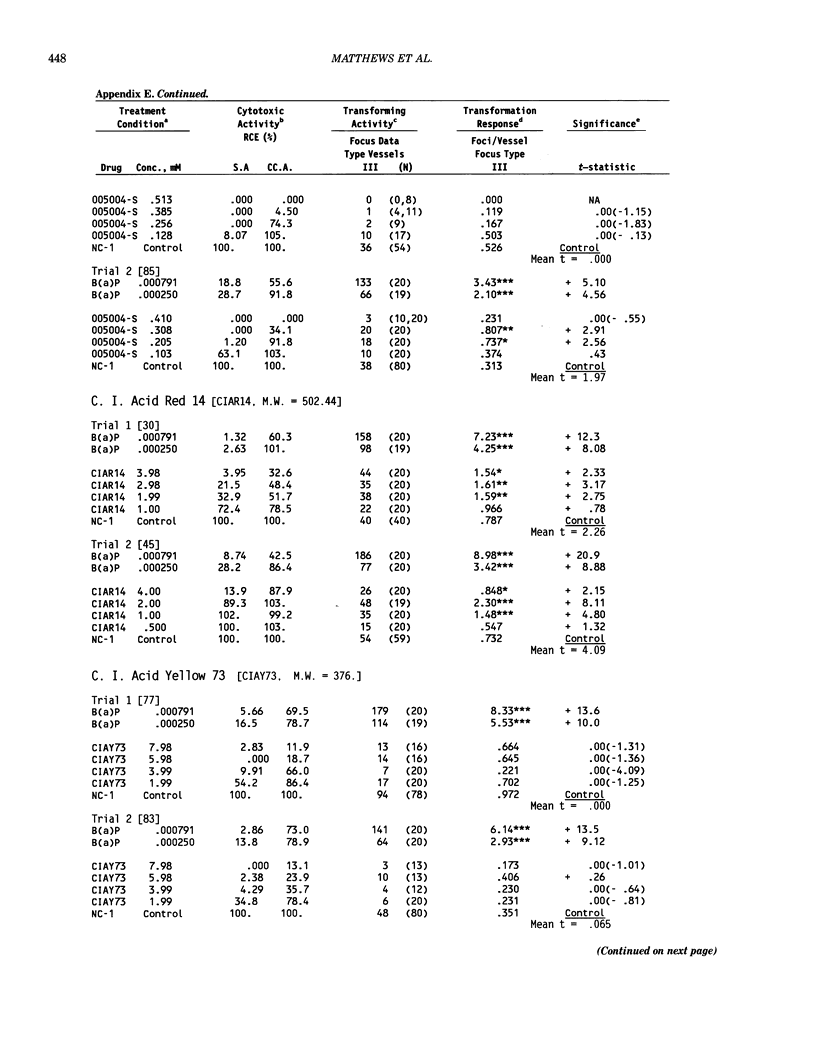
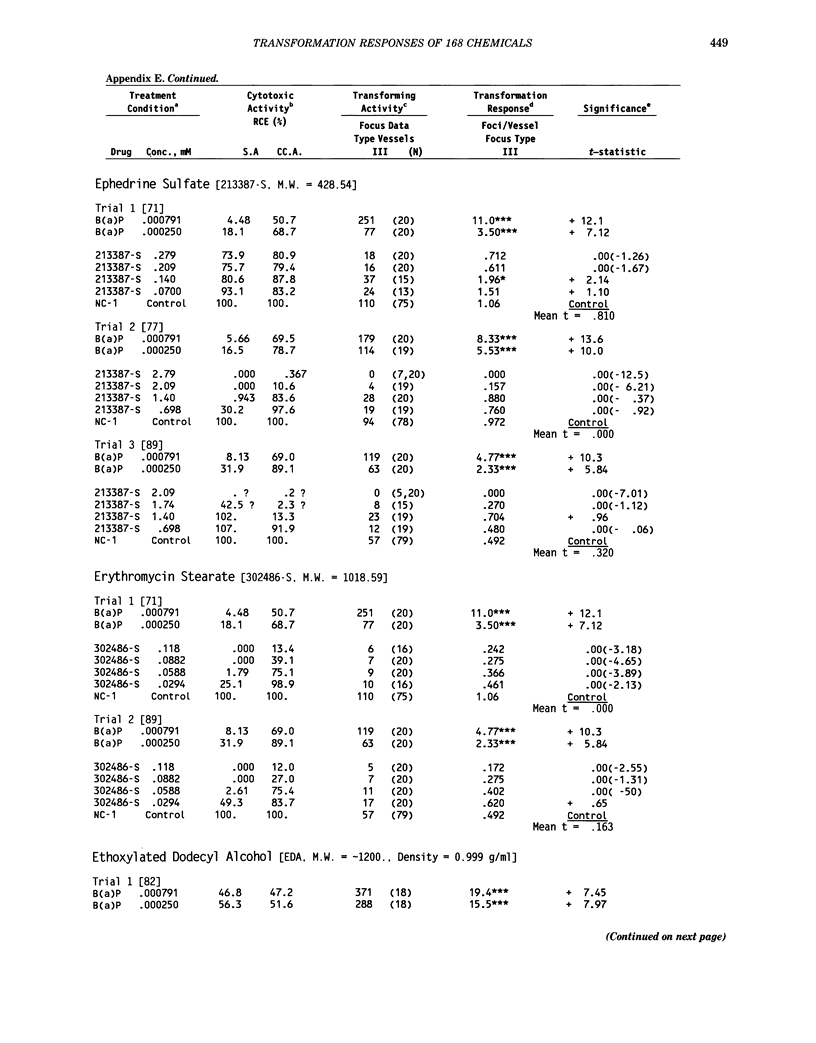
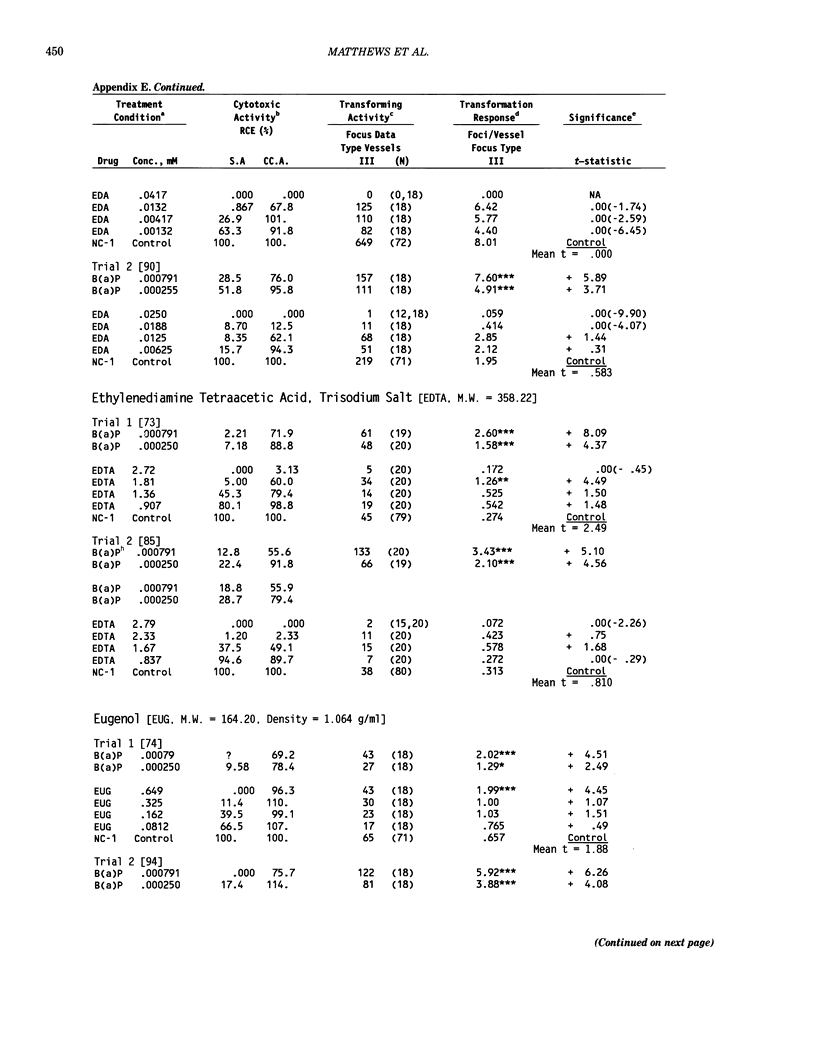
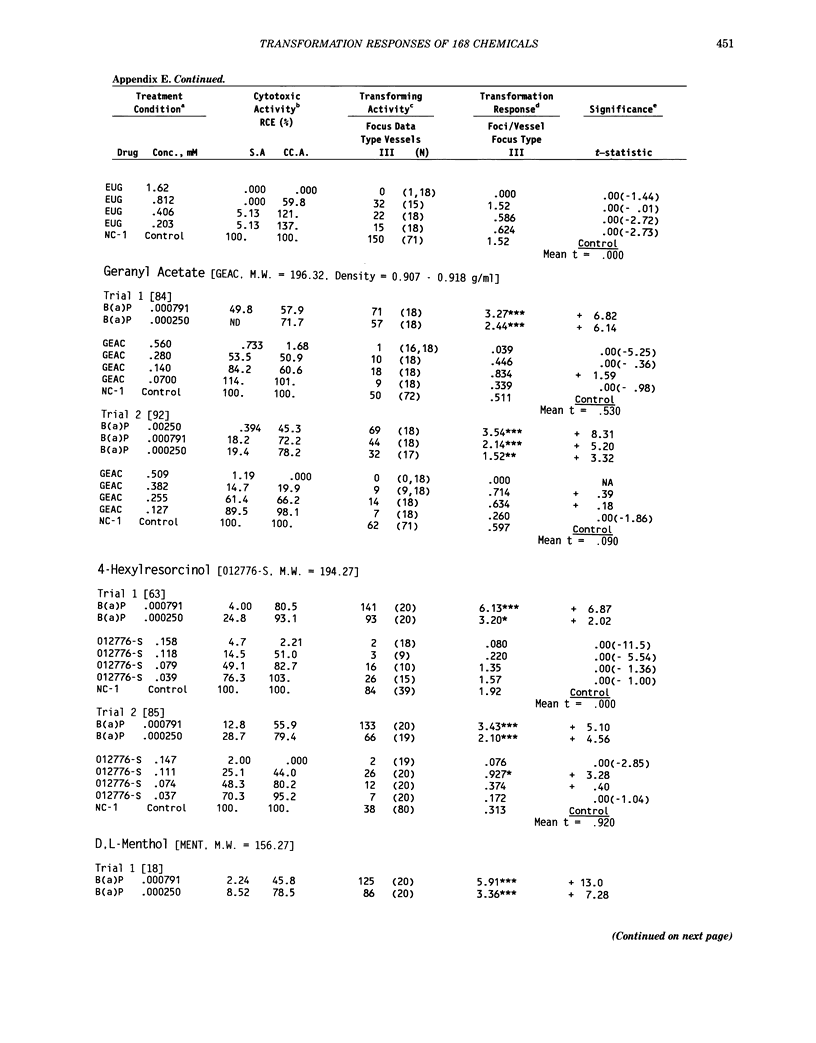
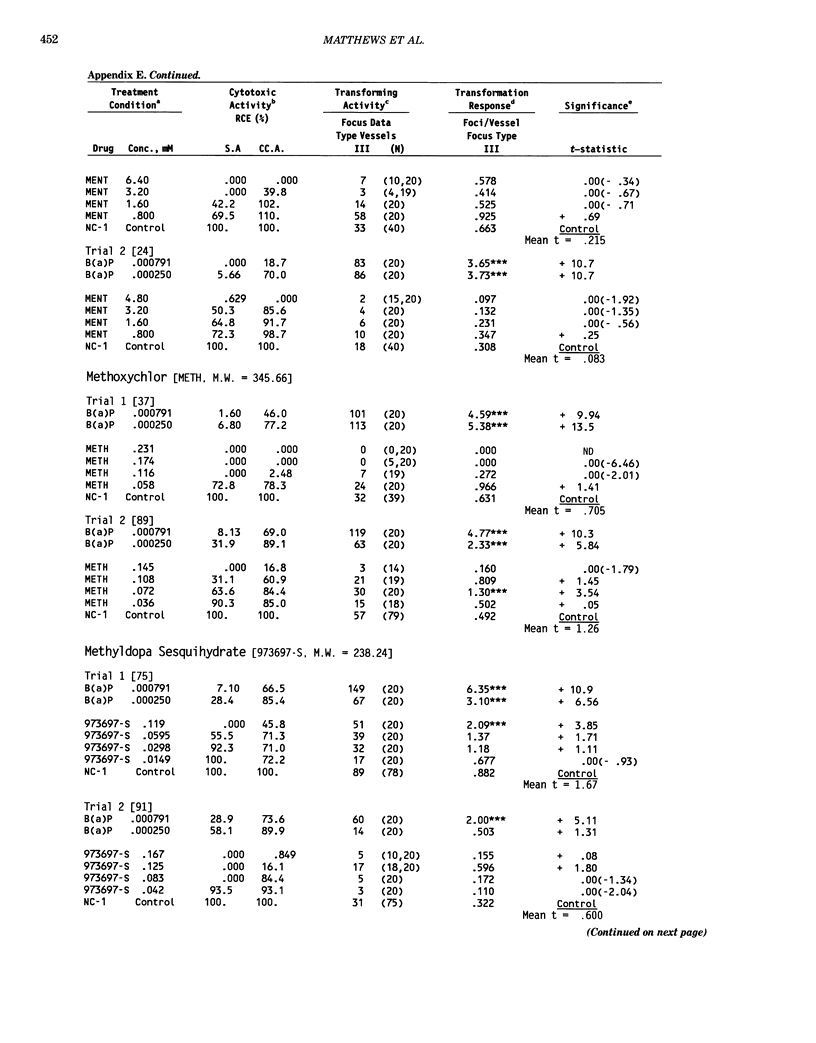
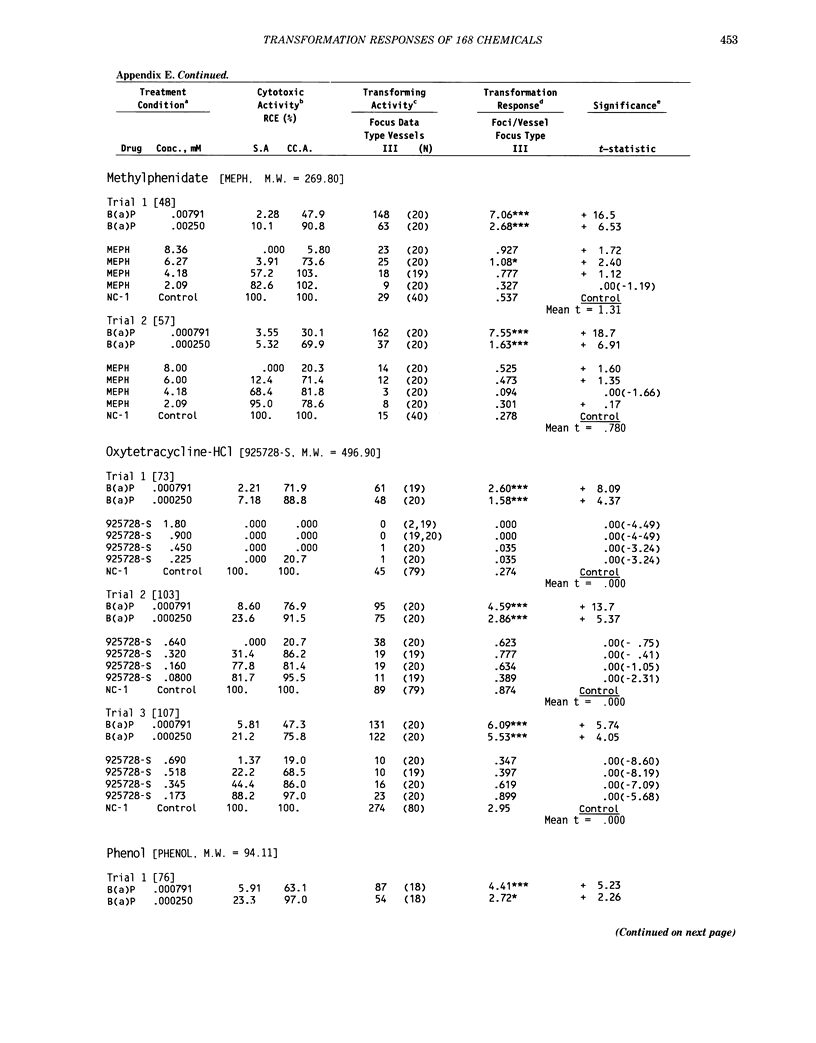

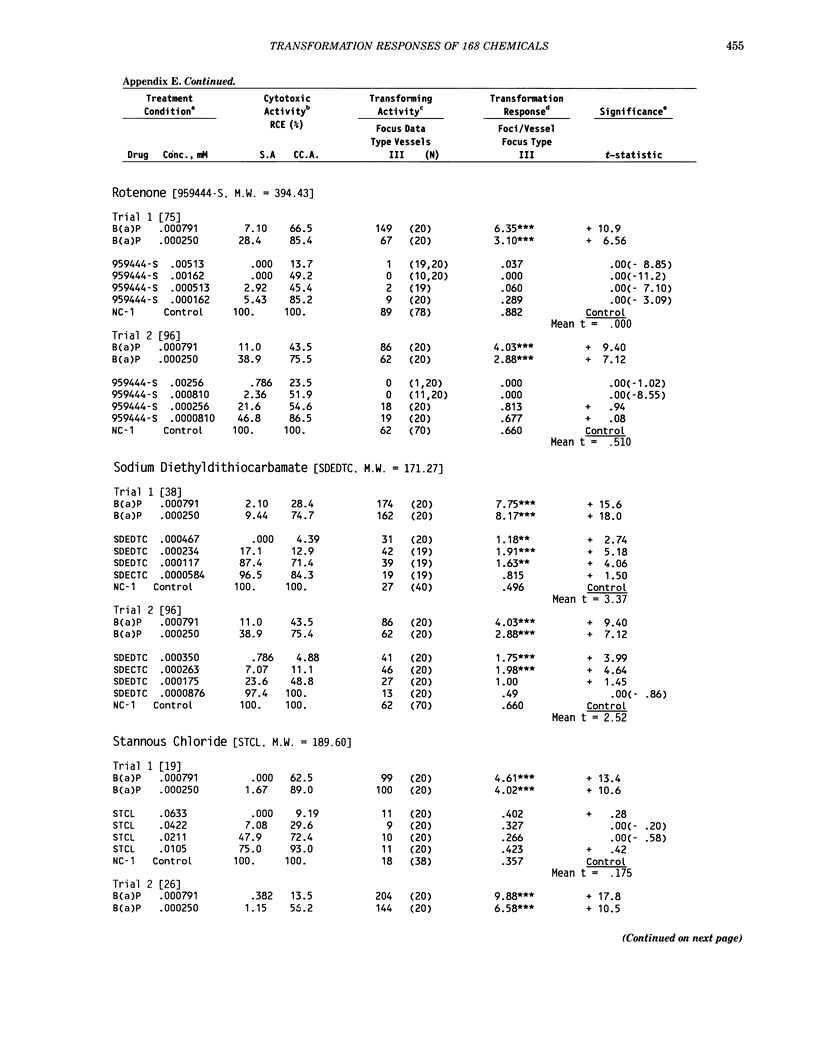
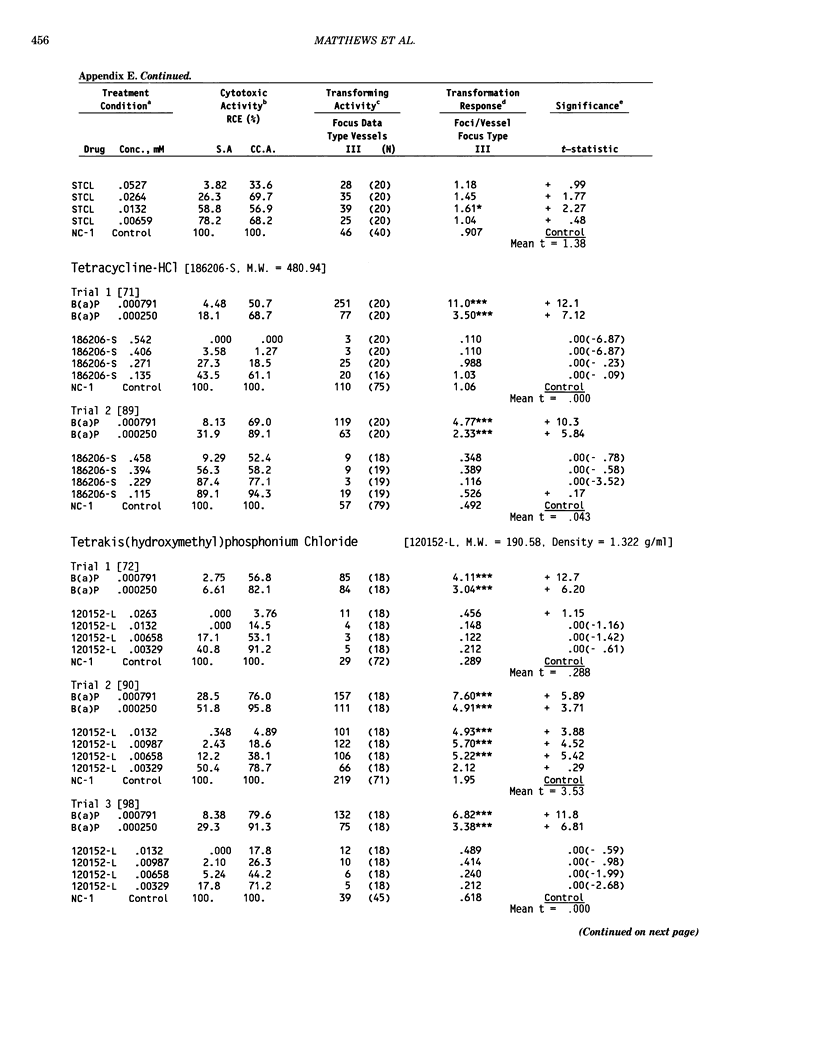
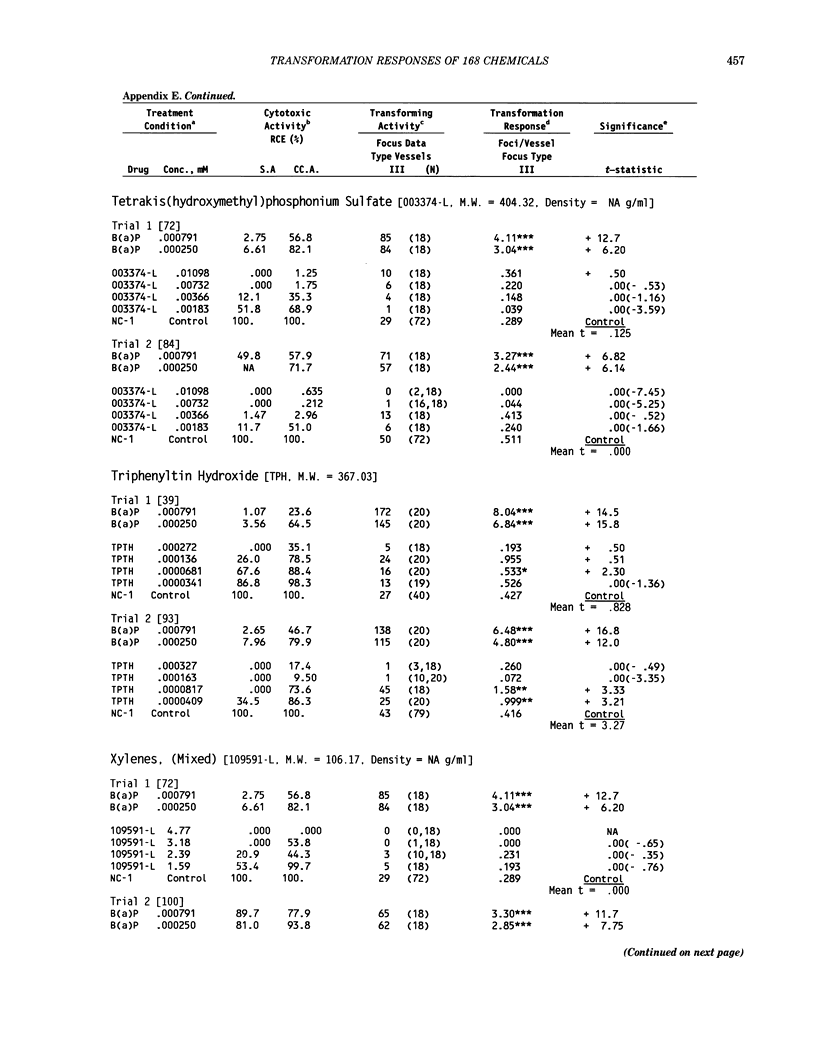
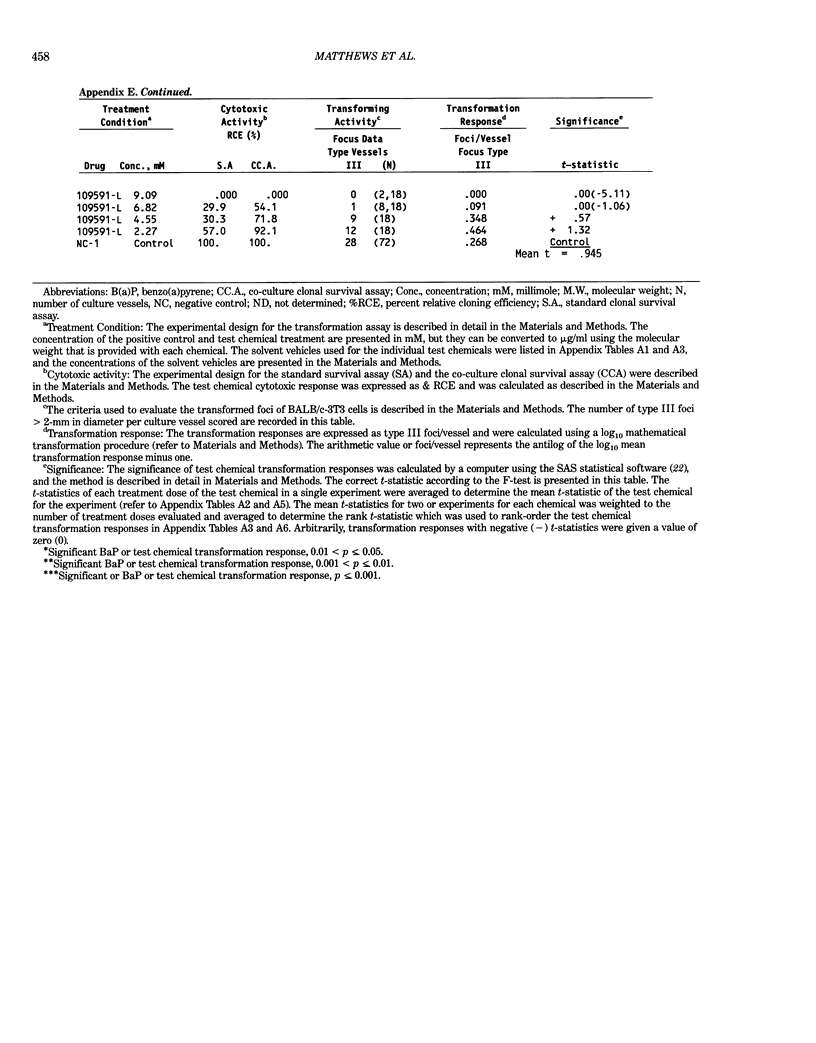
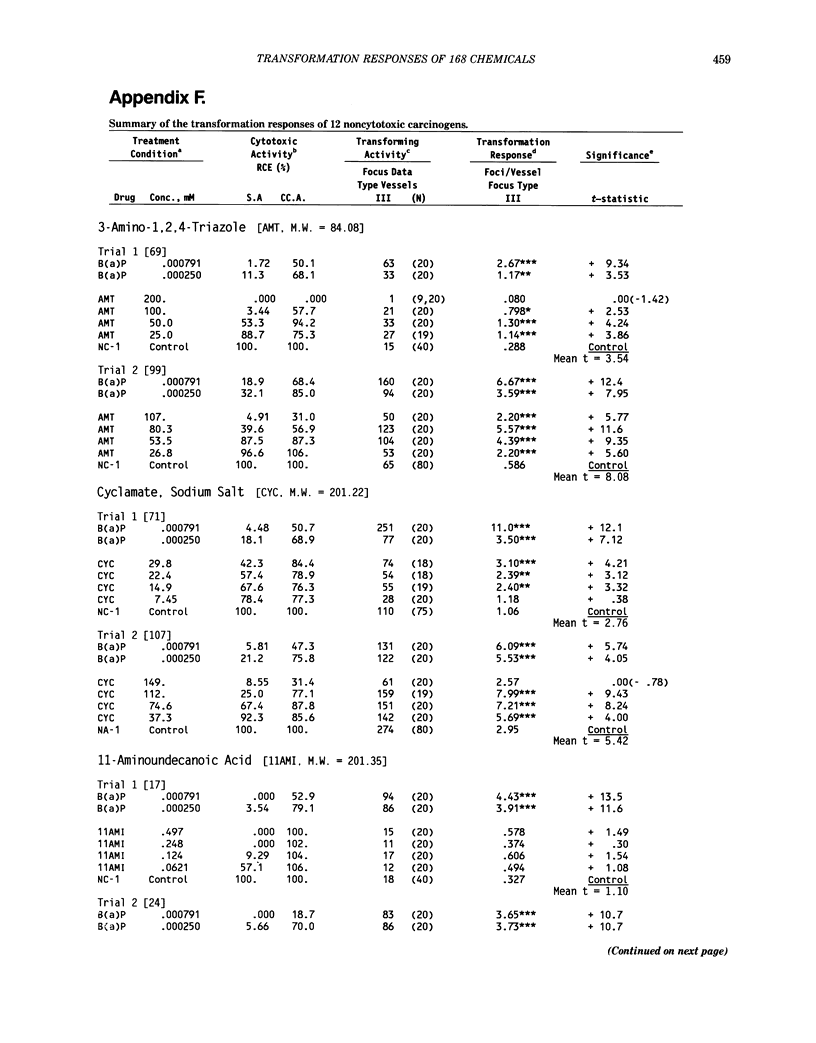

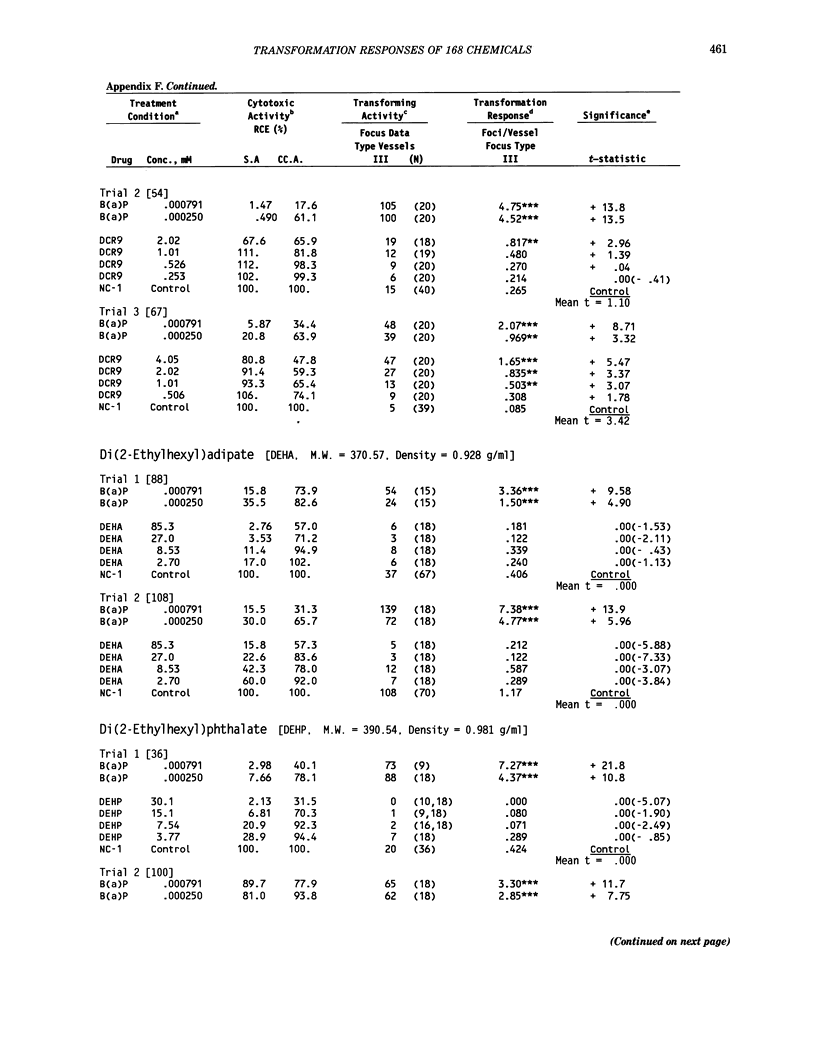
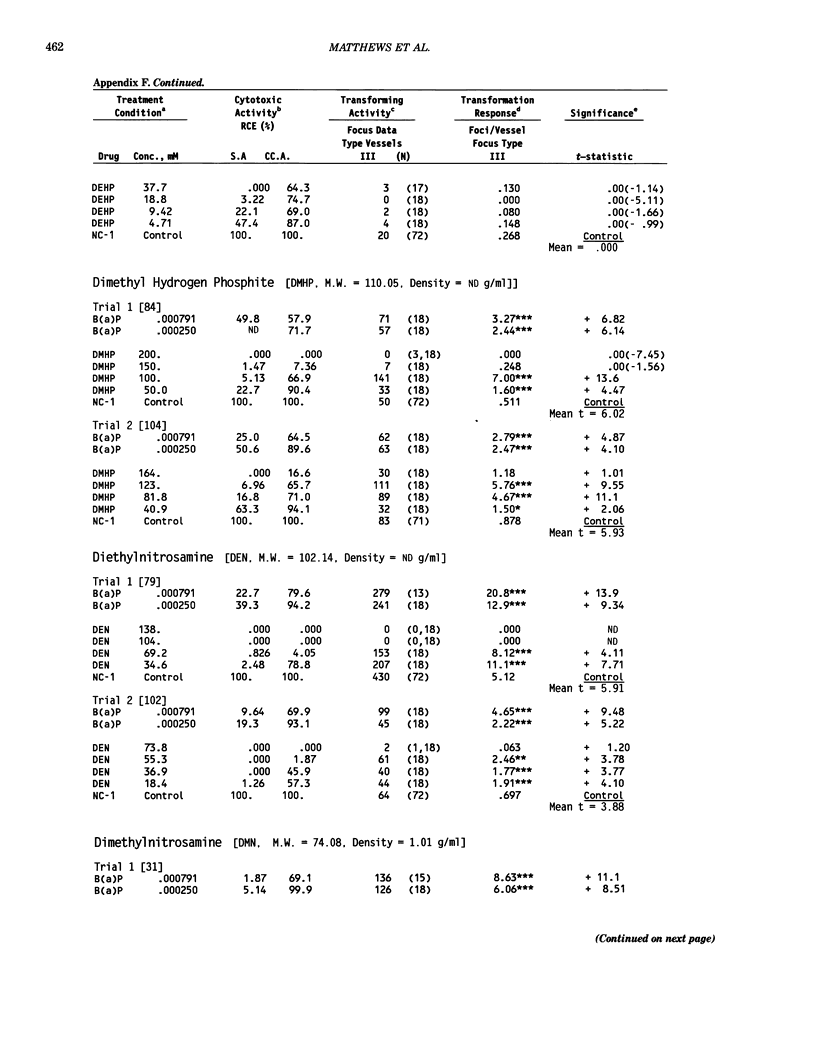
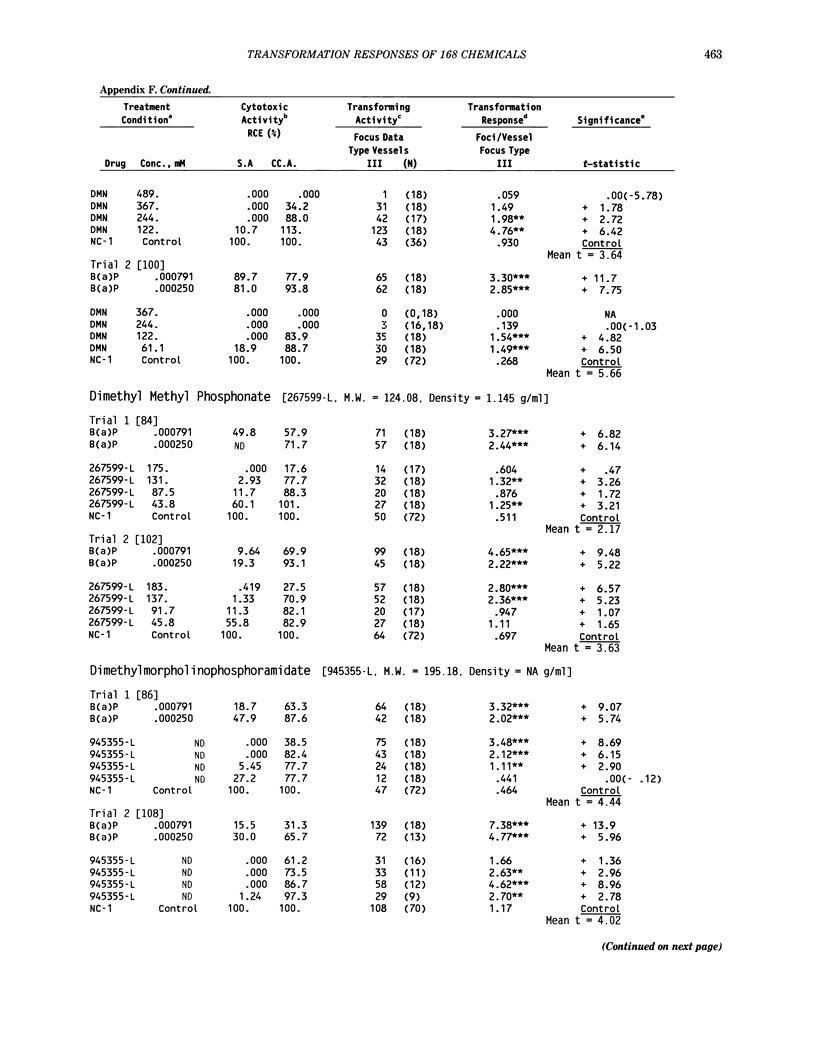
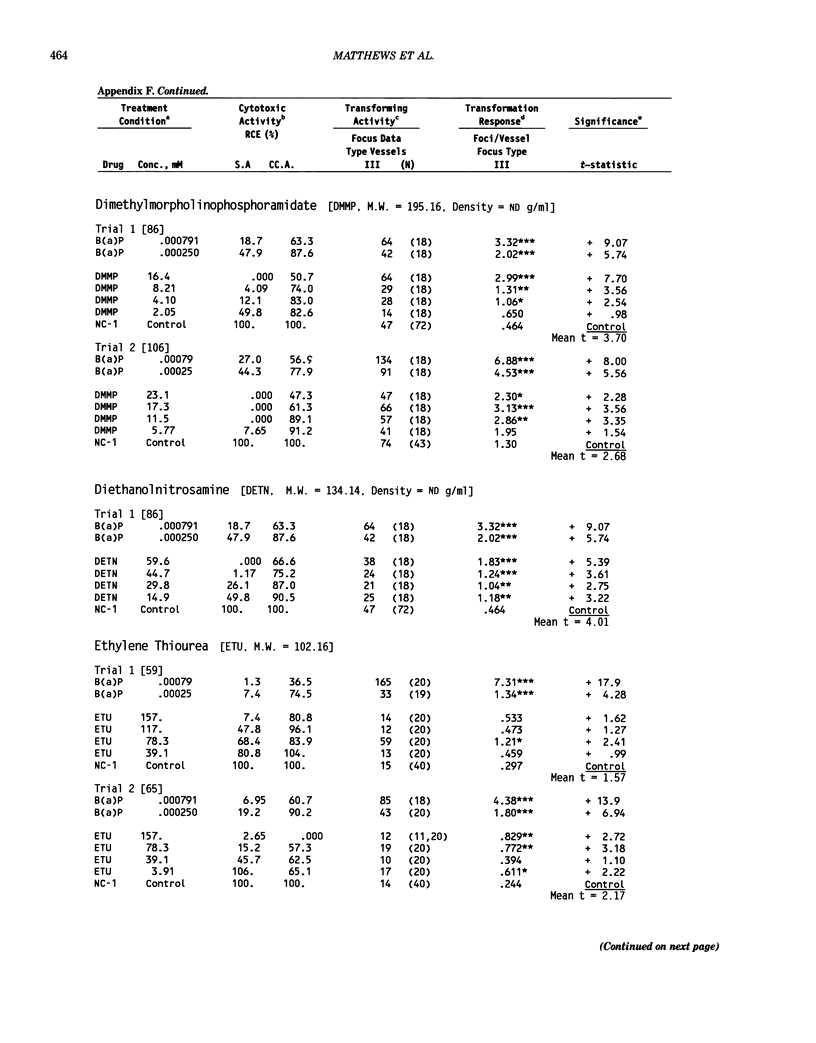
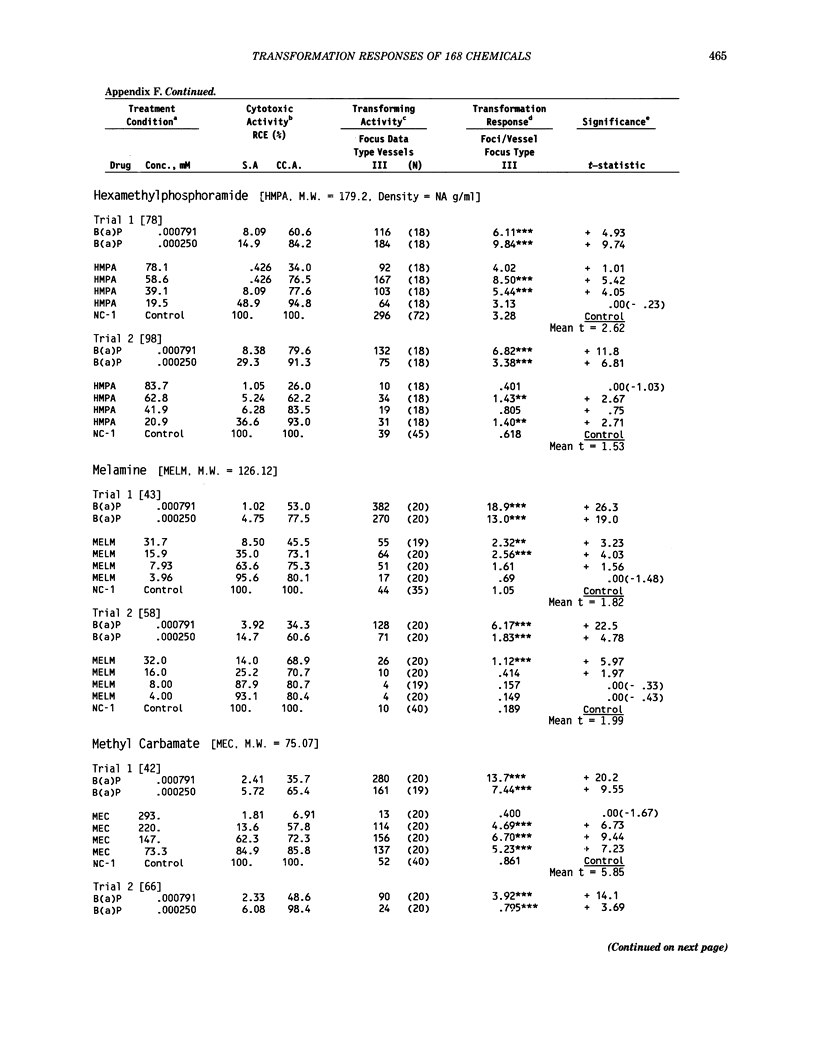
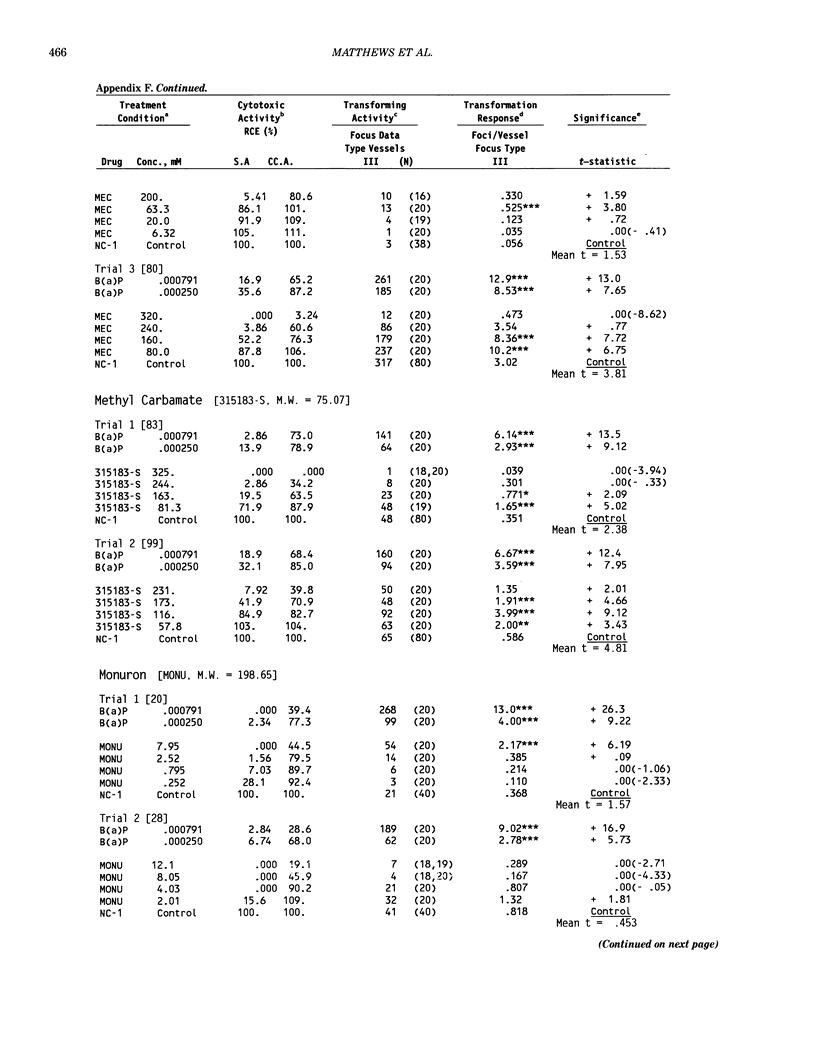
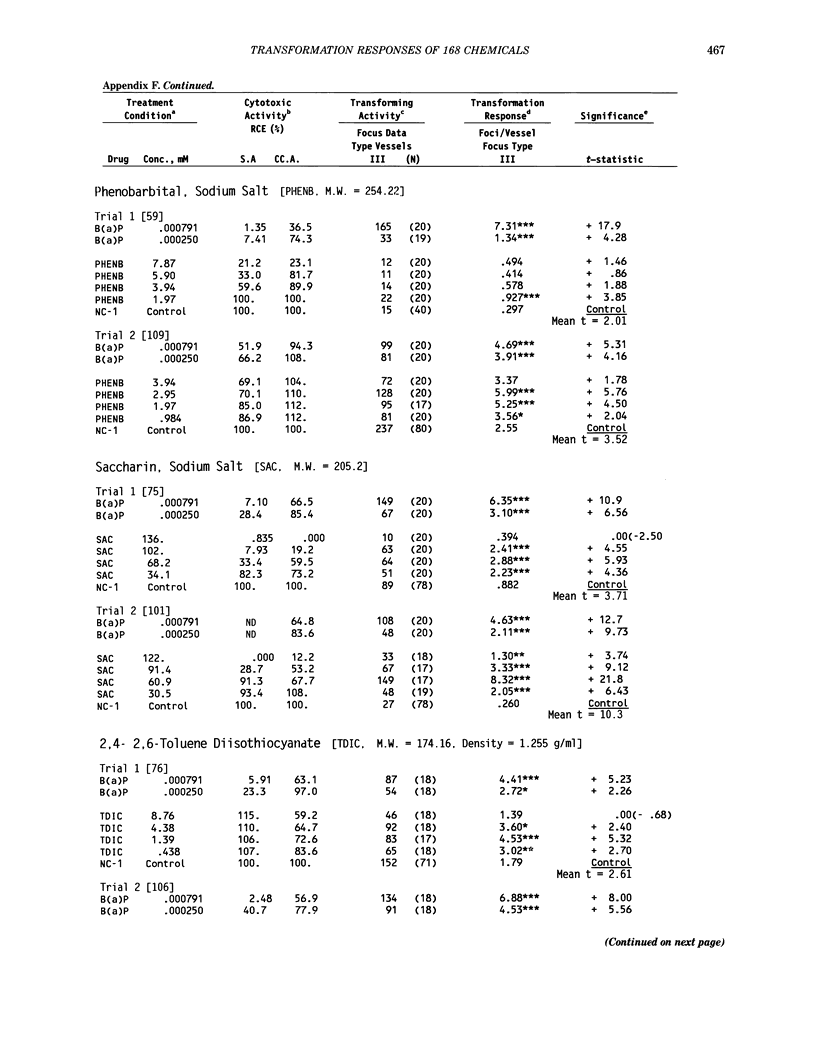
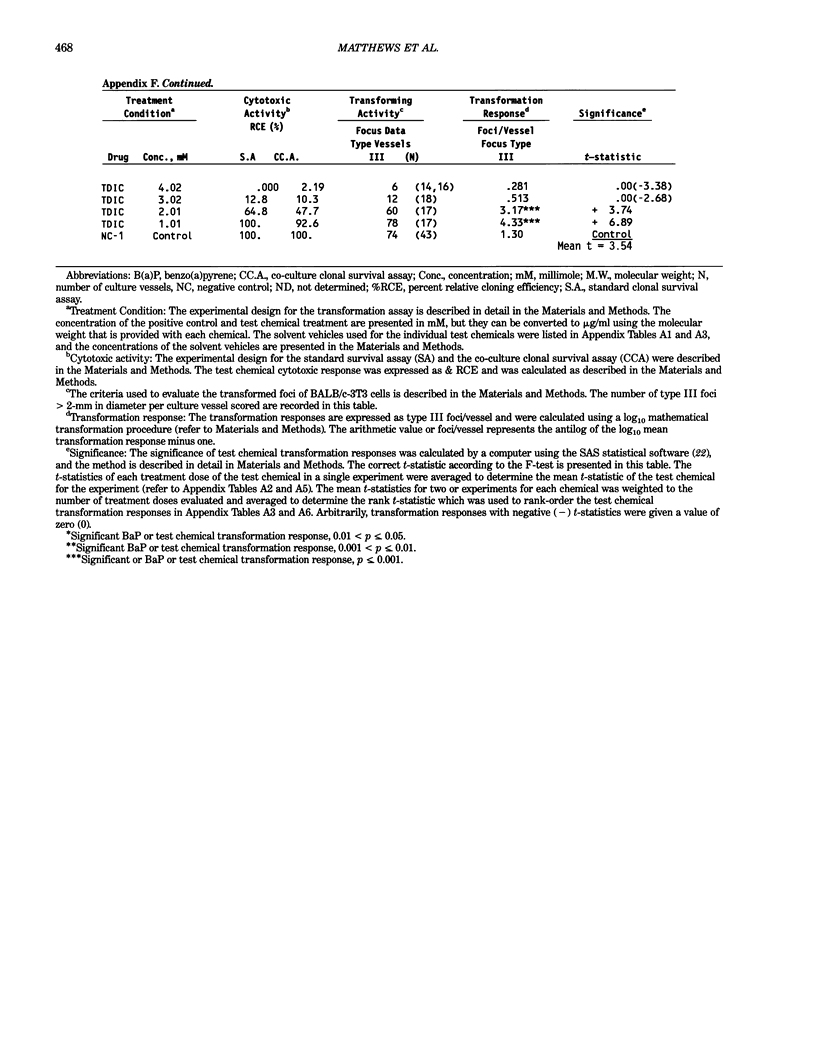
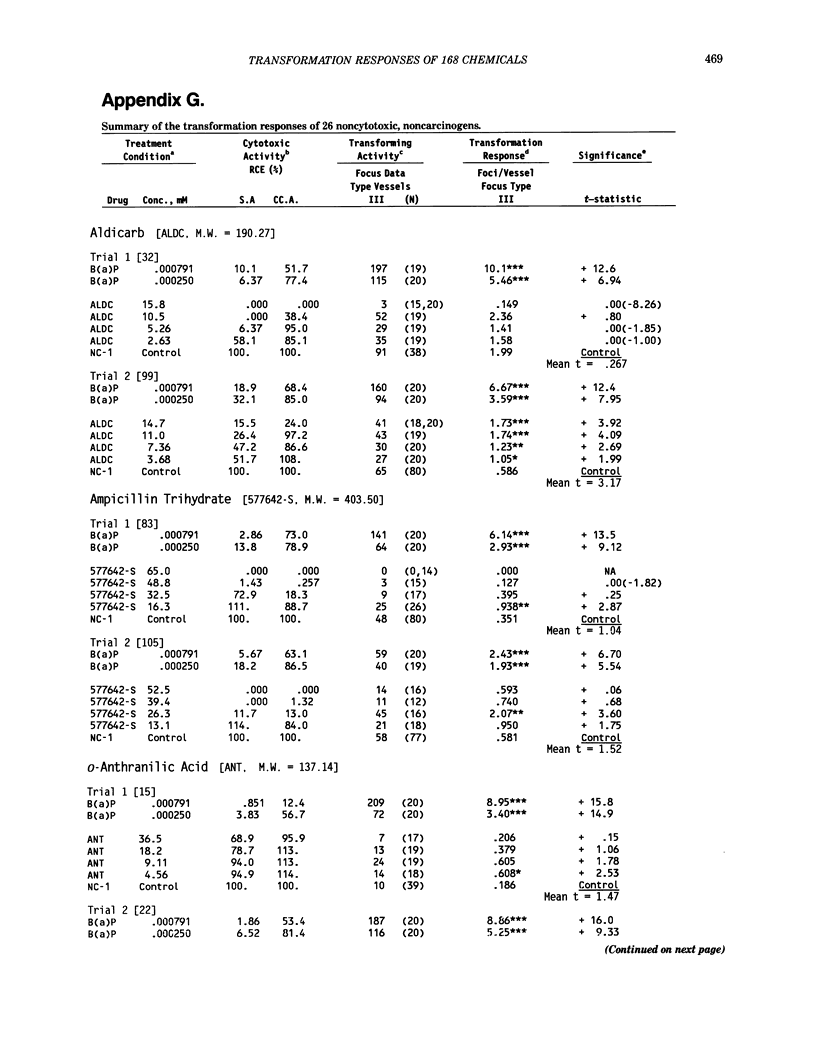
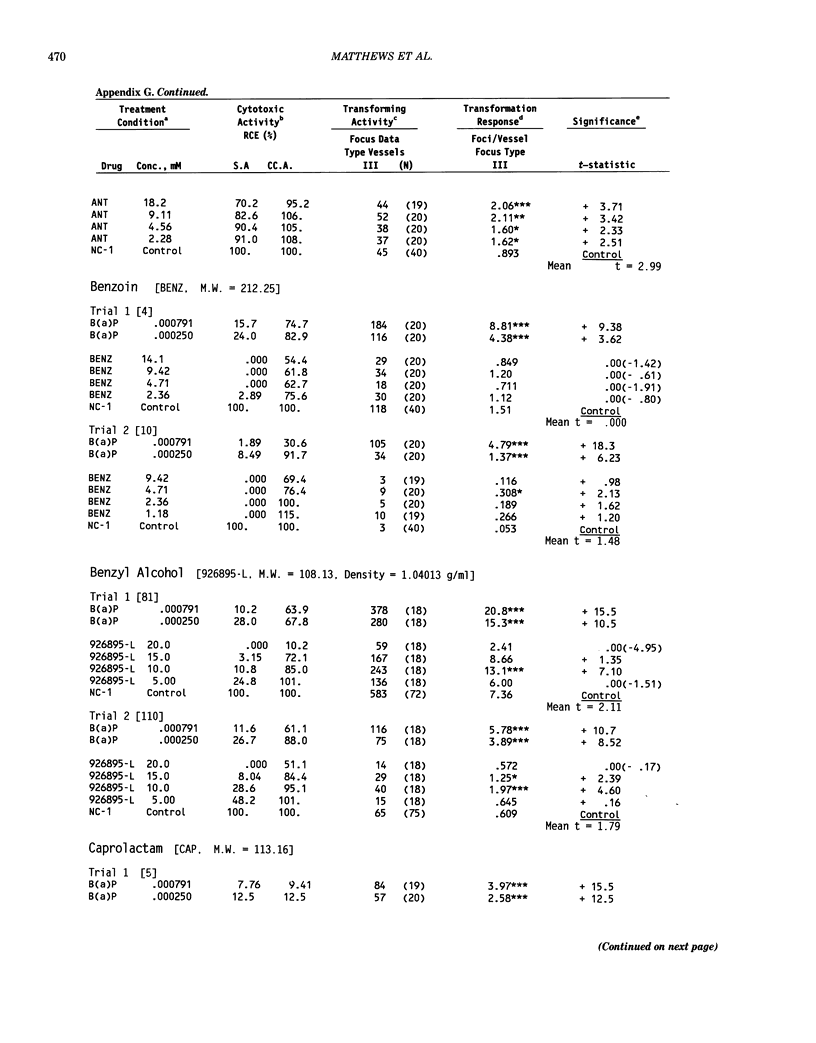
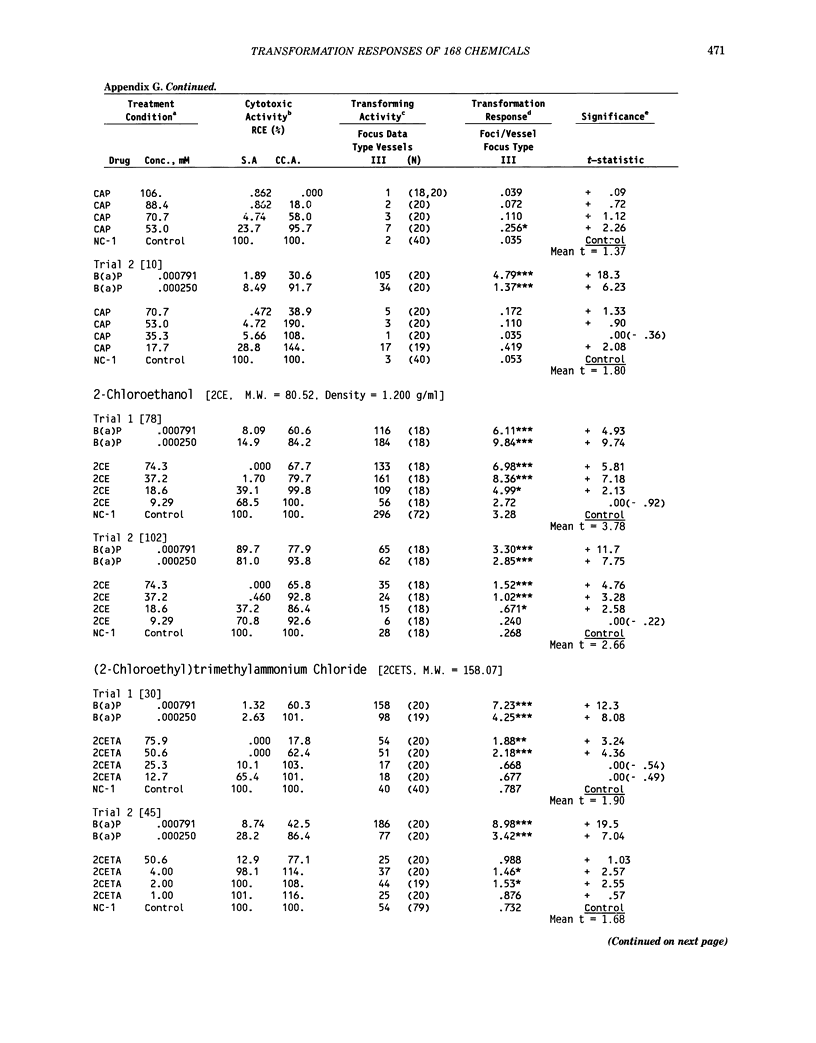
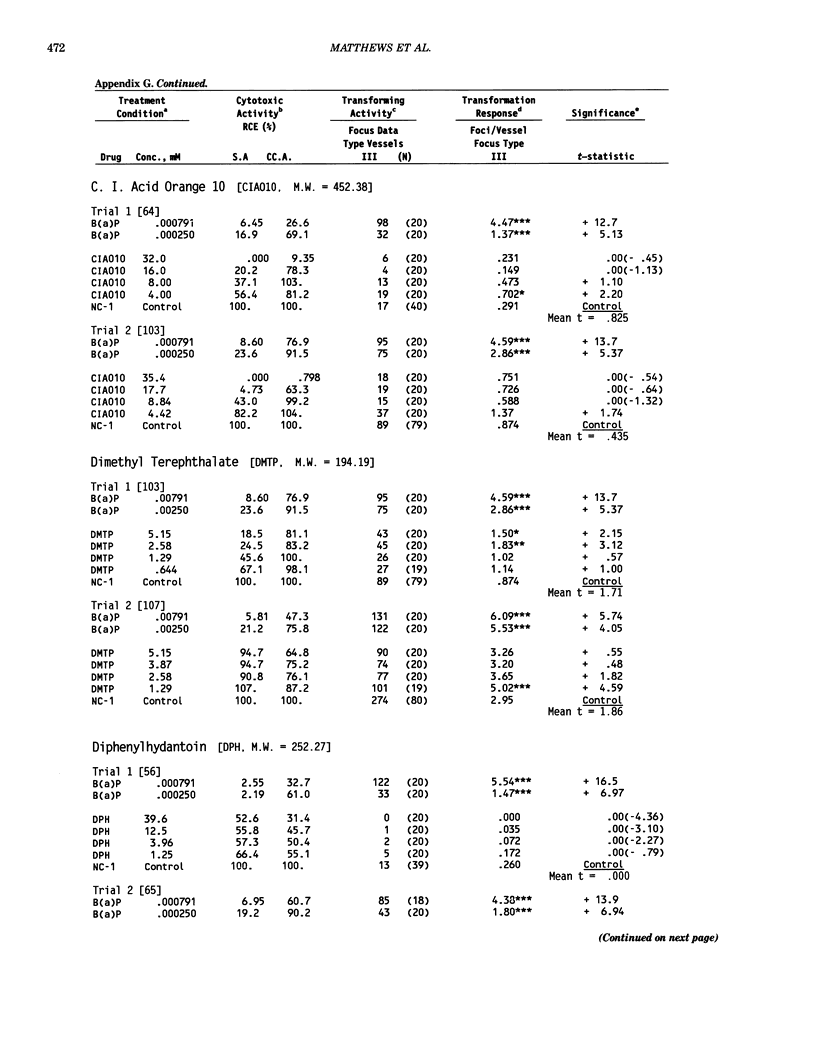
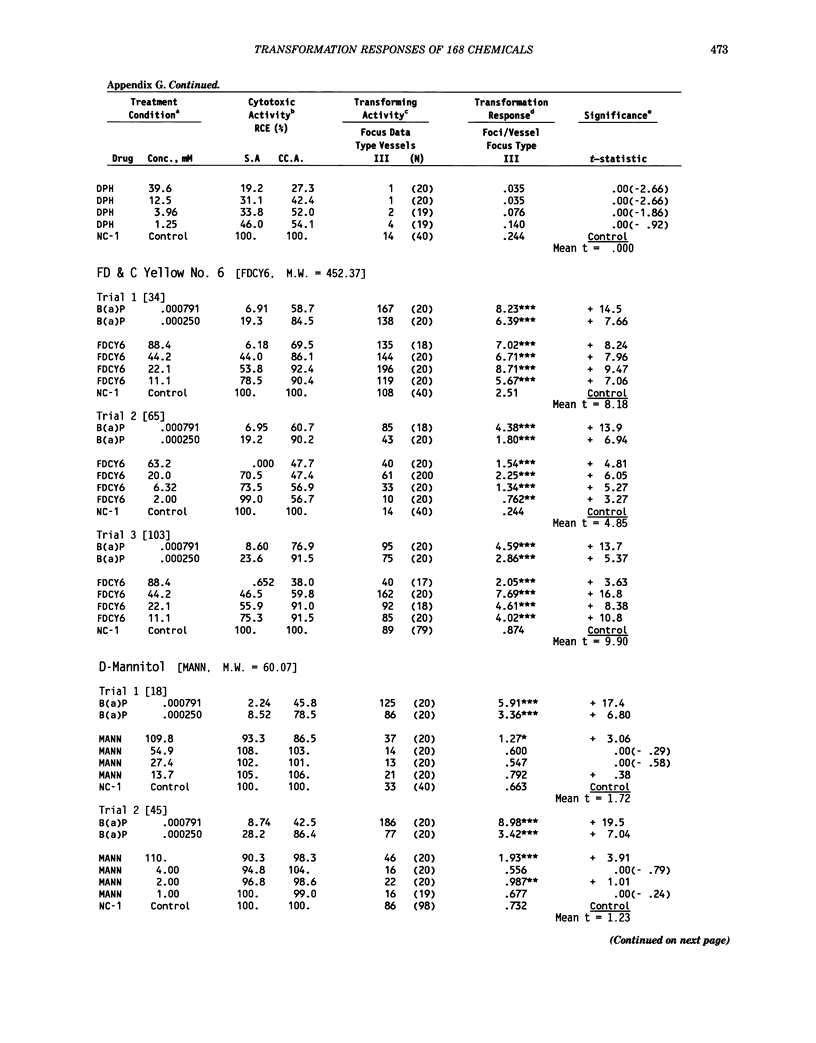
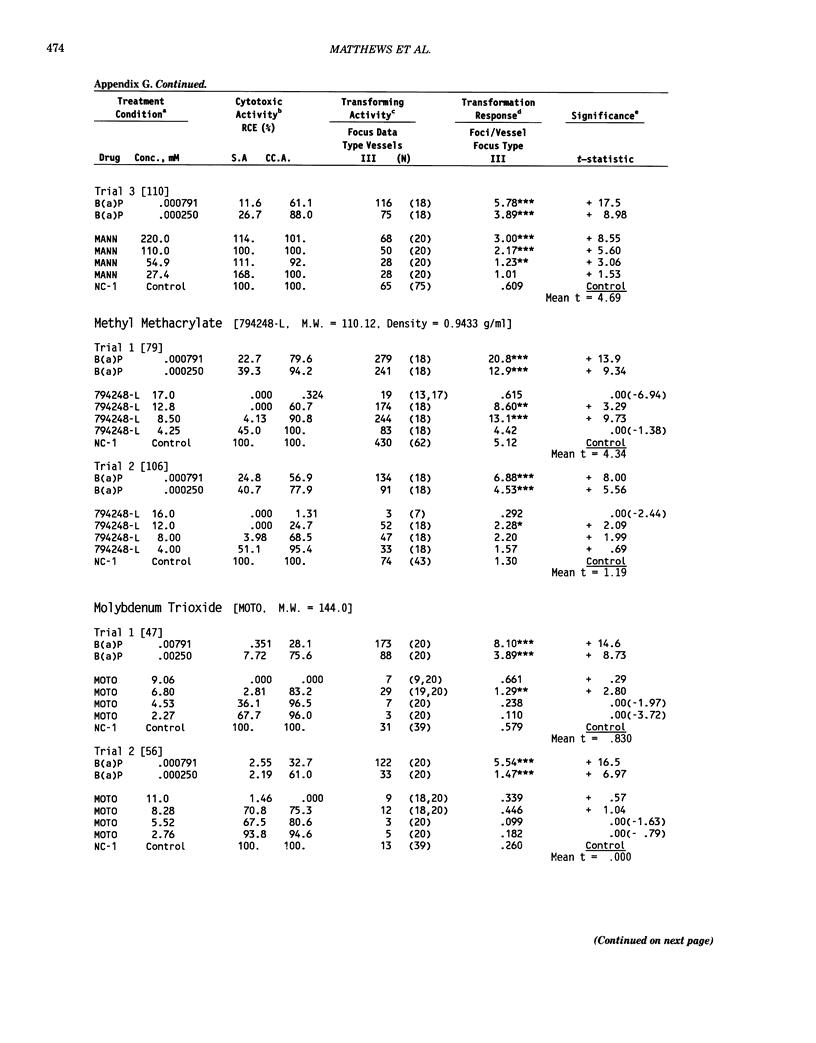
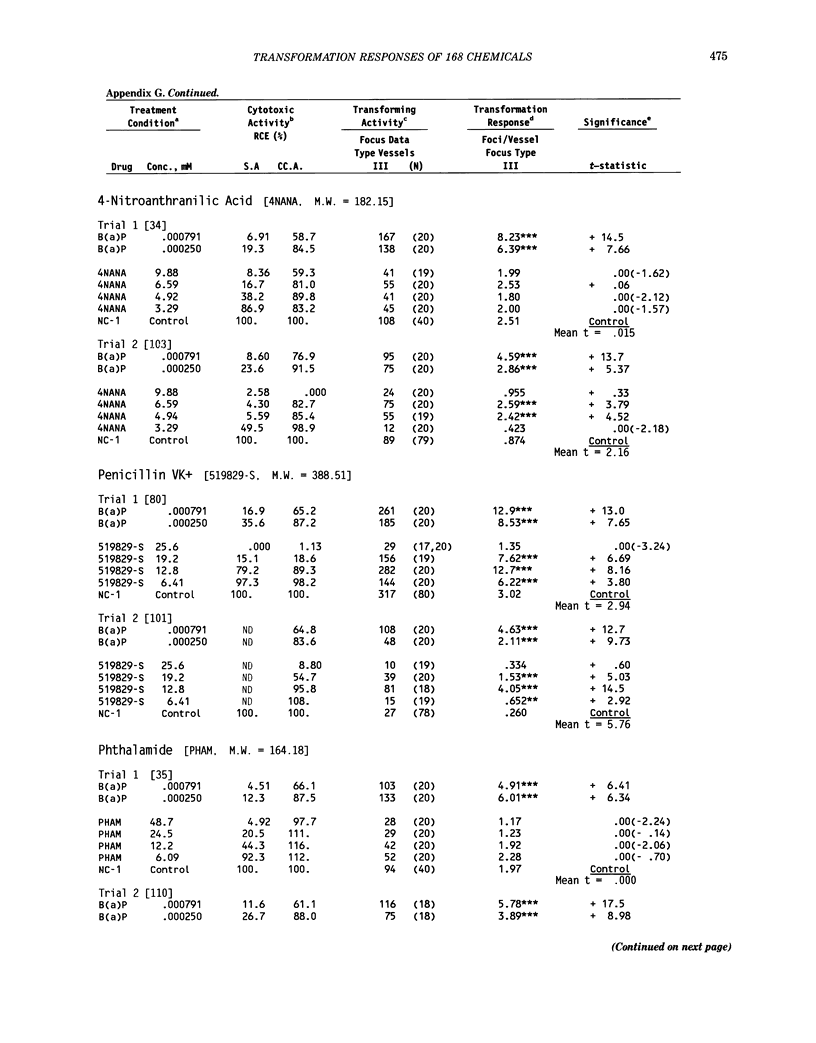
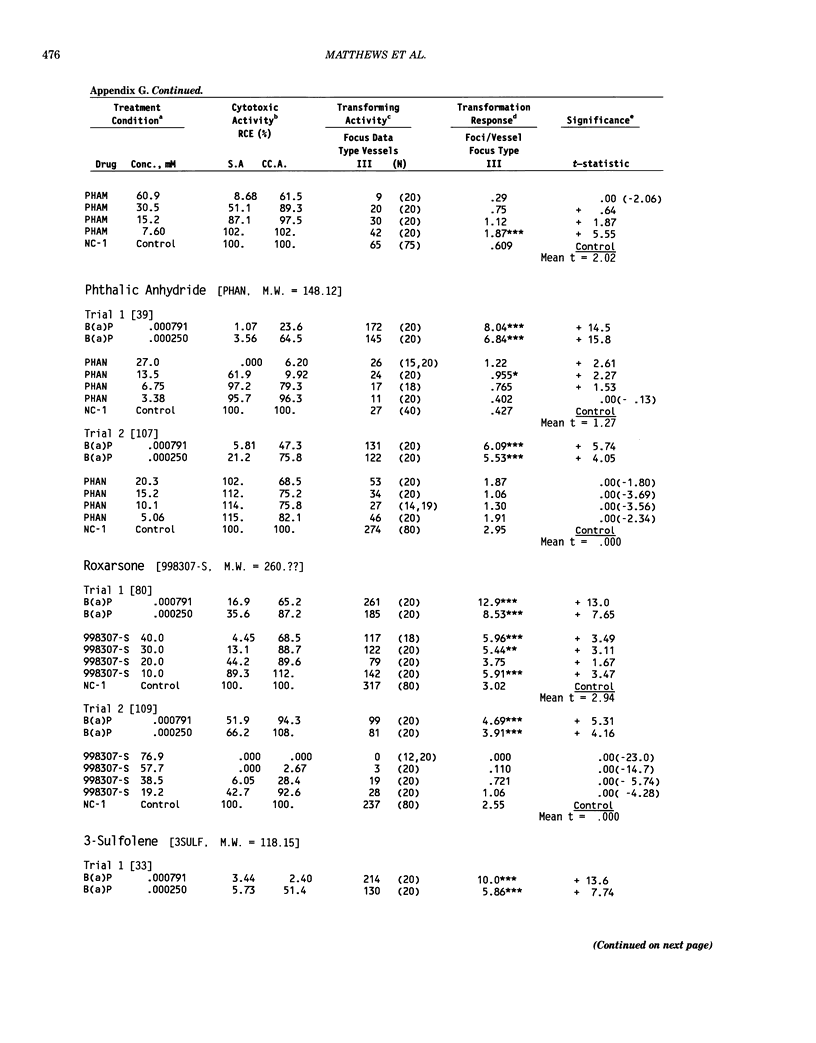
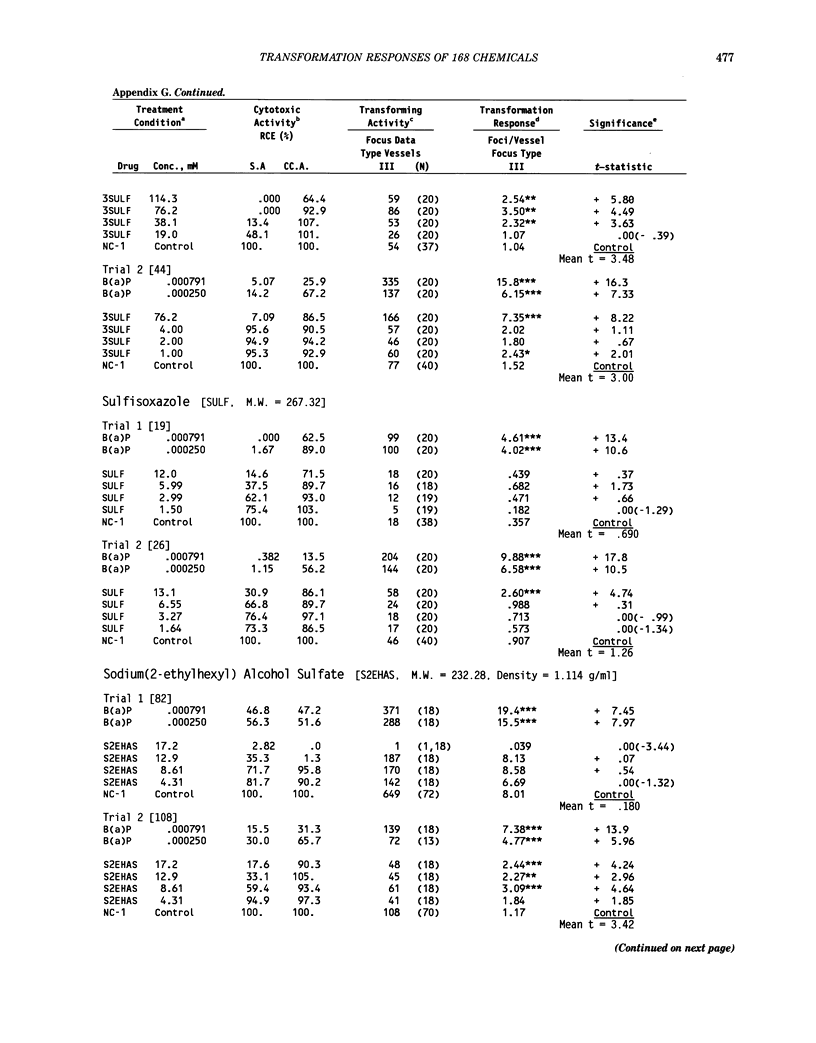
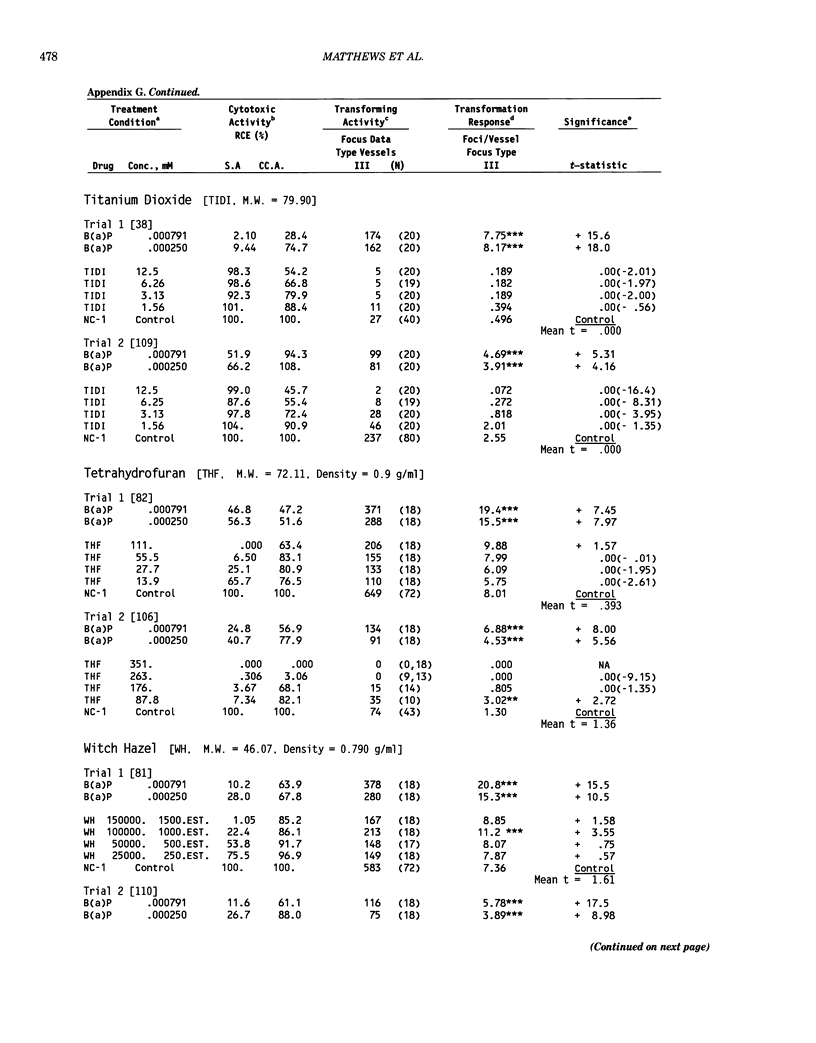
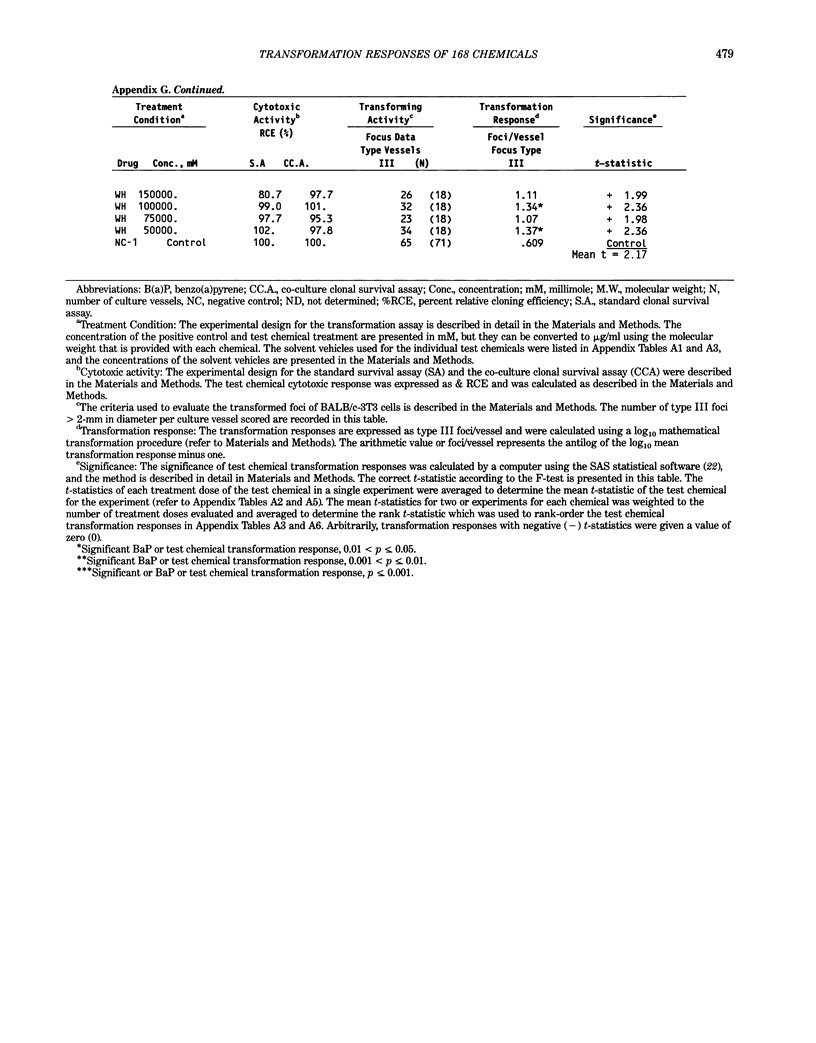
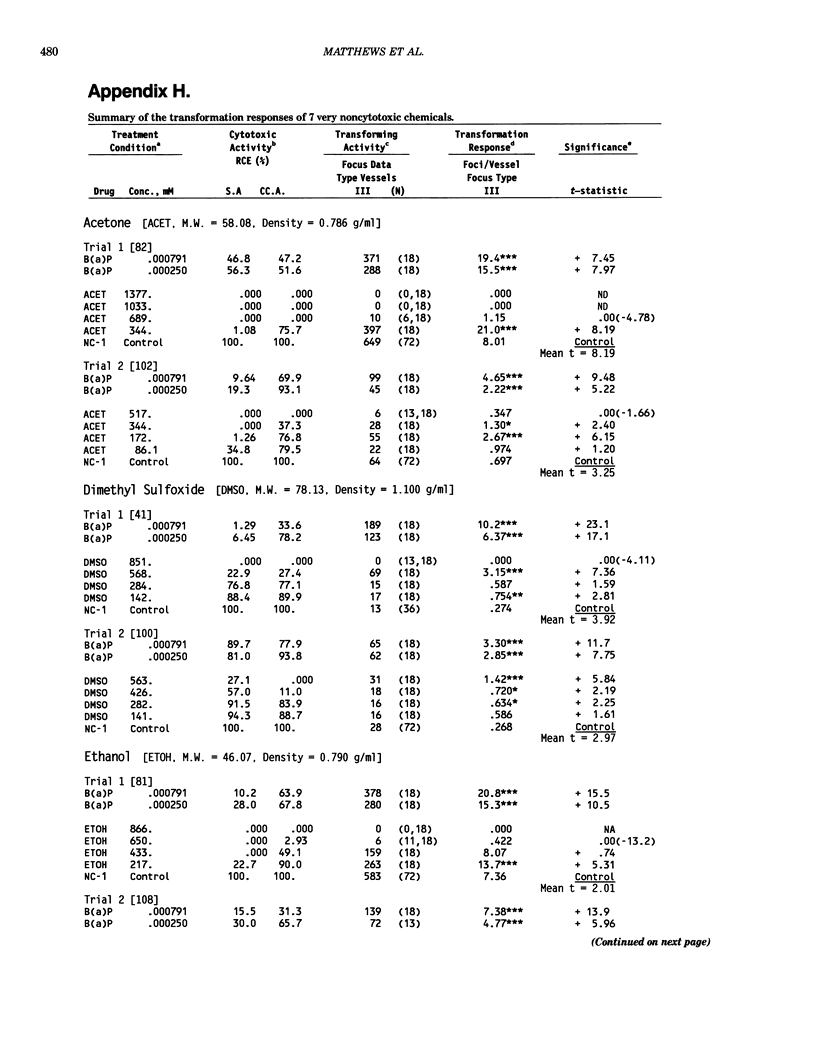
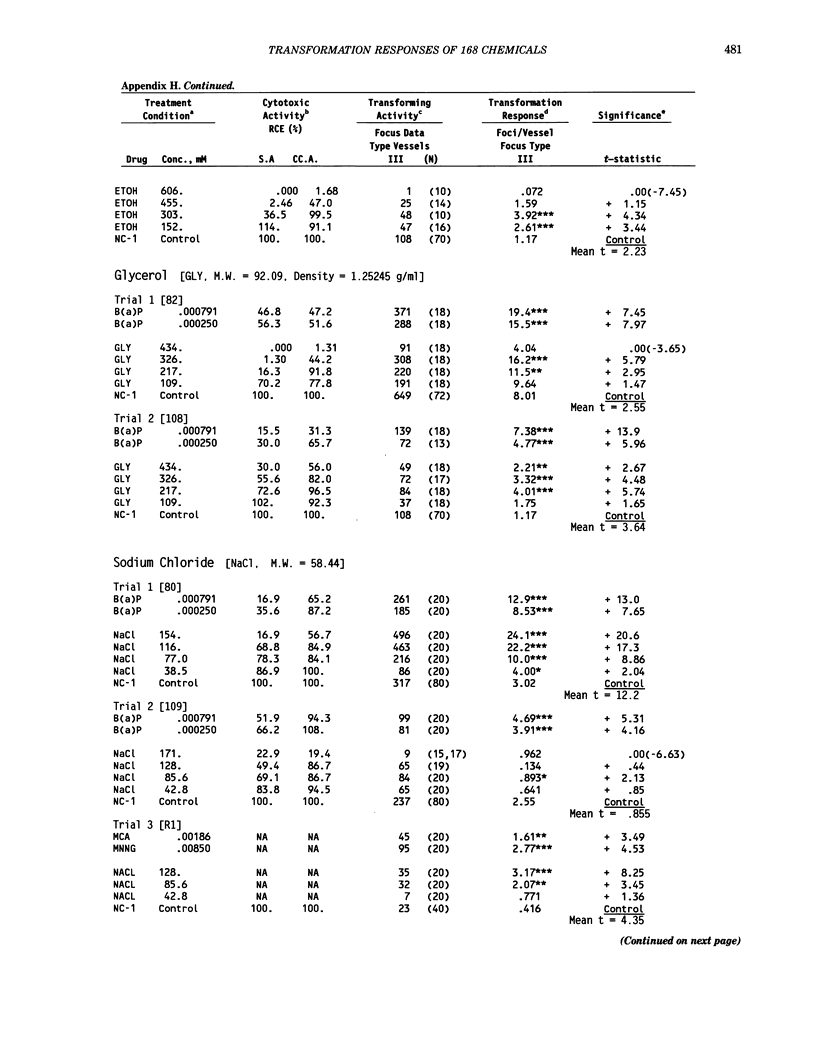
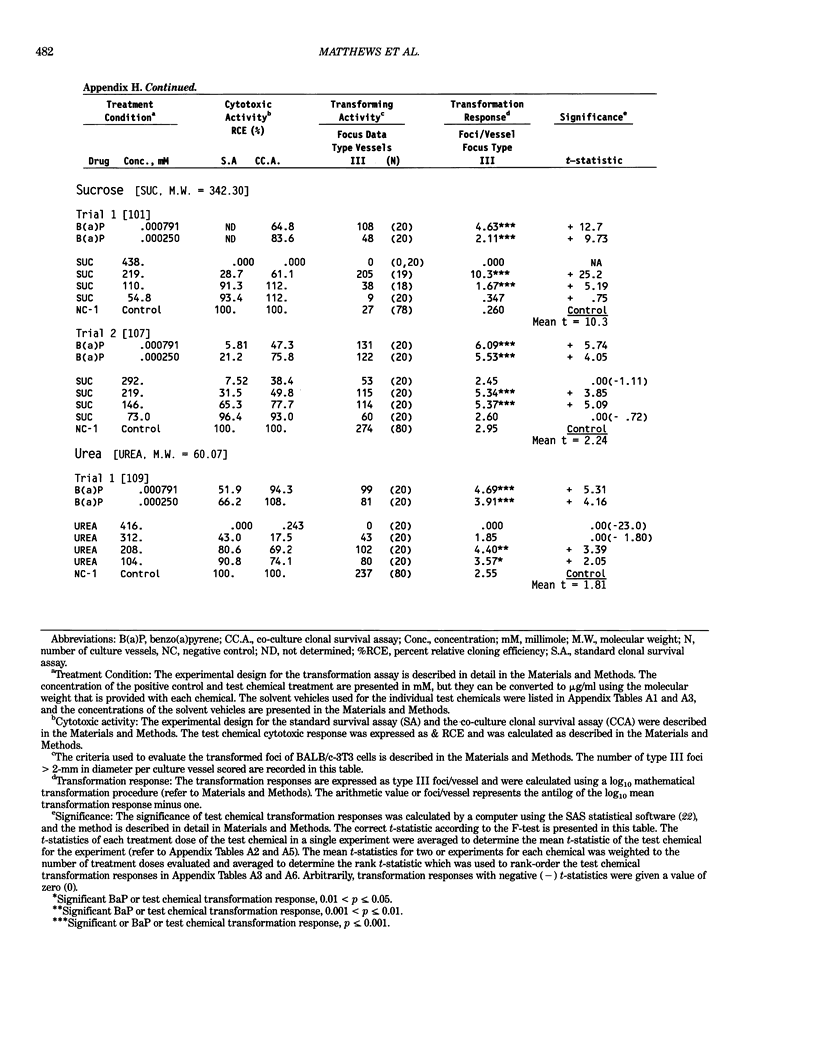
Selected References
These references are in PubMed. This may not be the complete list of references from this article.
- Ashby J., Tennant R. W. Chemical structure, Salmonella mutagenicity and extent of carcinogenicity as indicators of genotoxic carcinogenesis among 222 chemicals tested in rodents by the U.S. NCI/NTP. Mutat Res. 1988 Jan;204(1):17–115. doi: 10.1016/0165-1218(88)90114-0. [DOI] [PubMed] [Google Scholar]
- Dunkel V. C., Pienta R. J., Sivak A., Traul K. A. Comparative neoplastic transformation responses of Balb/3T3 cells, Syrian hamster embryo cells, and Rauscher murine leukemia virus-infected Fischer 344 rat embryo cells to chemical compounds. J Natl Cancer Inst. 1981 Dec;67(6):1303–1312. [PubMed] [Google Scholar]
- Fitzgerald D. J., Piccoli C., Yamasaki H. Detection of non-genotoxic carcinogens in the BALB/c 3T3 cell transformation/mutation assay system. Mutagenesis. 1989 Jul;4(4):286–291. doi: 10.1093/mutage/4.4.286. [DOI] [PubMed] [Google Scholar]
- Heidelberger C., Freeman A. E., Pienta R. J., Sivak A., Bertram J. S., Casto B. C., Dunkel V. C., Francis M. W., Kakunaga T., Little J. B. Cell transformation by chemical agents--a review and analysis of the literature. A report of the U.S. Environmental Protection Agency Gene-Tox Program. Mutat Res. 1983 Apr;114(3):283–385. doi: 10.1016/0165-1110(83)90036-2. [DOI] [PubMed] [Google Scholar]
- Kakunaga T. A quantitative system for assay of malignant transformation by chemical carcinogens using a clone derived from BALB-3T3. Int J Cancer. 1973 Sep 15;12(2):463–473. doi: 10.1002/ijc.2910120217. [DOI] [PubMed] [Google Scholar]
- Kakunaga T., Crow J. D. Cell variants showing differential susceptibility to ultraviolet light--induced transformation. Science. 1980 Jul 25;209(4455):505–507. doi: 10.1126/science.7394516. [DOI] [PubMed] [Google Scholar]
- Lo K. Y., Kakunaga T. Similarities in the formation and removal of covalent DNA adducts in benzo(a)pyrene-treated BALB/3T3 variant cells with different induced transformation frequencies. Cancer Res. 1982 Jul;42(7):2644–2650. [PubMed] [Google Scholar]
- Matthews E. J., Spalding J. W., Tennant R. W. Transformation of BALB/c-3T3 cells: IV. Rank-ordered potency of 24 chemical responses detected in a sensitive new assay procedure. Environ Health Perspect. 1993 Jul;101 (Suppl 2):319–345. doi: 10.1289/ehp.93101s2319. [DOI] [PMC free article] [PubMed] [Google Scholar]
- Matthews E. J. Transformation of BALB/c-3T3 cells: I. Investigation of experimental parameters that influence detection of spontaneous transformation. Environ Health Perspect. 1993 Jul;101 (Suppl 2):277–291. doi: 10.1289/ehp.93101s2277. [DOI] [PMC free article] [PubMed] [Google Scholar]
- Matthews E. J. Transformation of BALB/c-3T3 cells: II. Investigation of experimental parameters that influence detection of benzo[a]pyrene-induced transformation. Environ Health Perspect. 1993 Jul;101 (Suppl 2):293–310. doi: 10.1289/ehp.93101s2293. [DOI] [PMC free article] [PubMed] [Google Scholar]
- Matthews E. J. Transformation of BALB/c-3T3 cells: III. Development of a co-culture clonal survival assay for quantification of chemical cytotoxicity in high-density cell cultures. Environ Health Perspect. 1993 Jul;101 (Suppl 2):311–318. doi: 10.1289/ehp.93101s2311. [DOI] [PMC free article] [PubMed] [Google Scholar]
- Reznikoff C. A., Bertram J. S., Brankow D. W., Heidelberger C. Quantitative and qualitative studies of chemical transformation of cloned C3H mouse embryo cells sensitive to postconfluence inhibition of cell division. Cancer Res. 1973 Dec;33(12):3239–3249. [PubMed] [Google Scholar]
- Tennant R. W., Margolin B. H., Shelby M. D., Zeiger E., Haseman J. K., Spalding J., Caspary W., Resnick M., Stasiewicz S., Anderson B. Prediction of chemical carcinogenicity in rodents from in vitro genetic toxicity assays. Science. 1987 May 22;236(4804):933–941. doi: 10.1126/science.3554512. [DOI] [PubMed] [Google Scholar]


